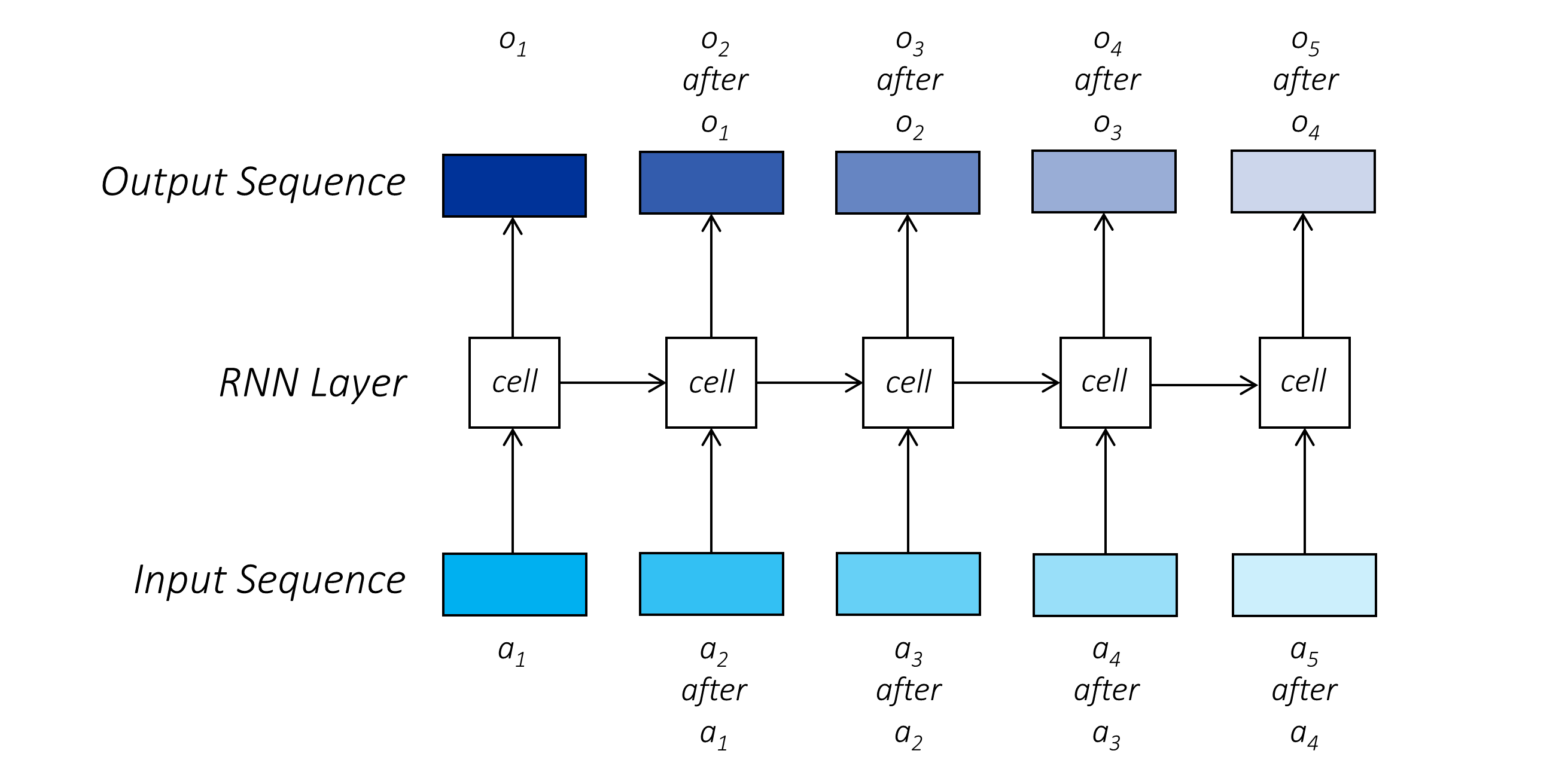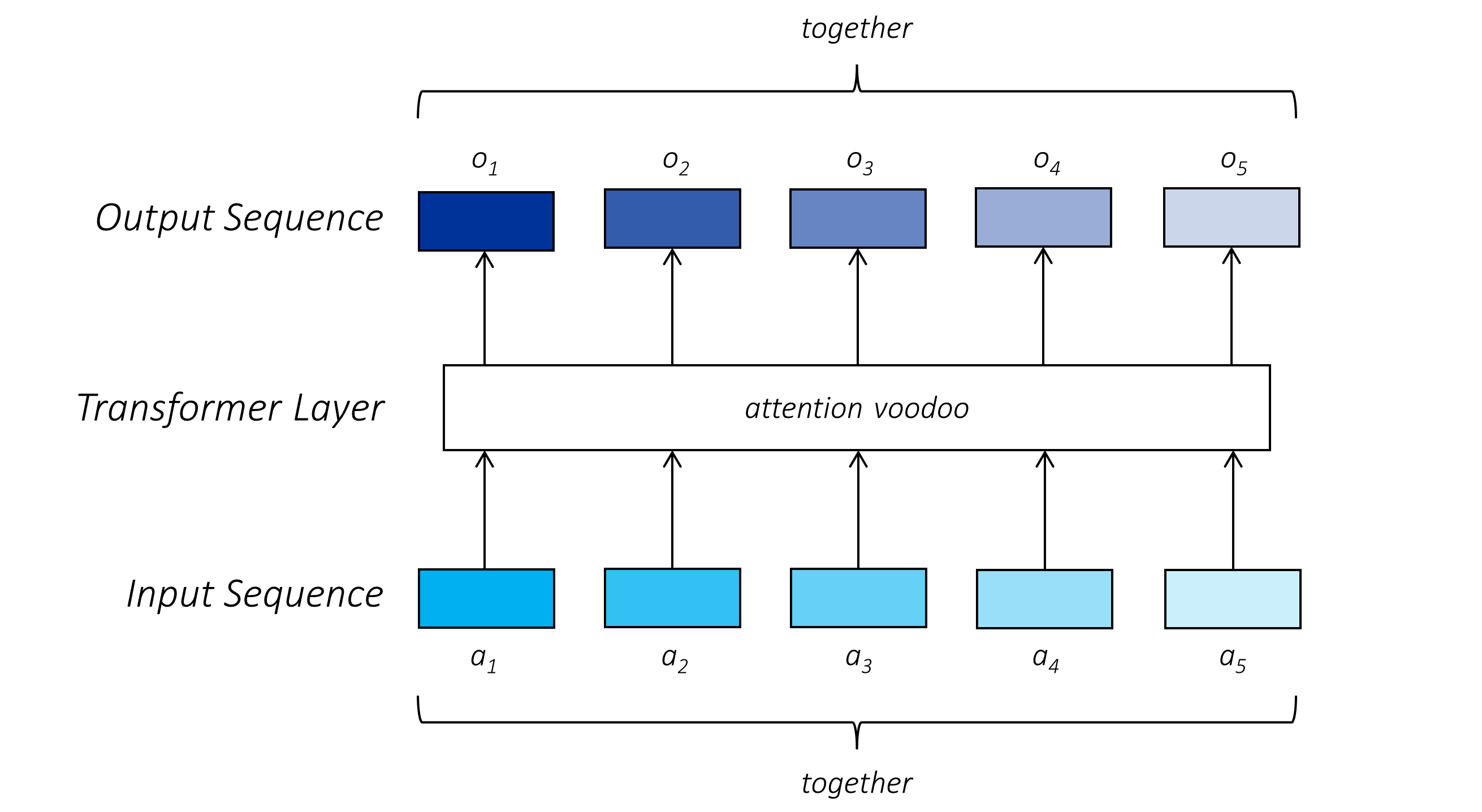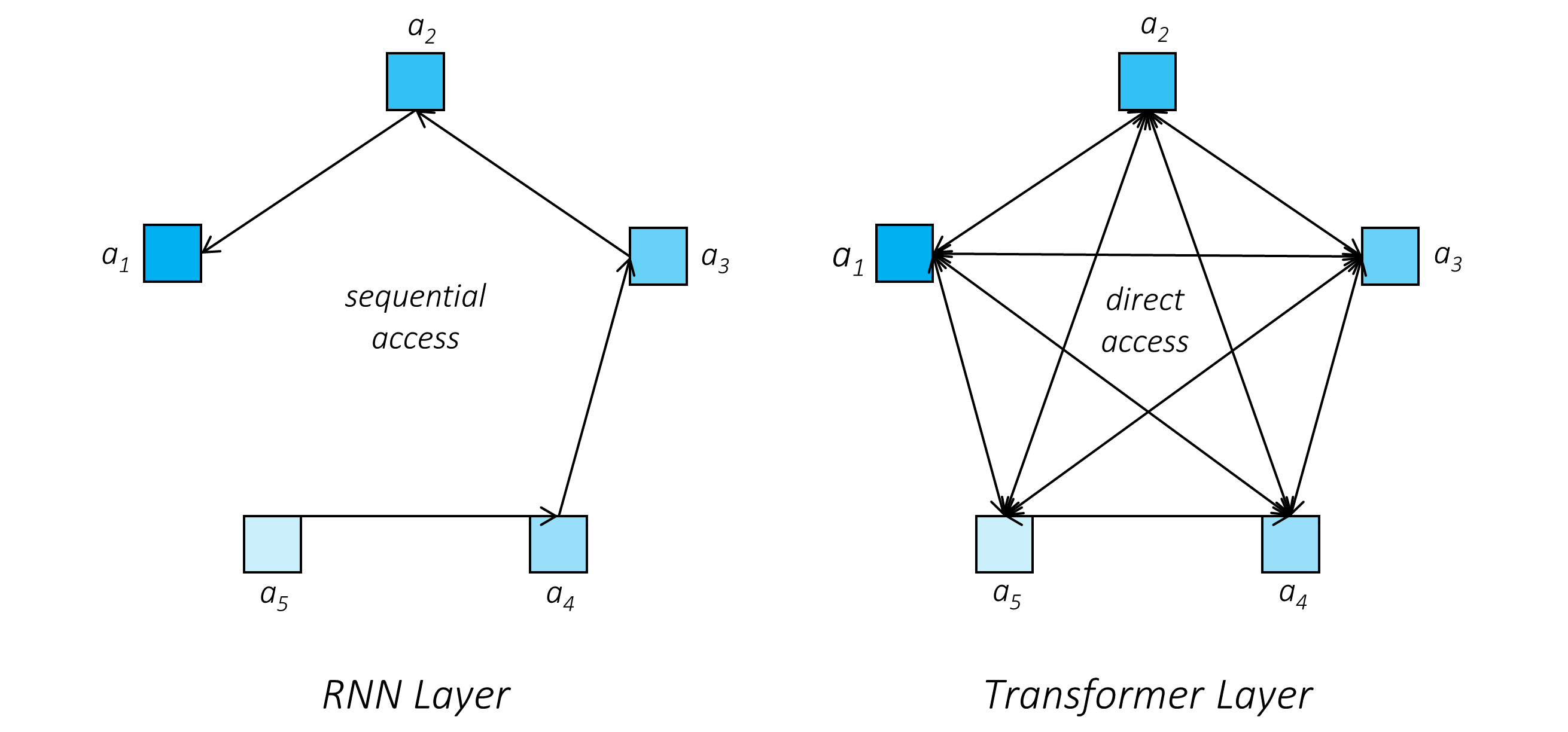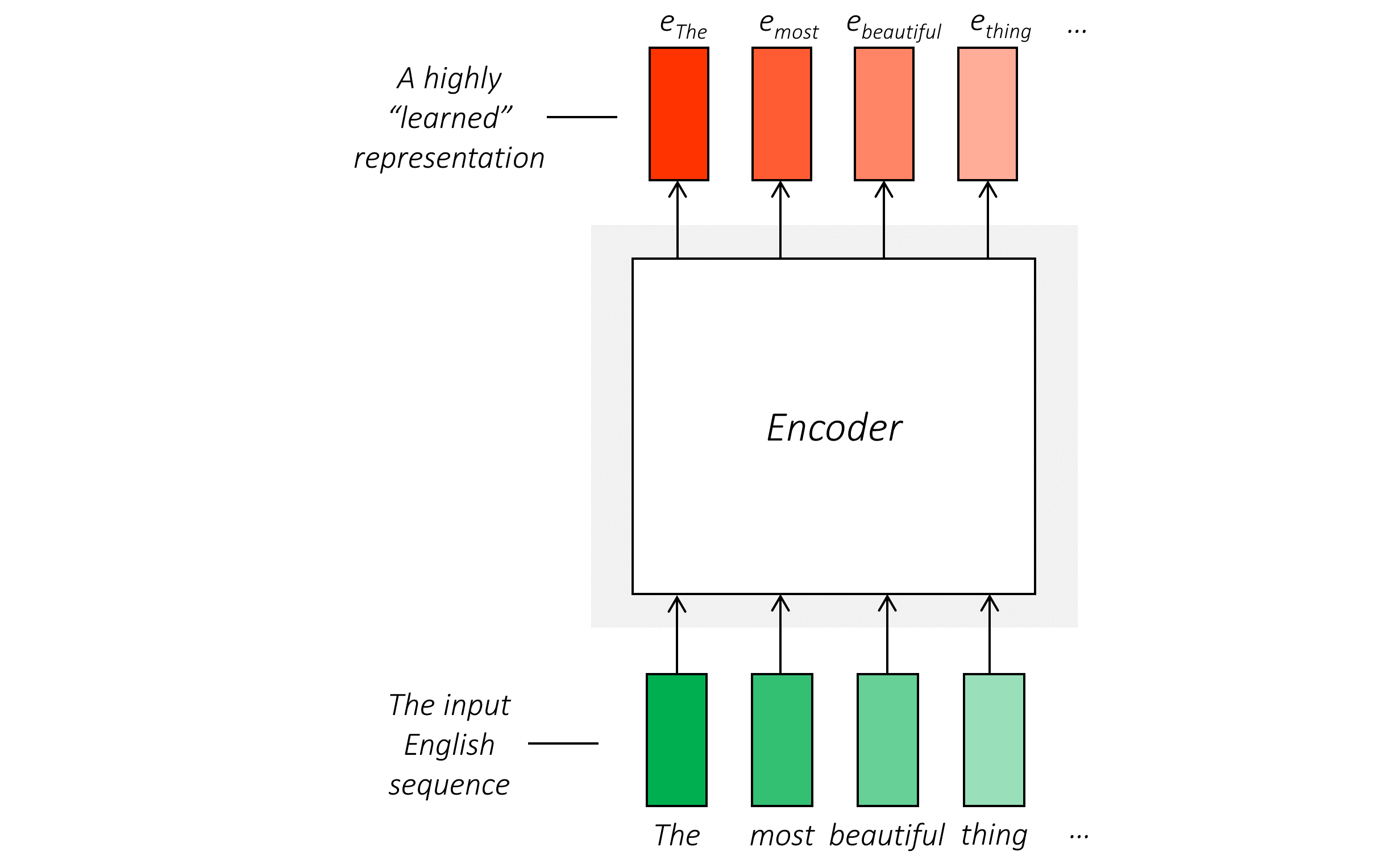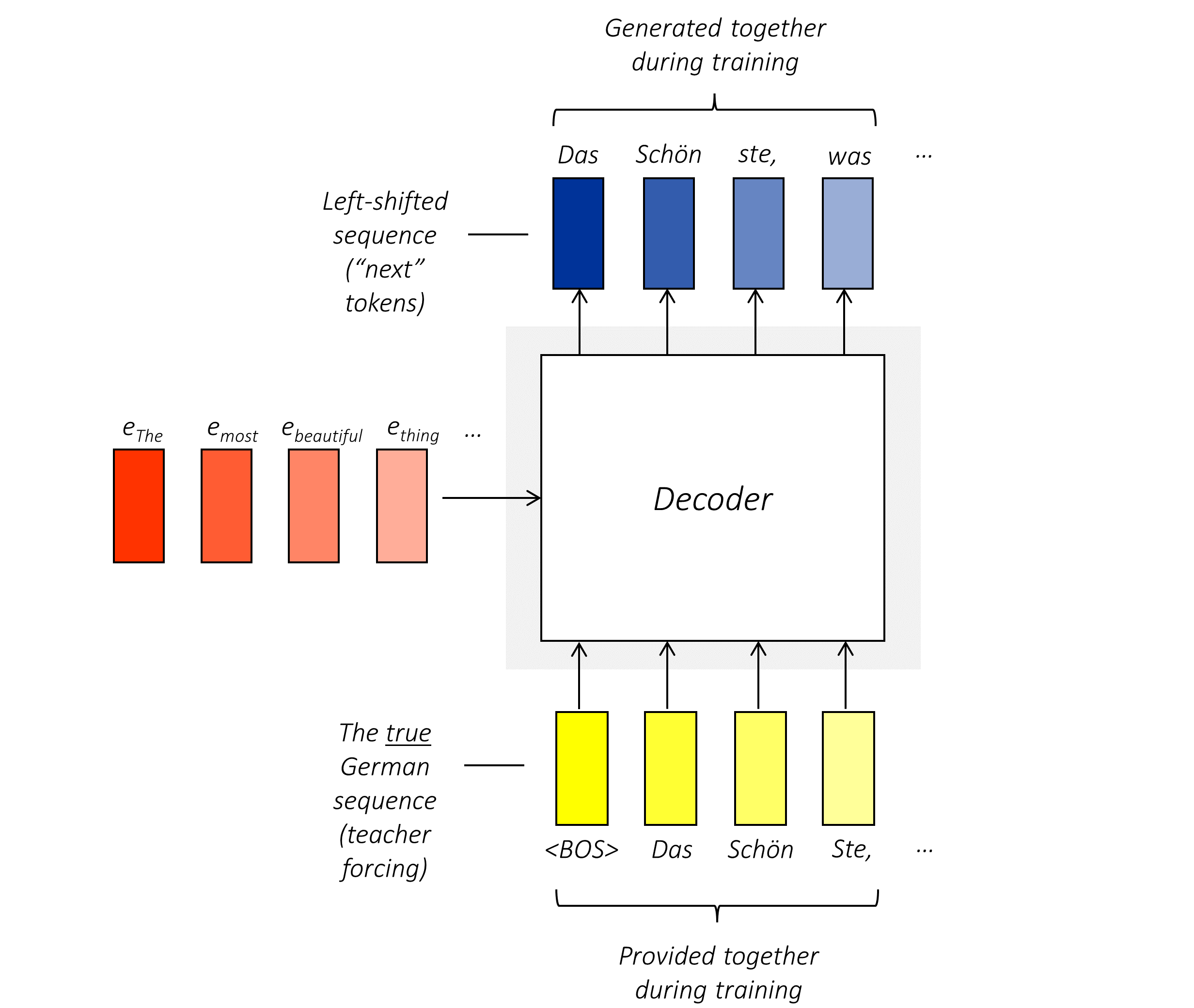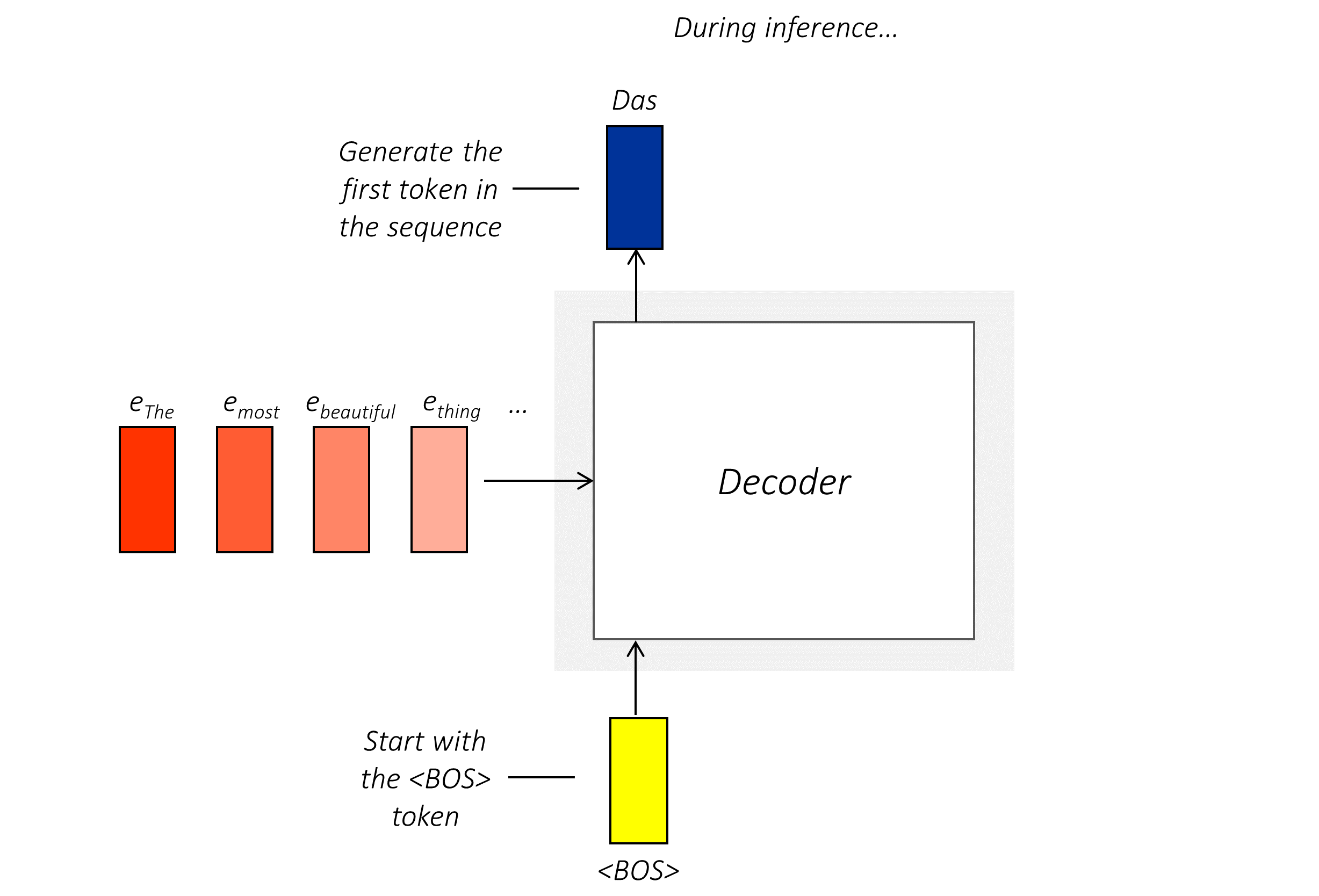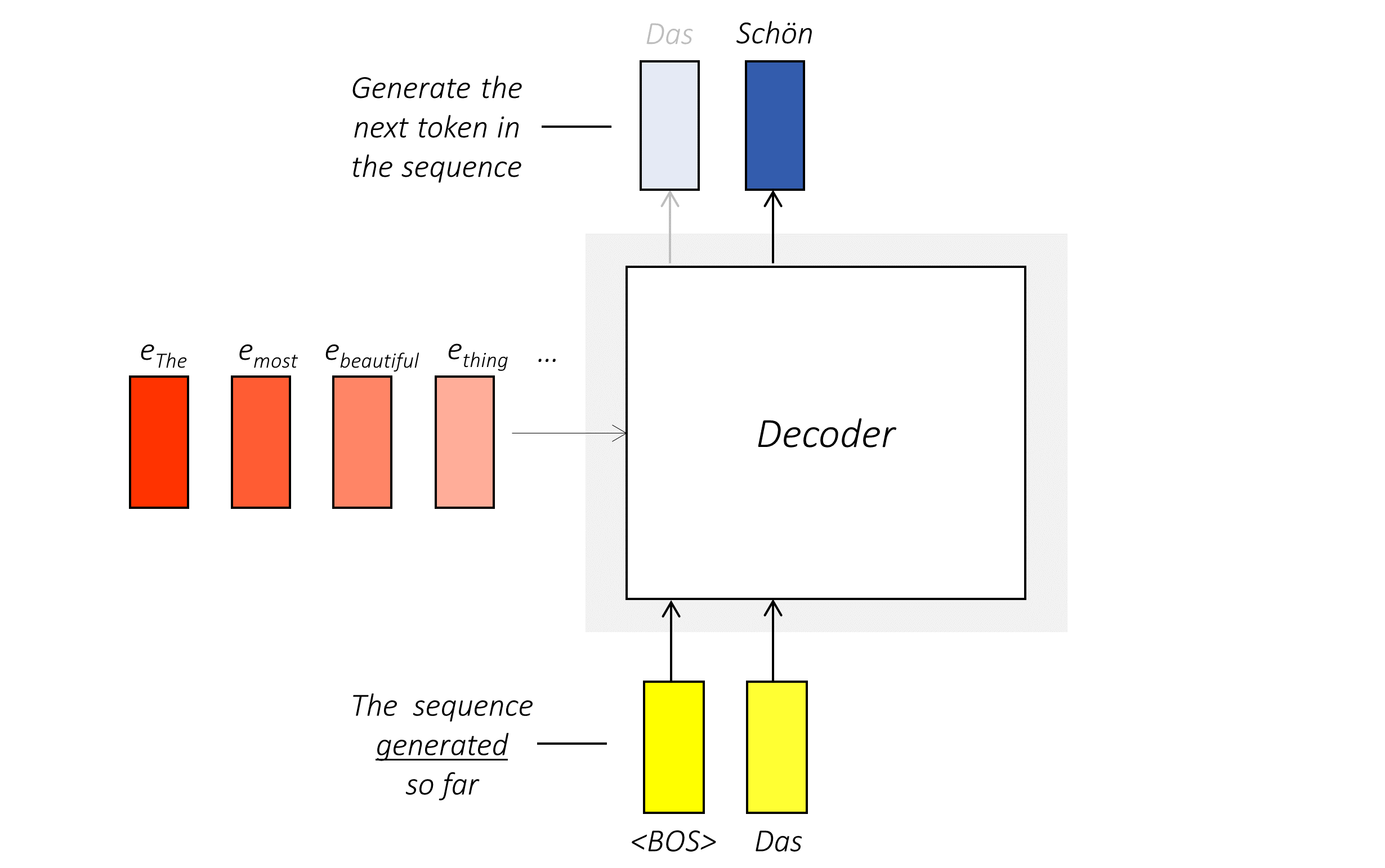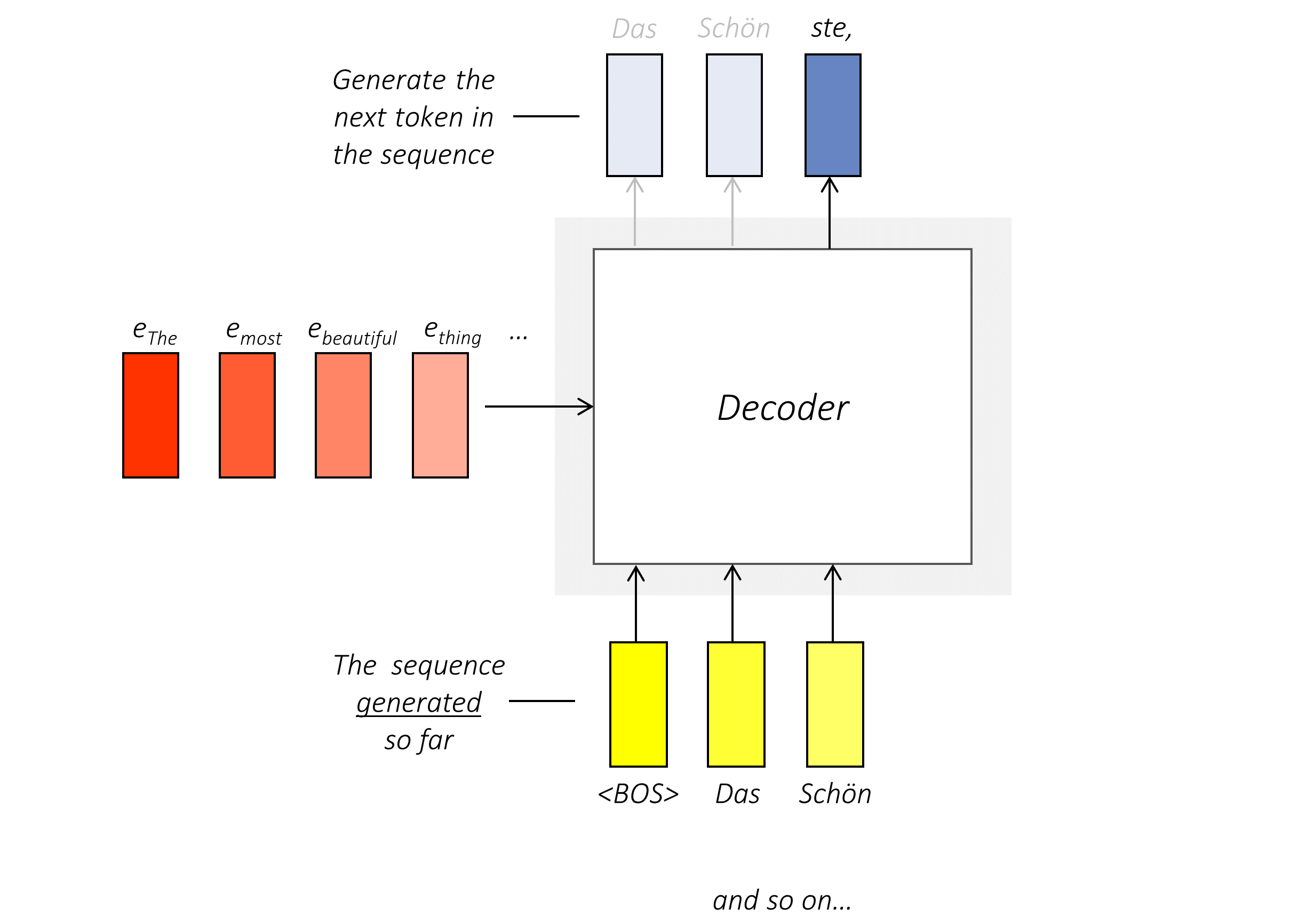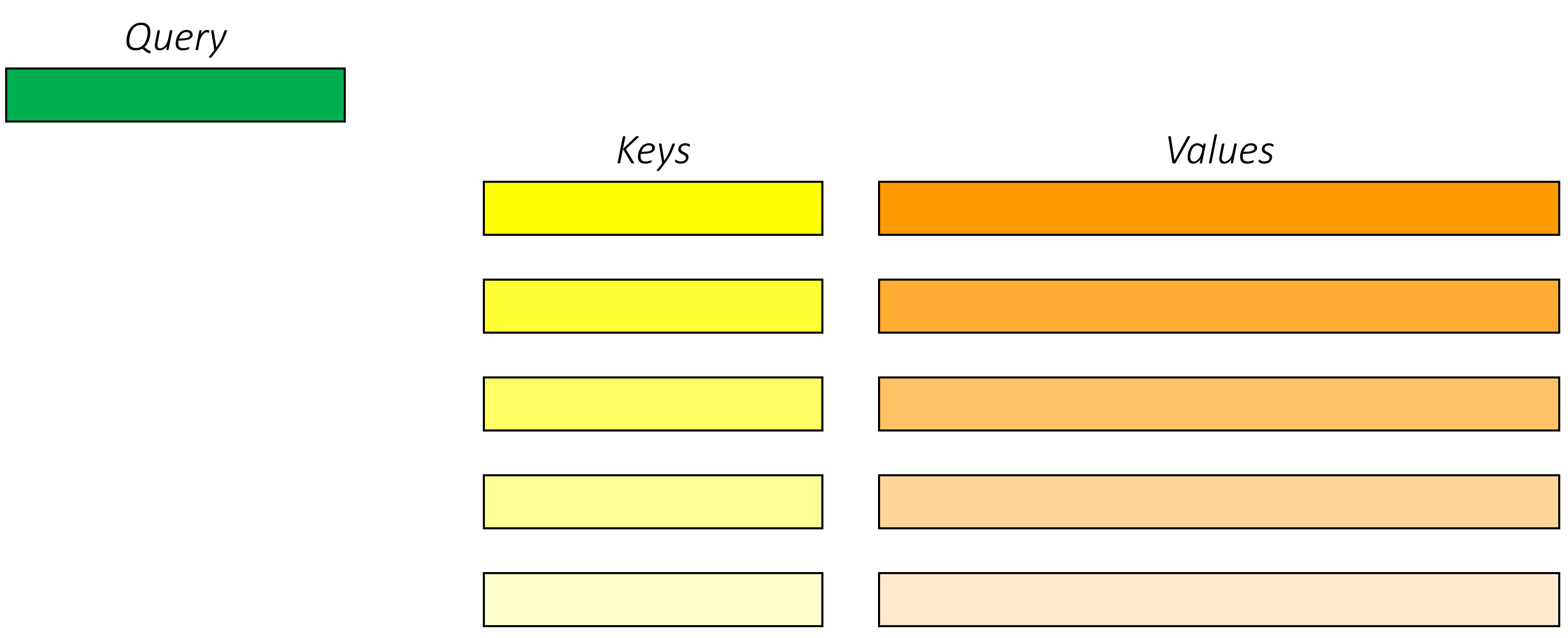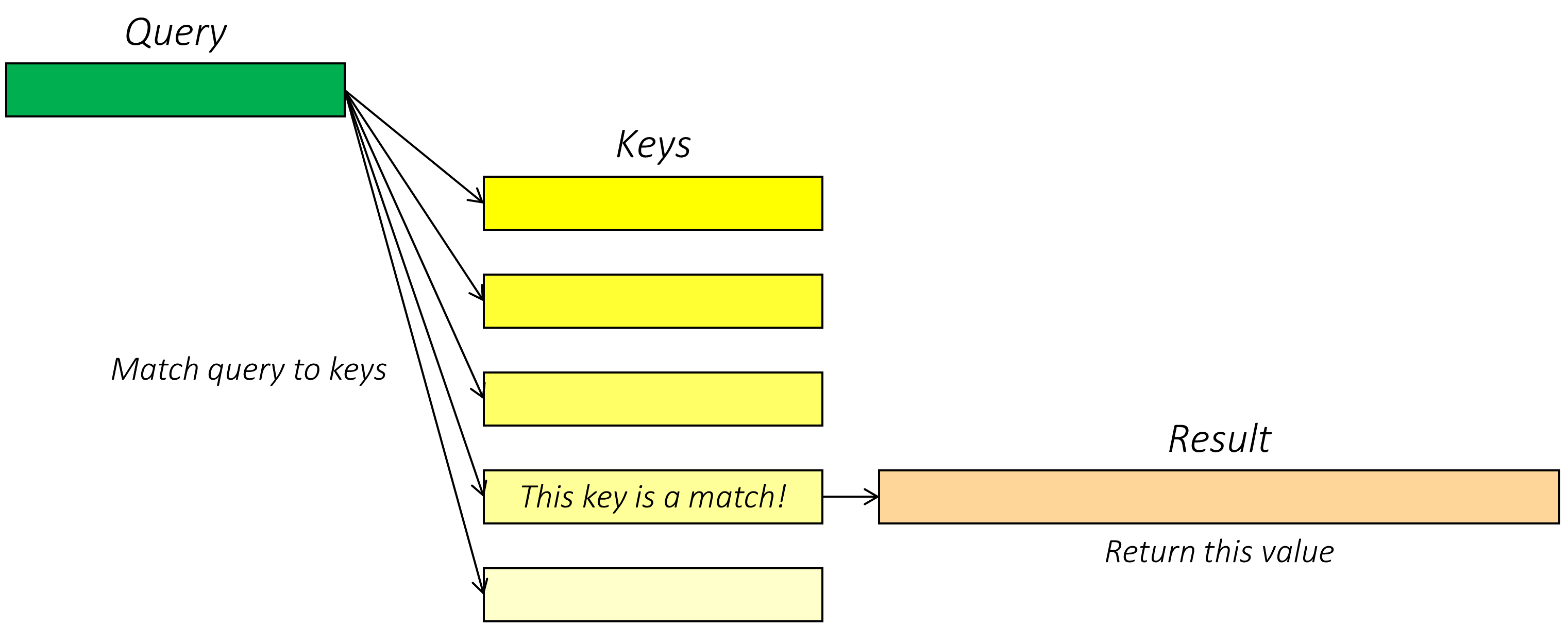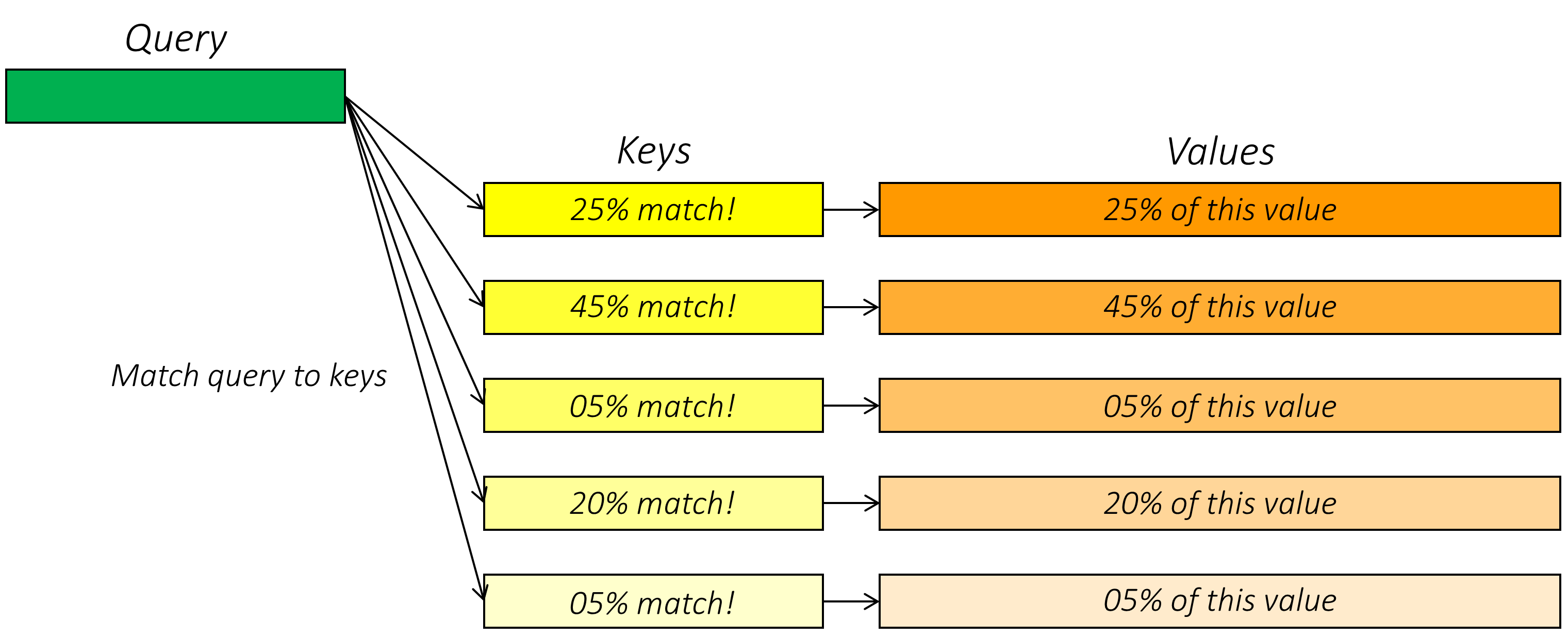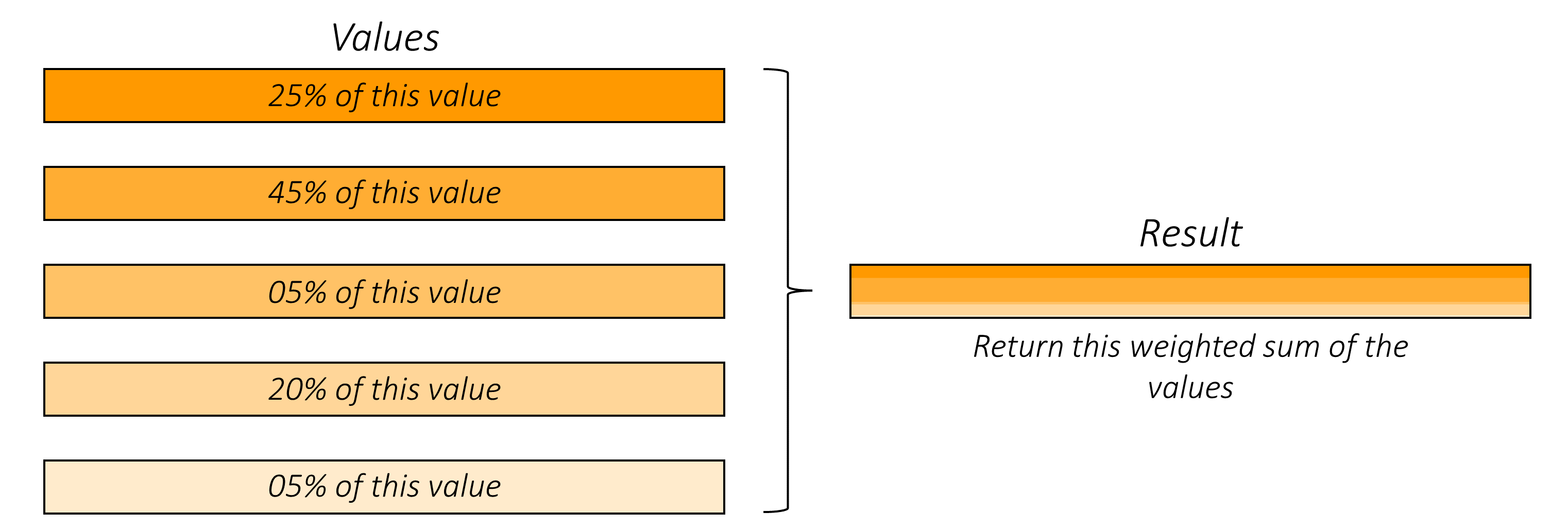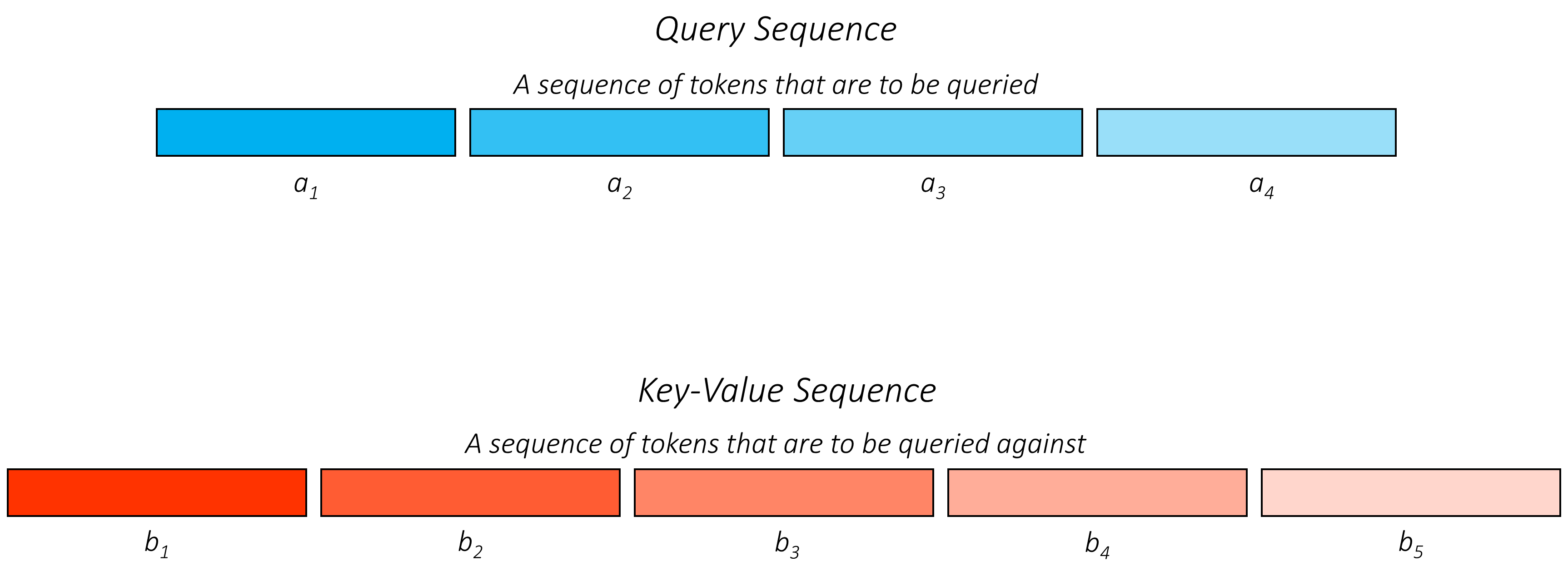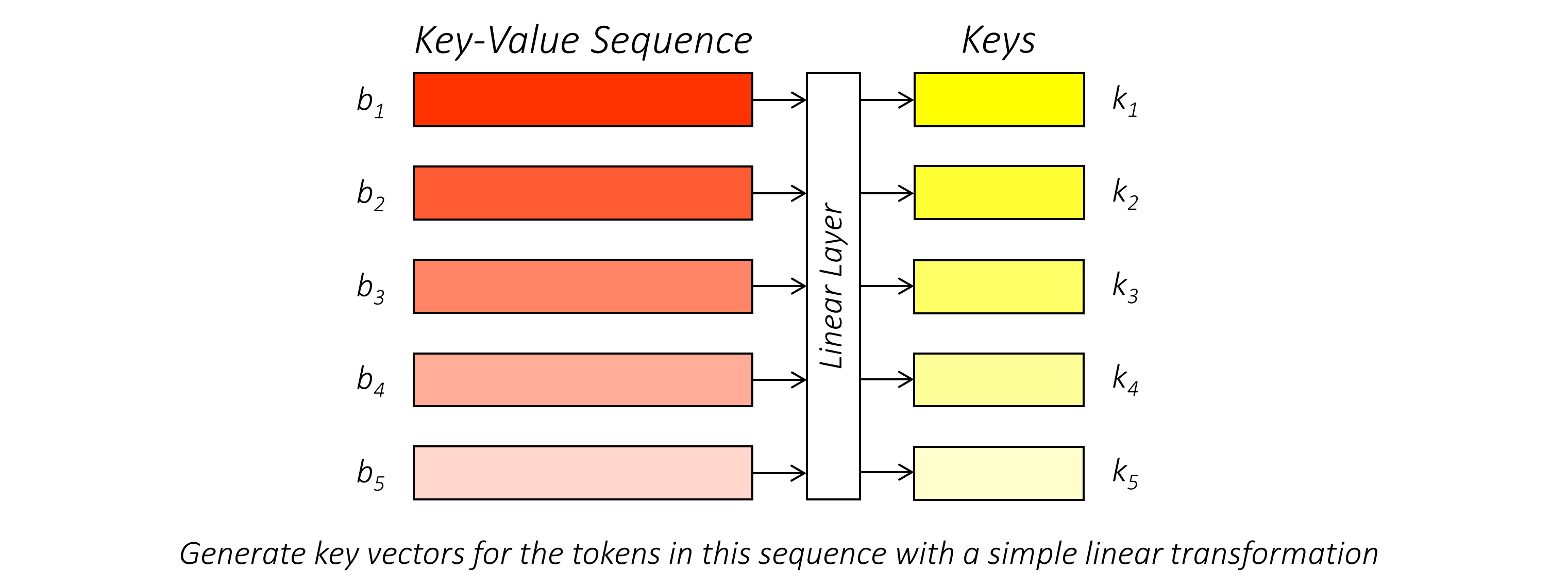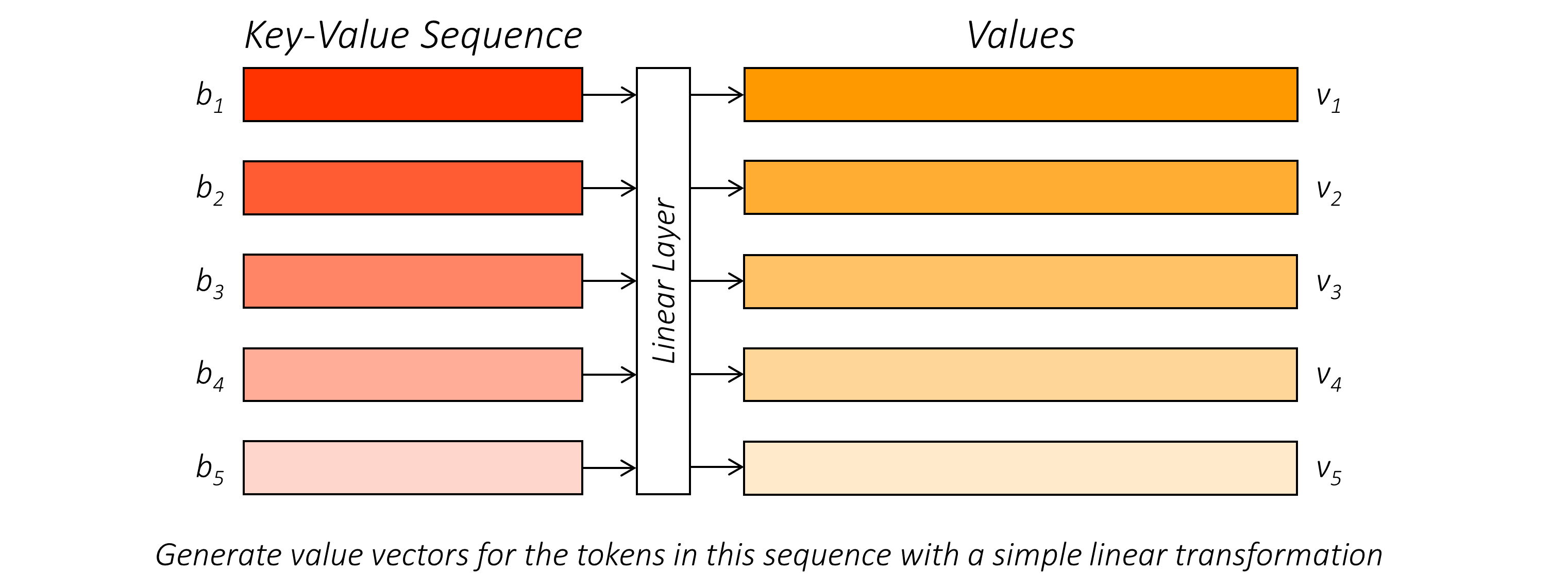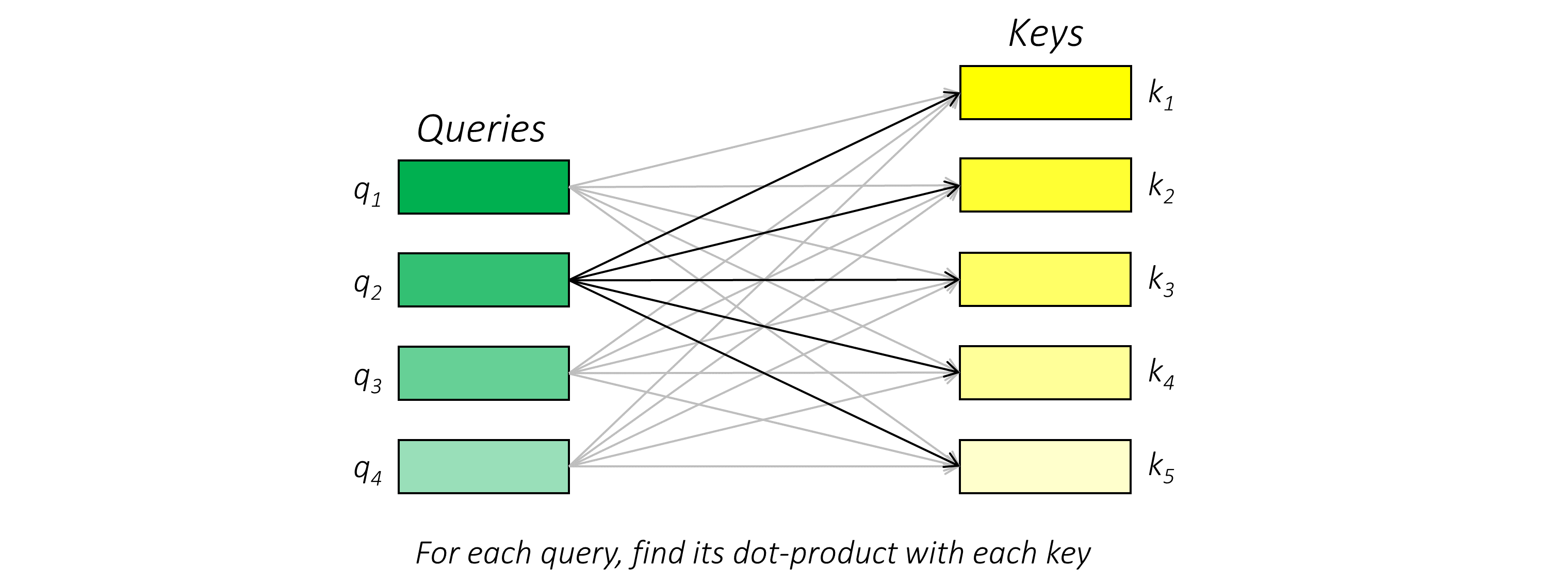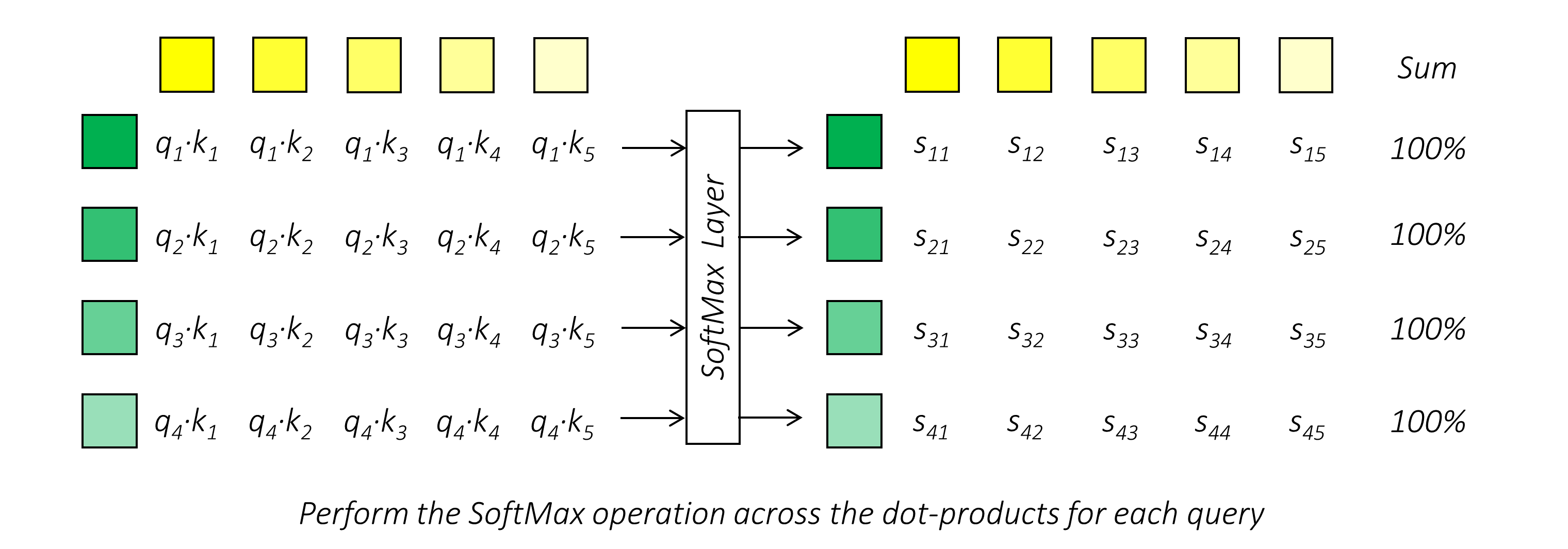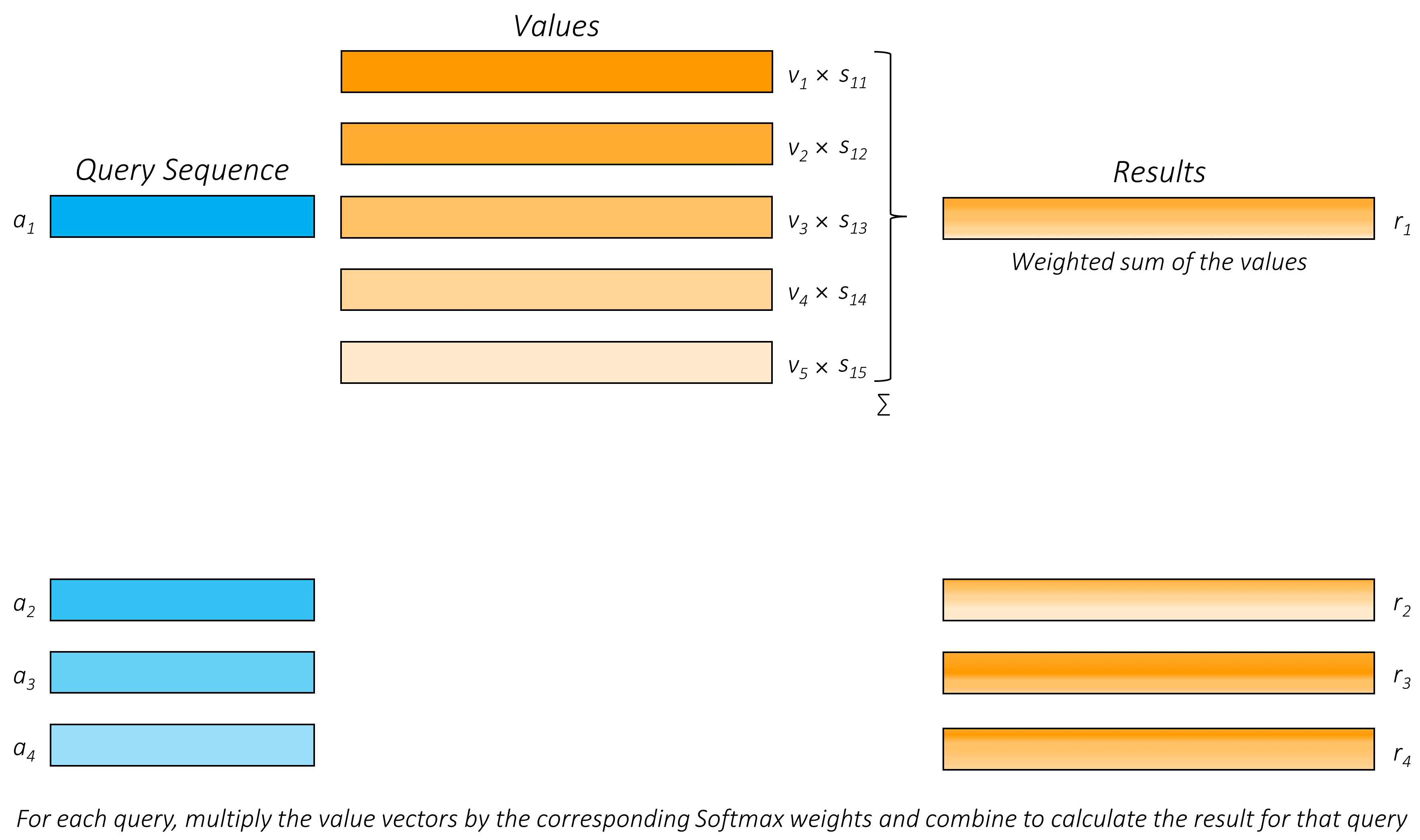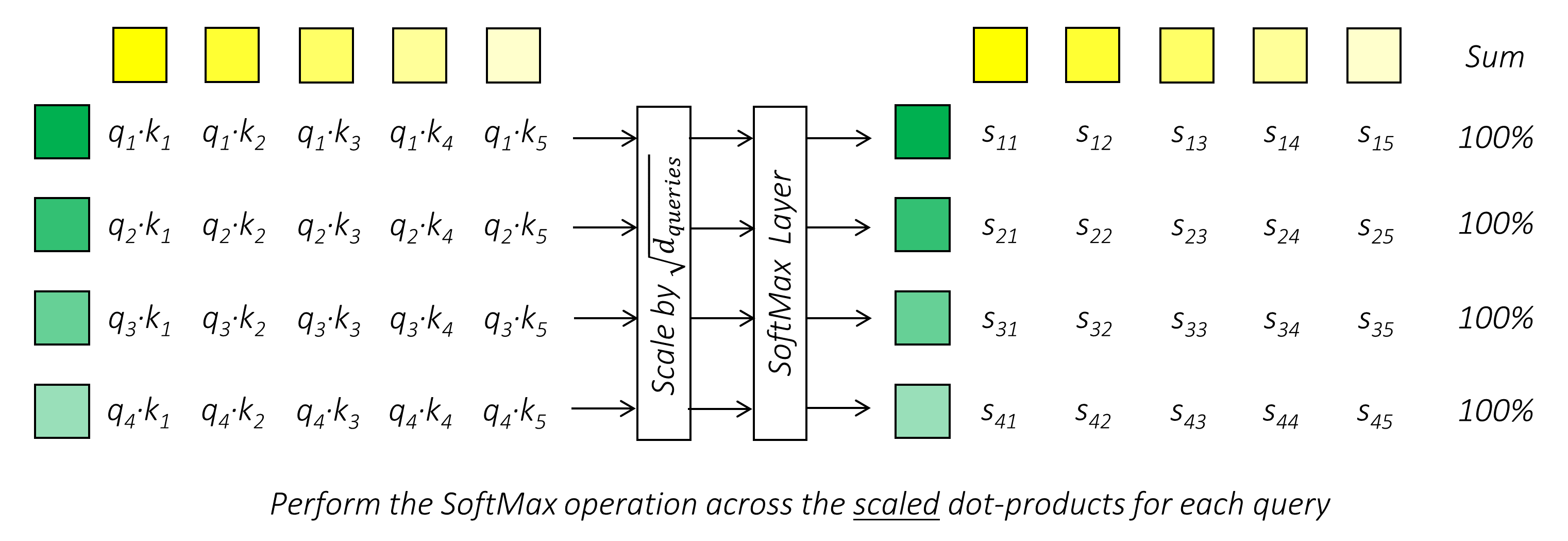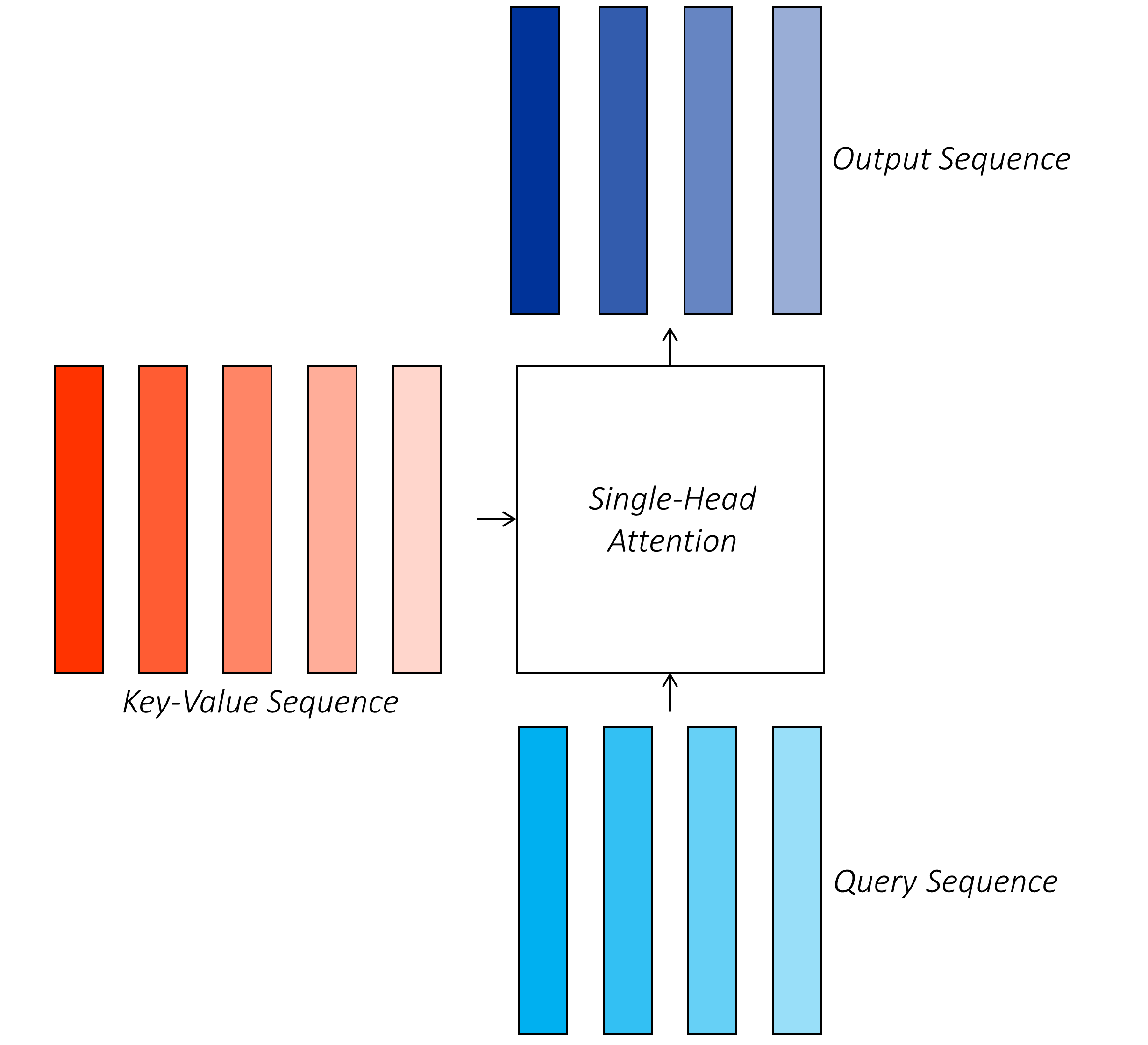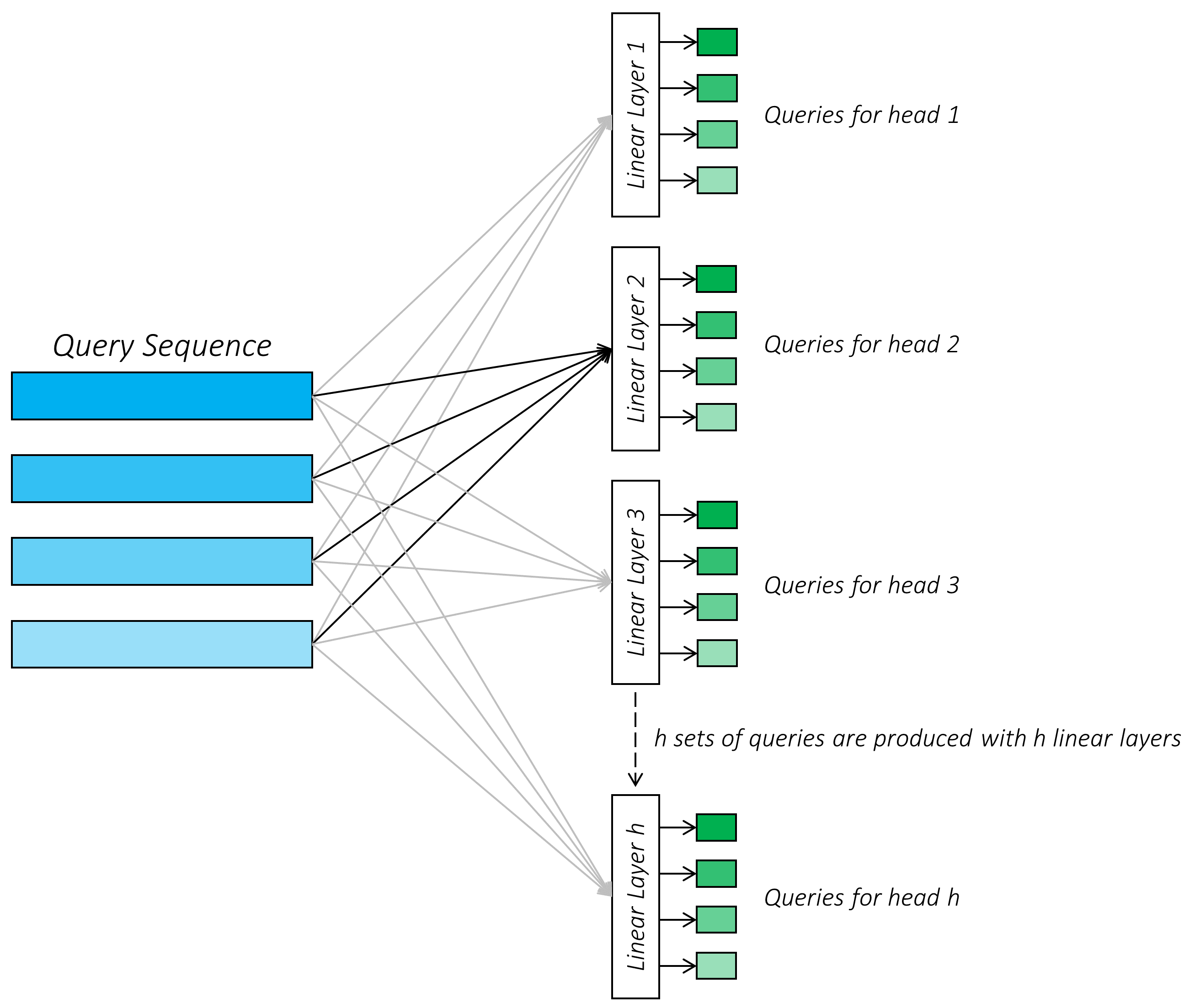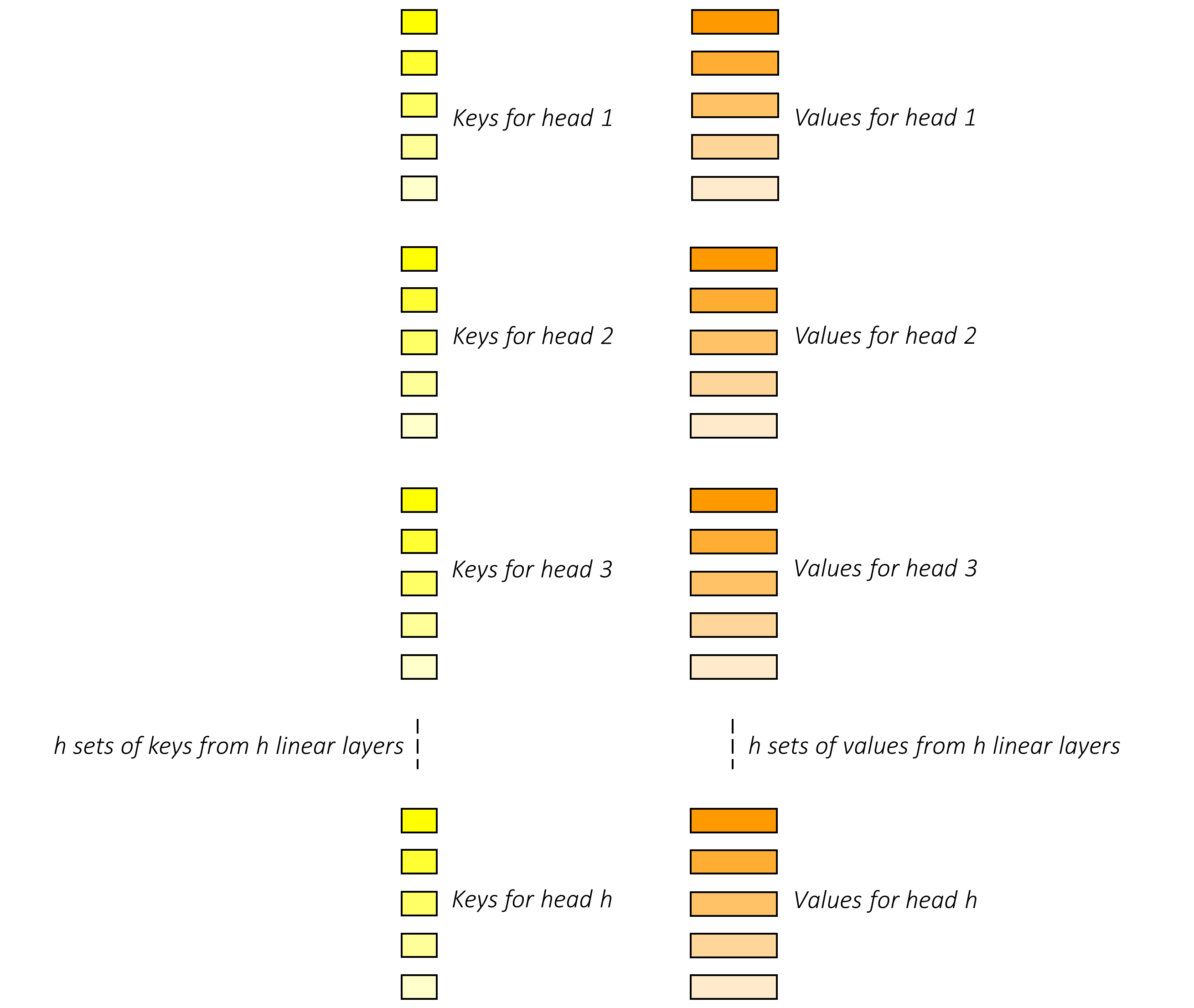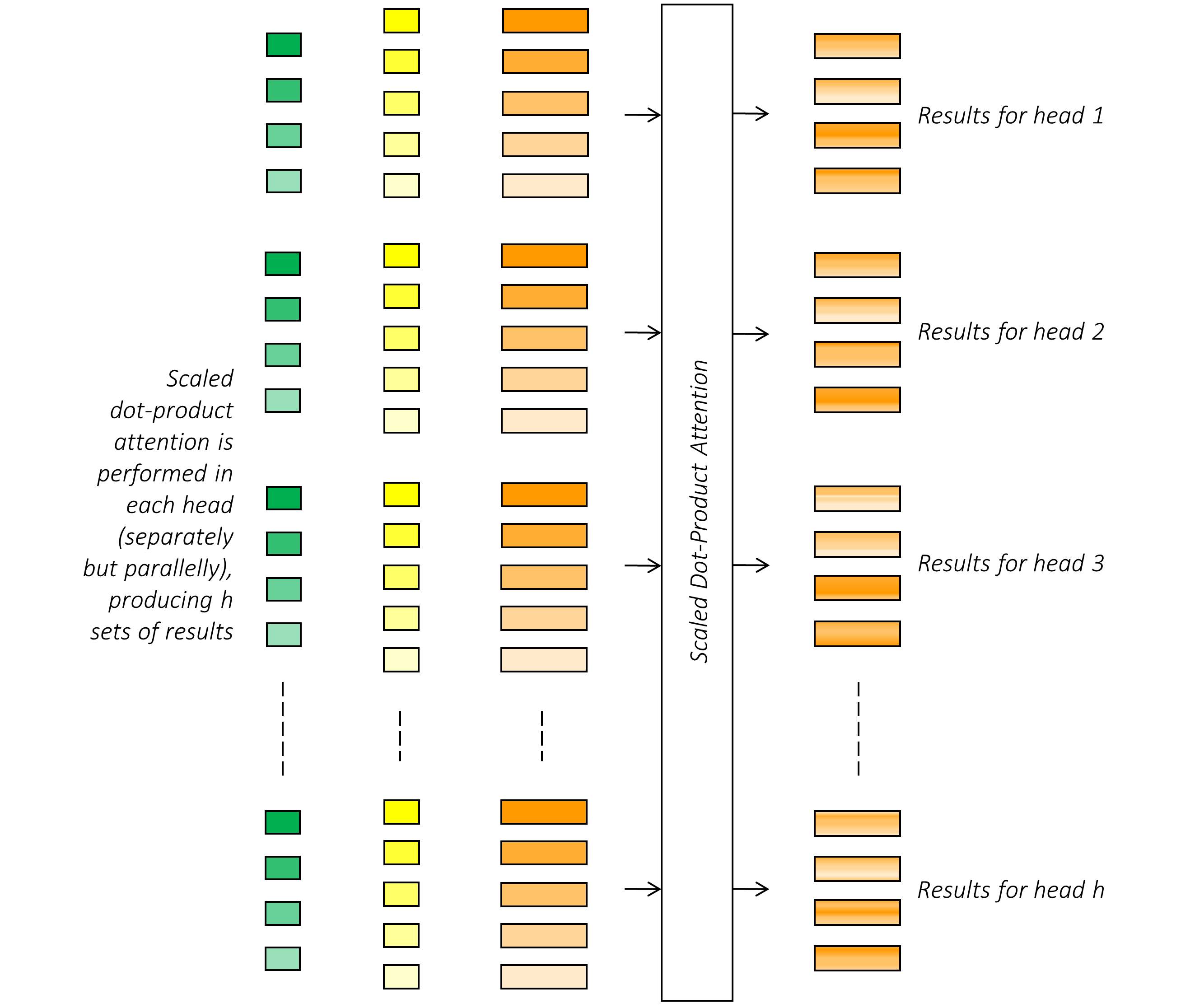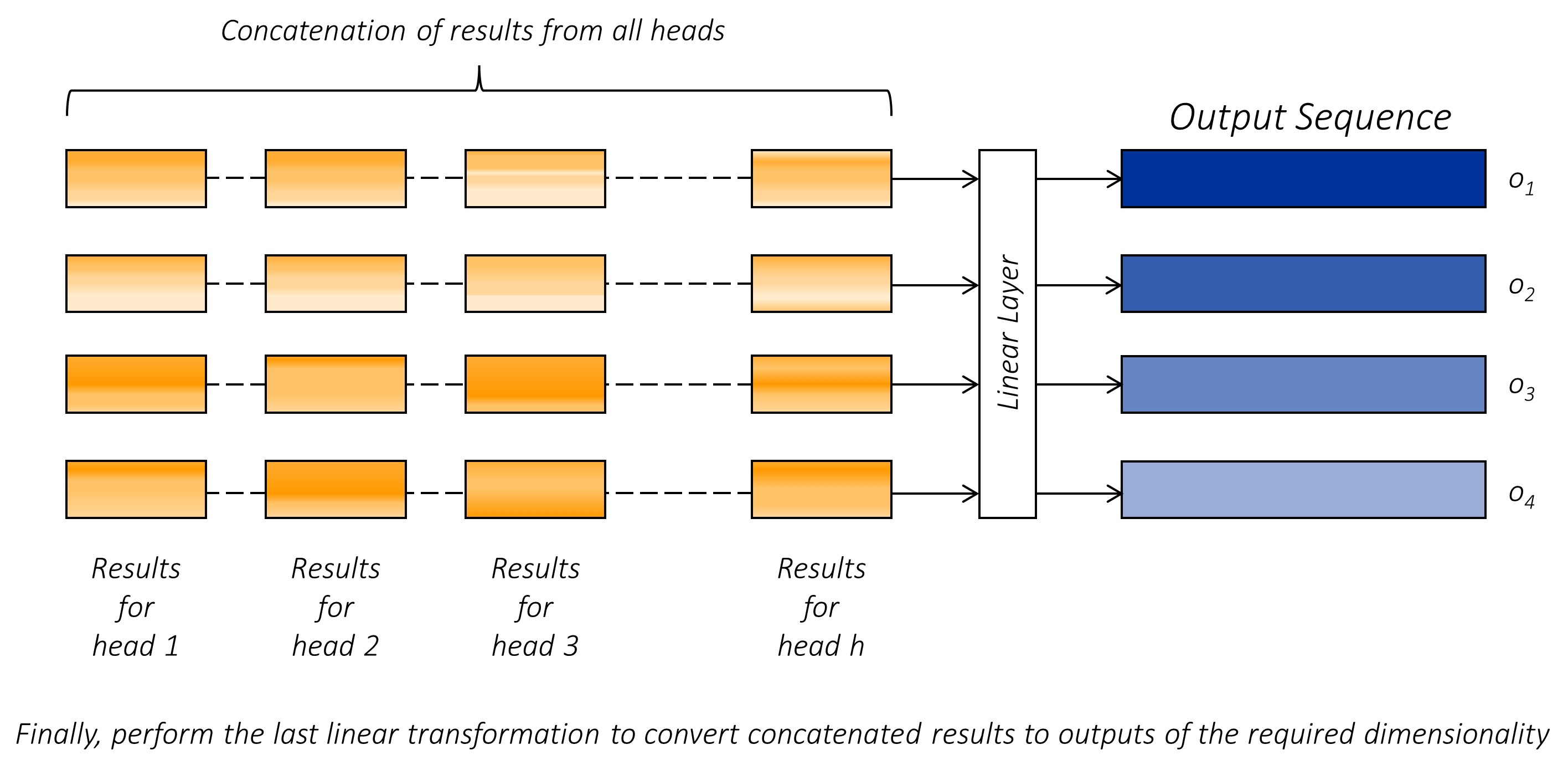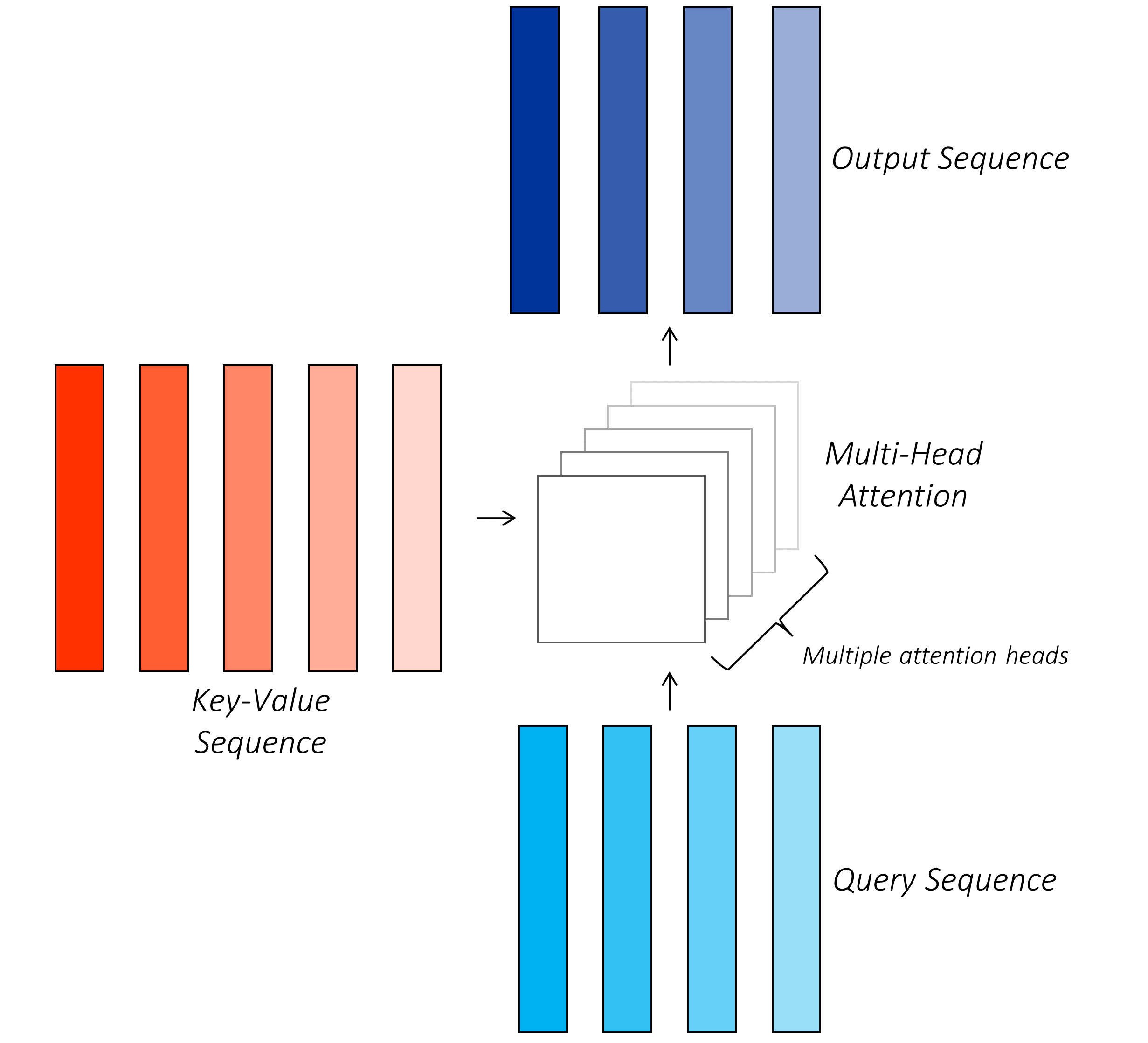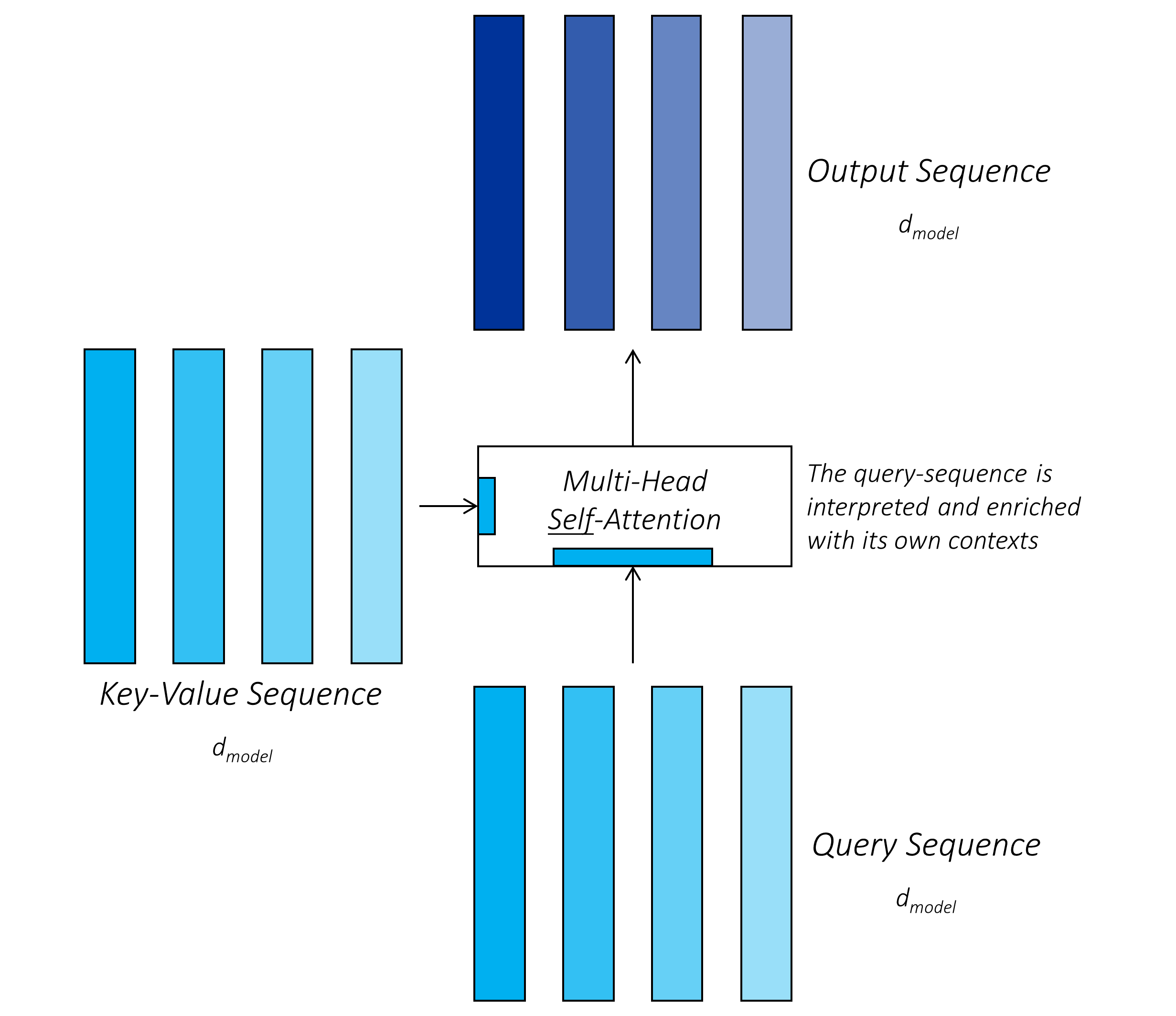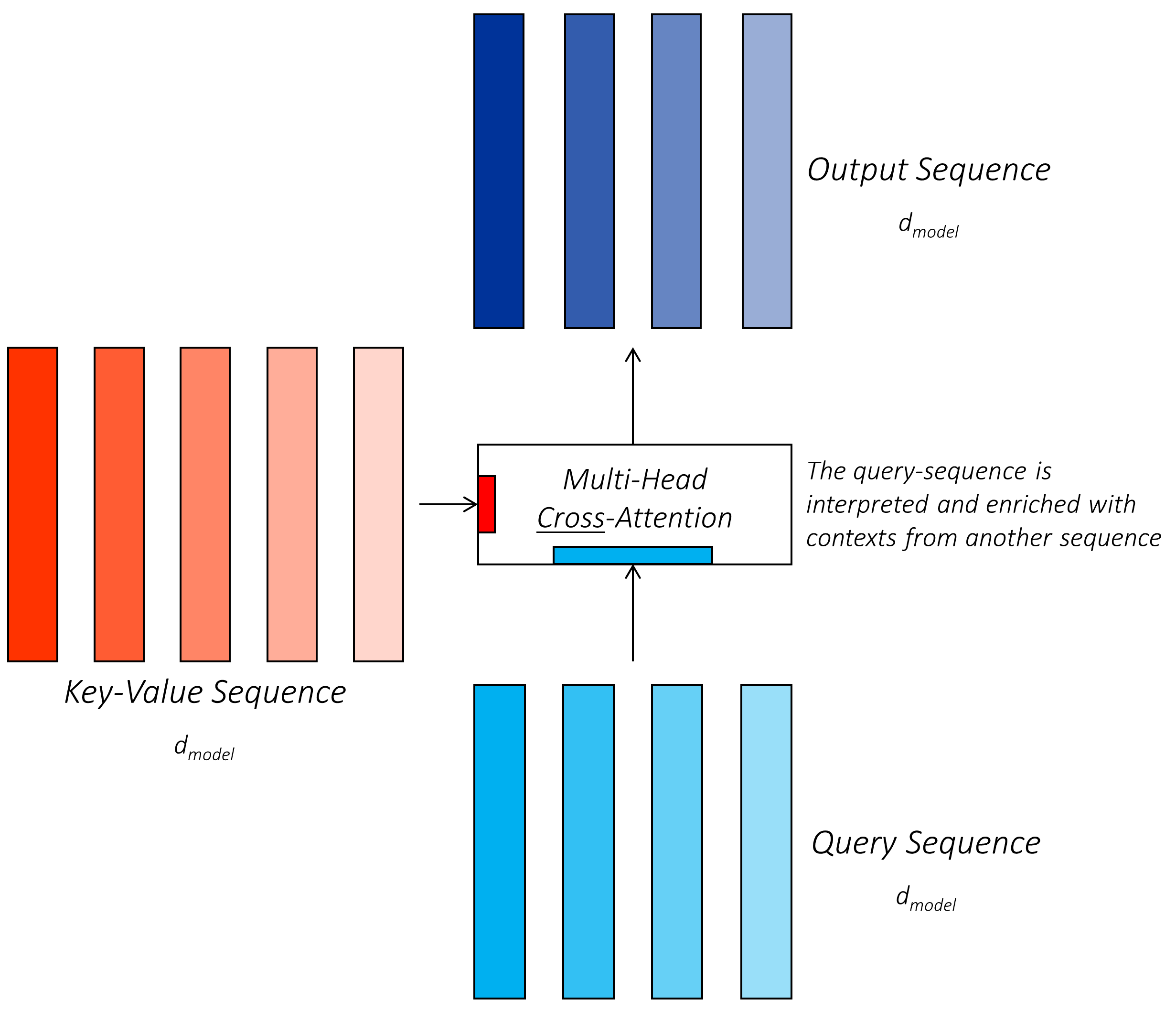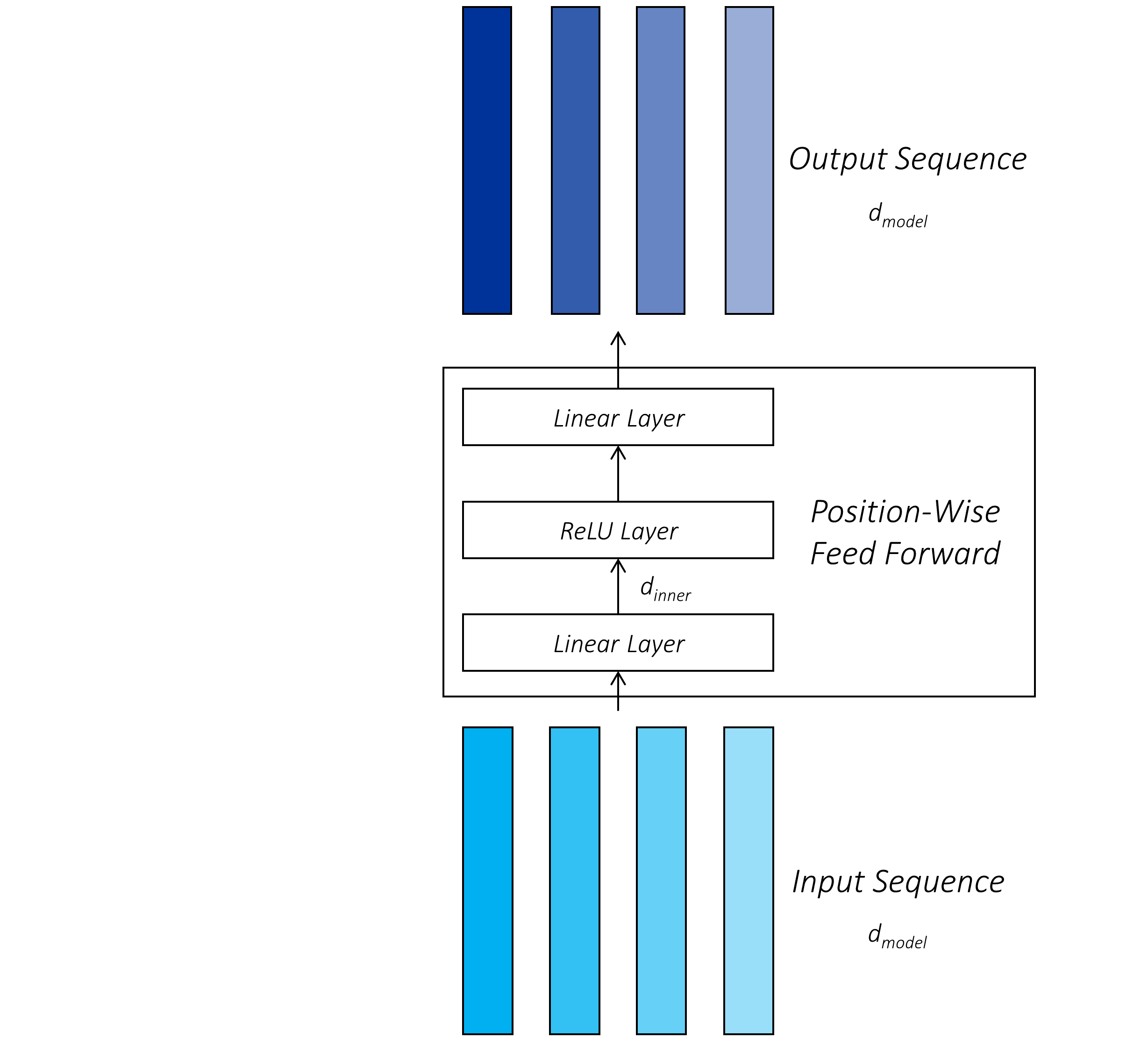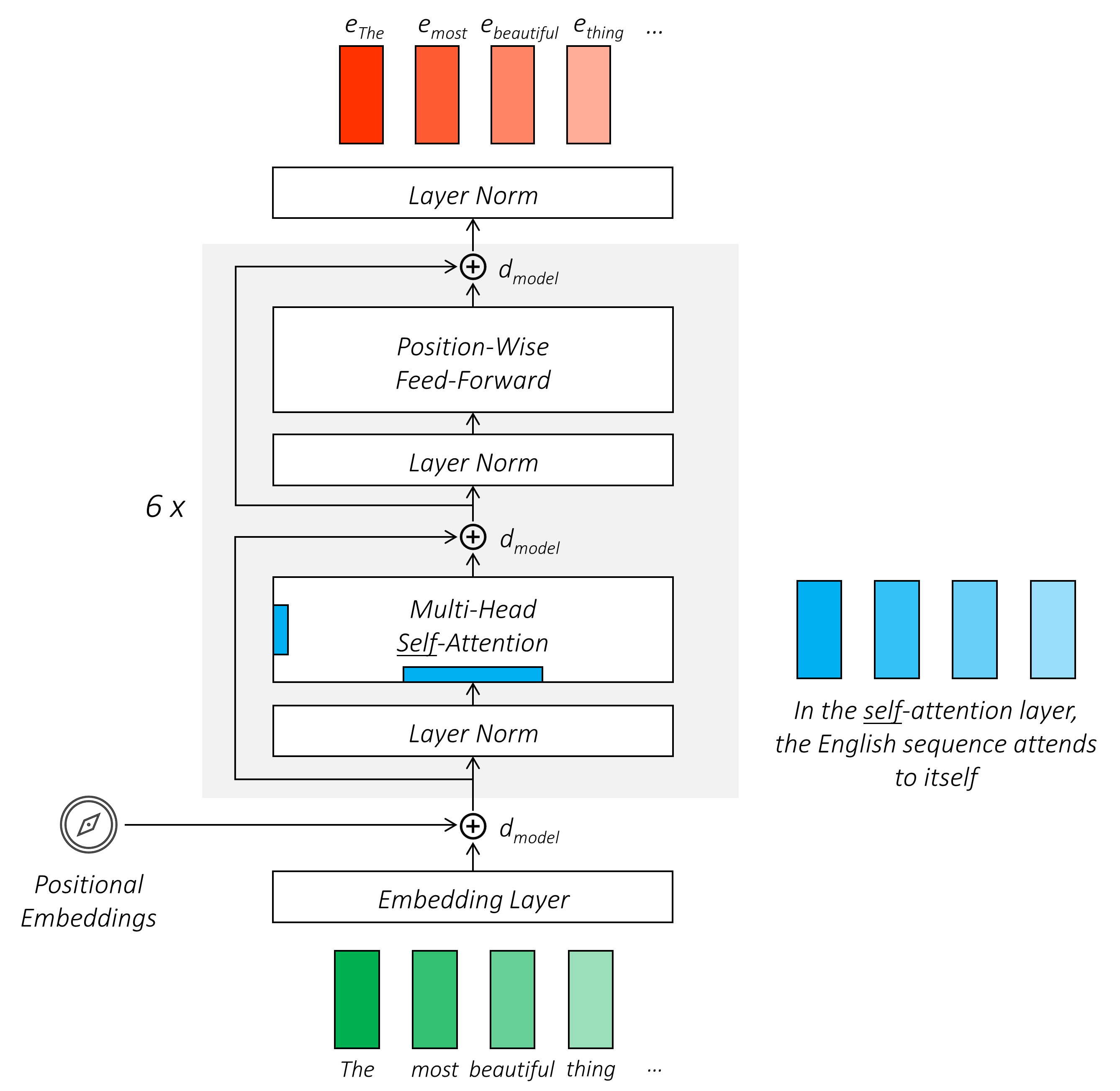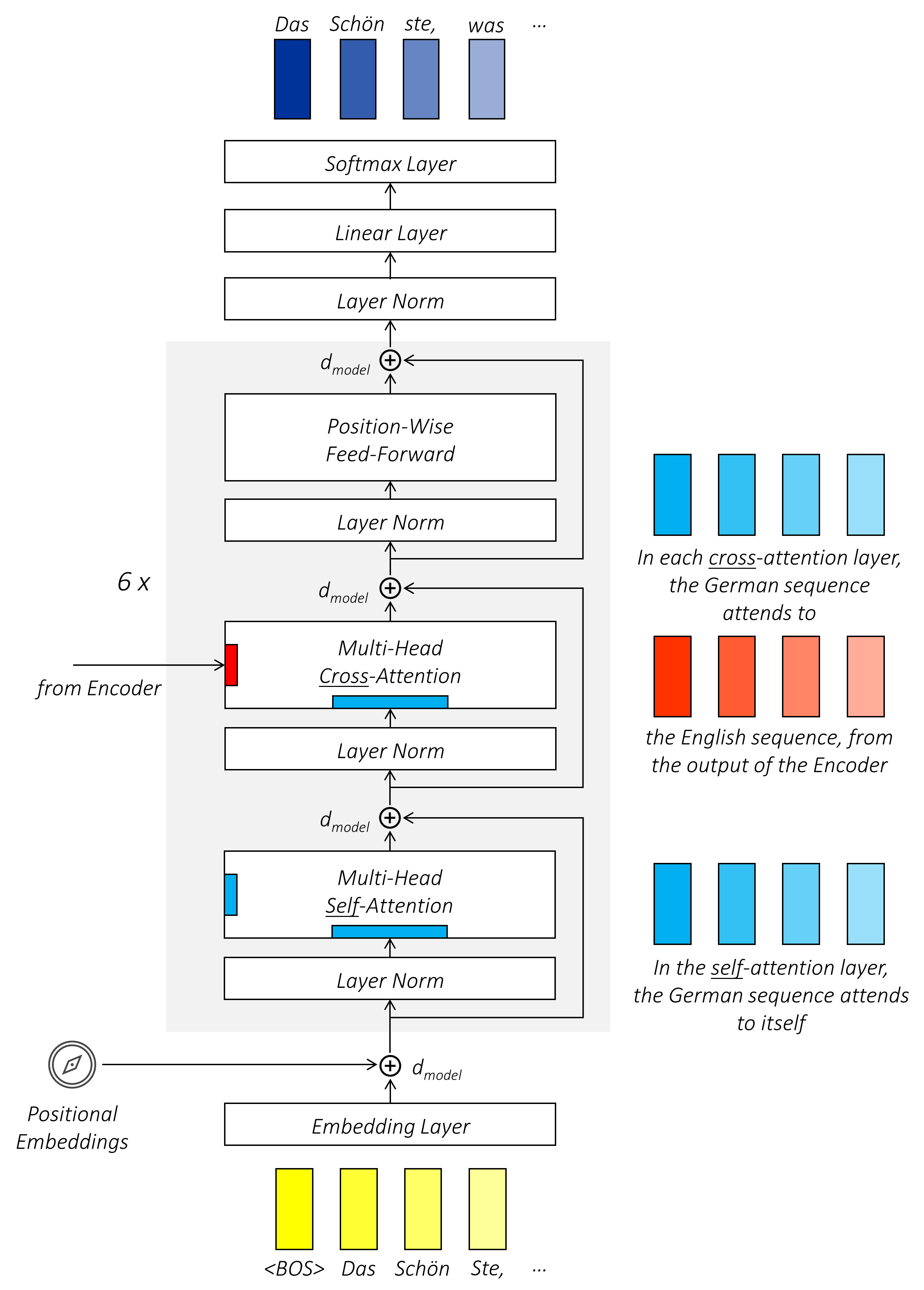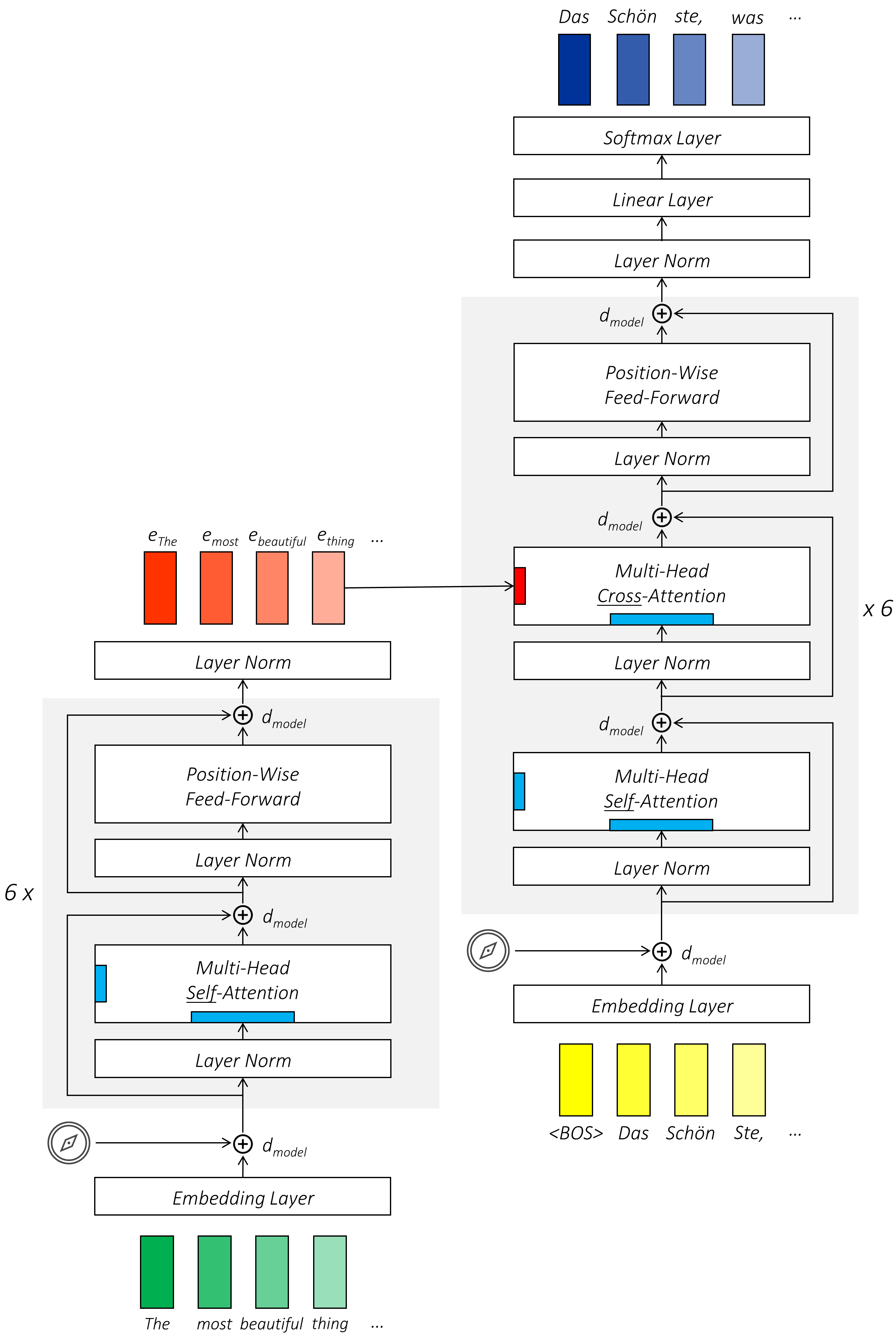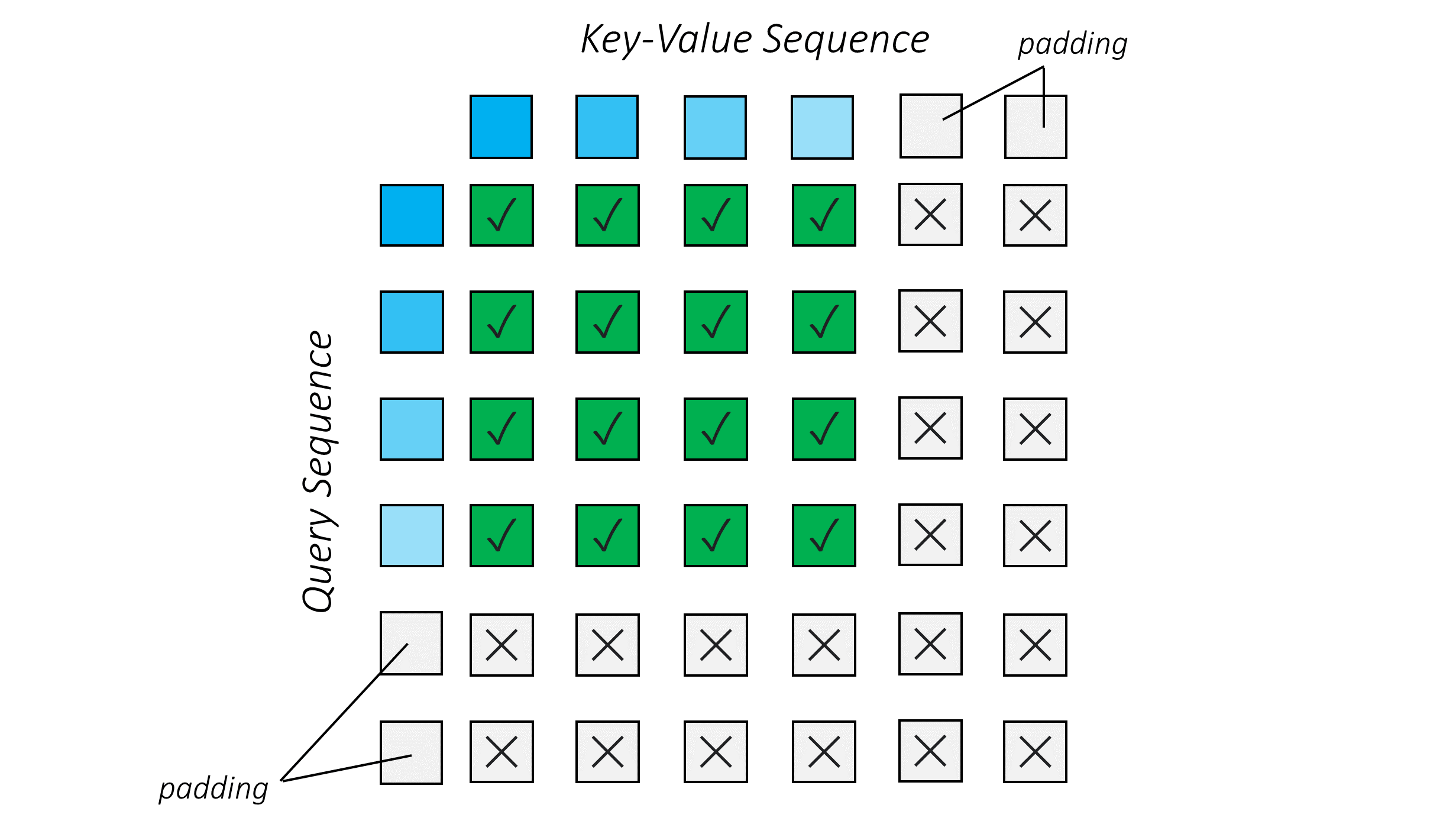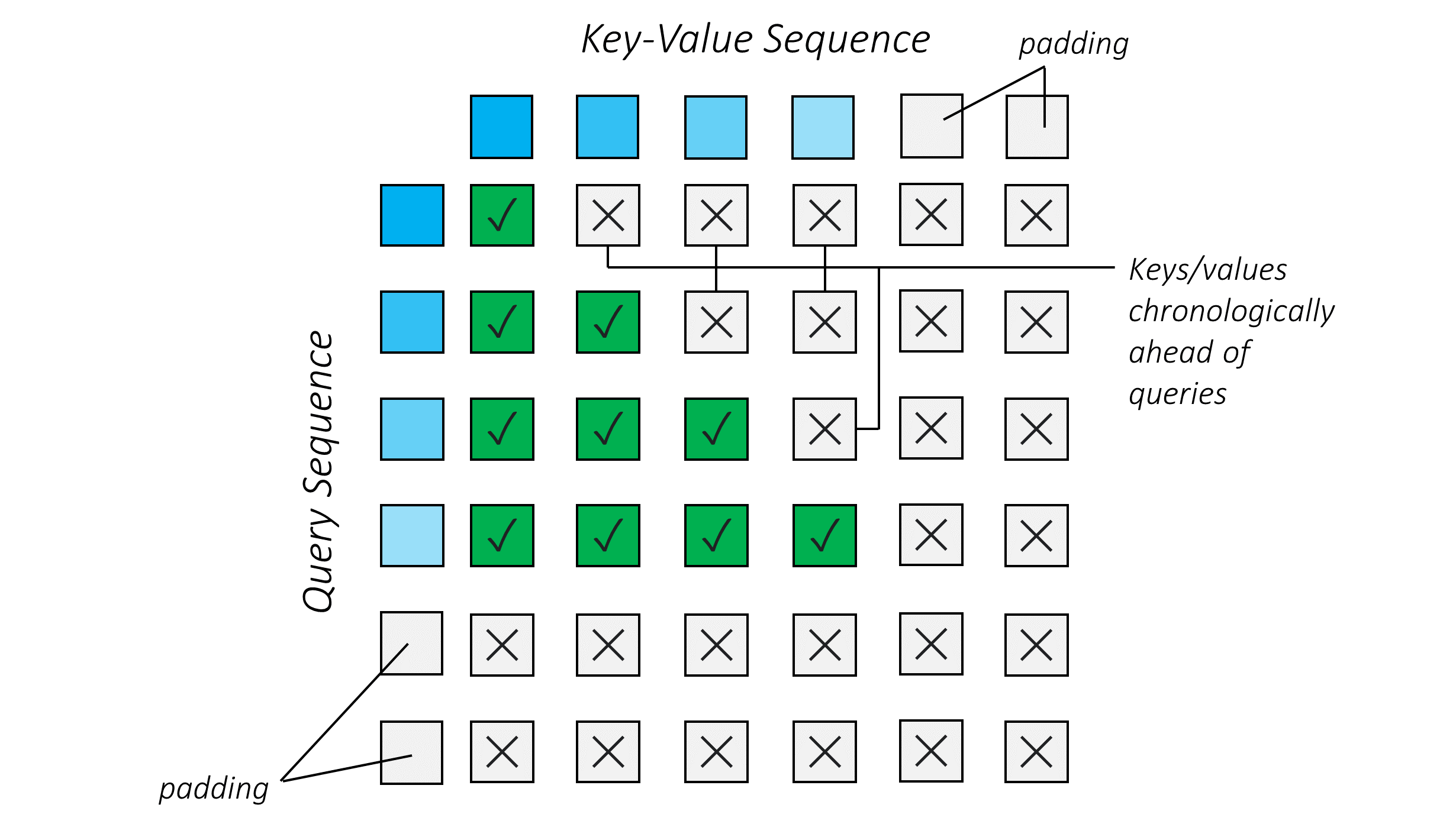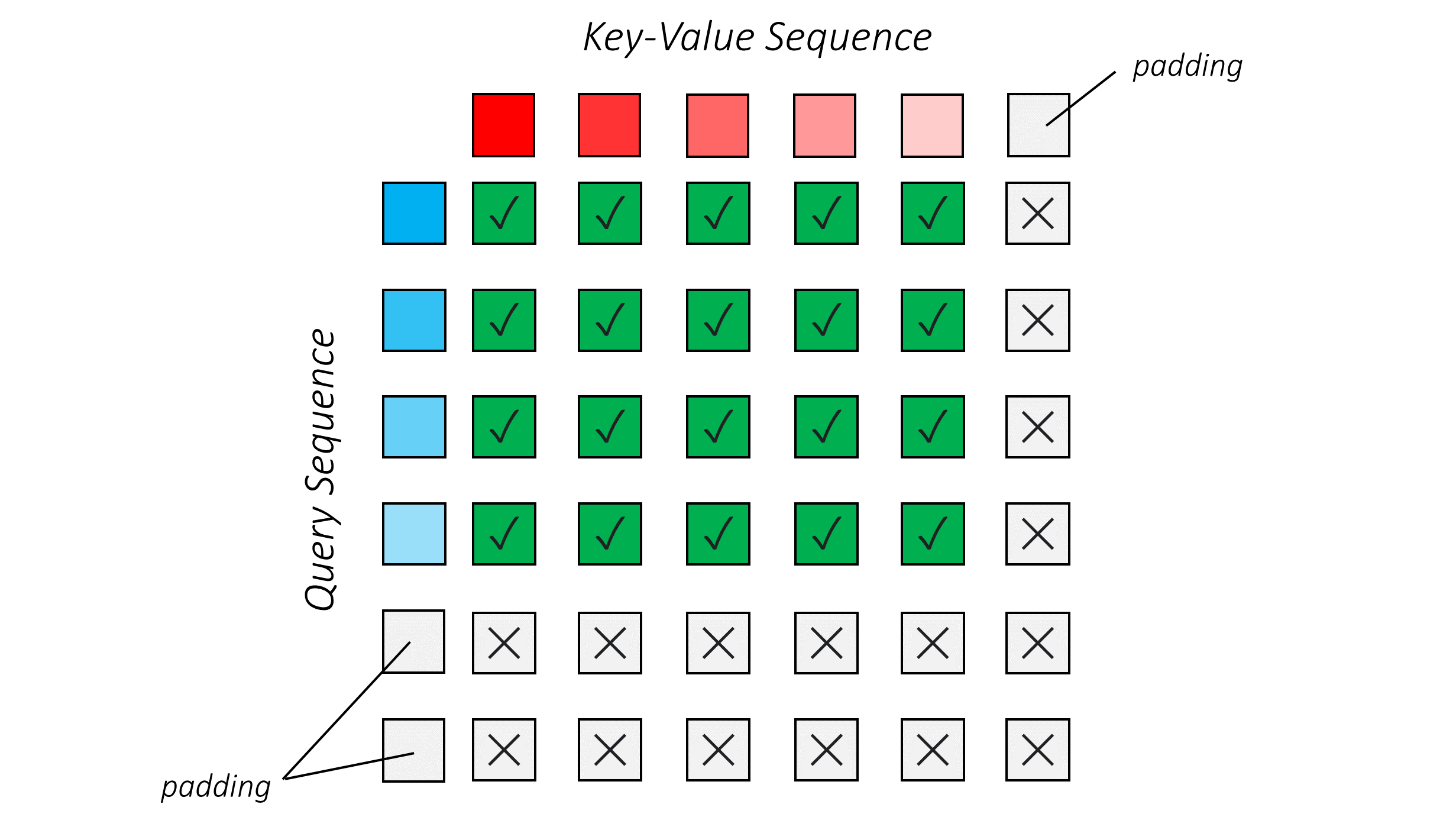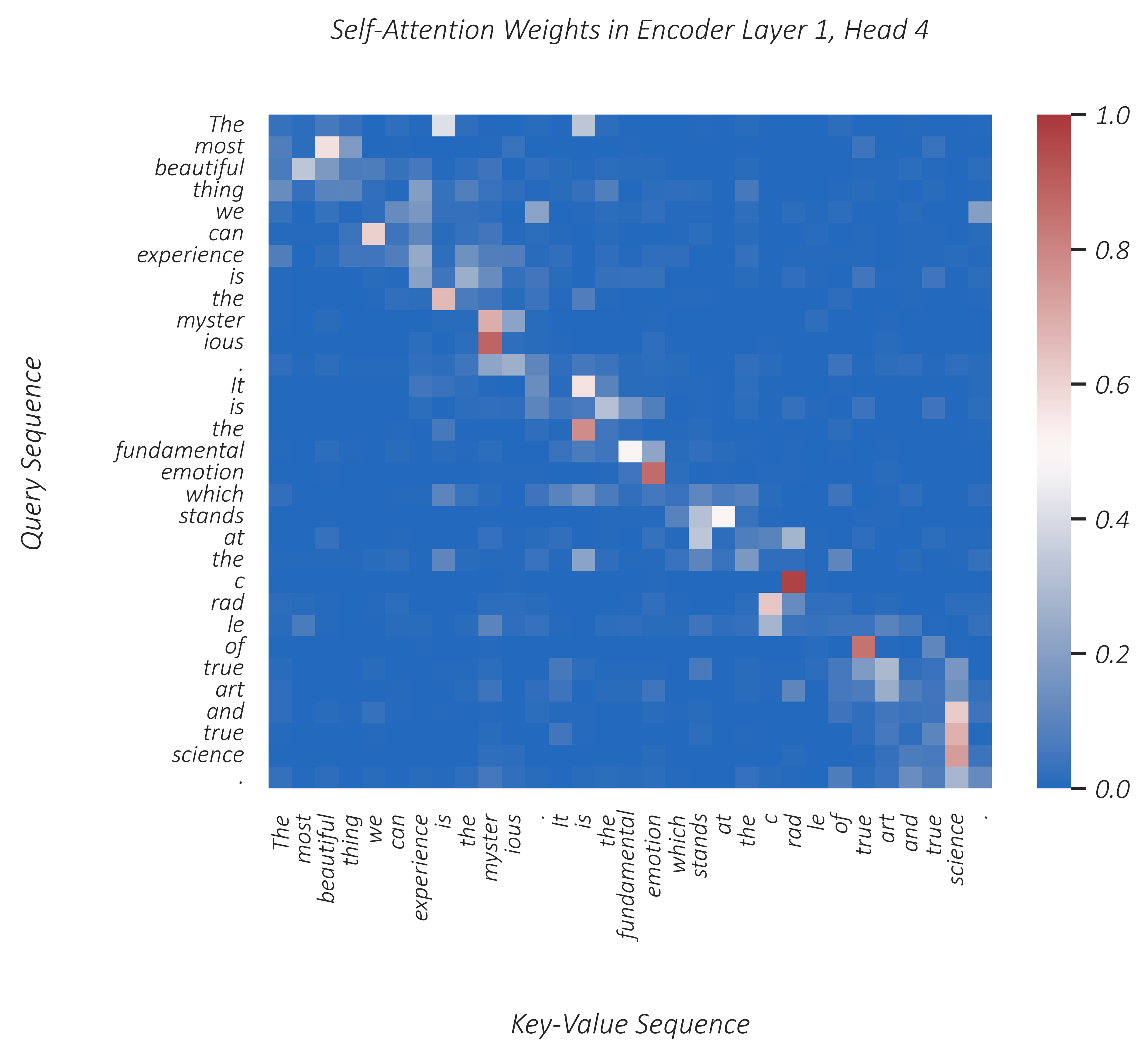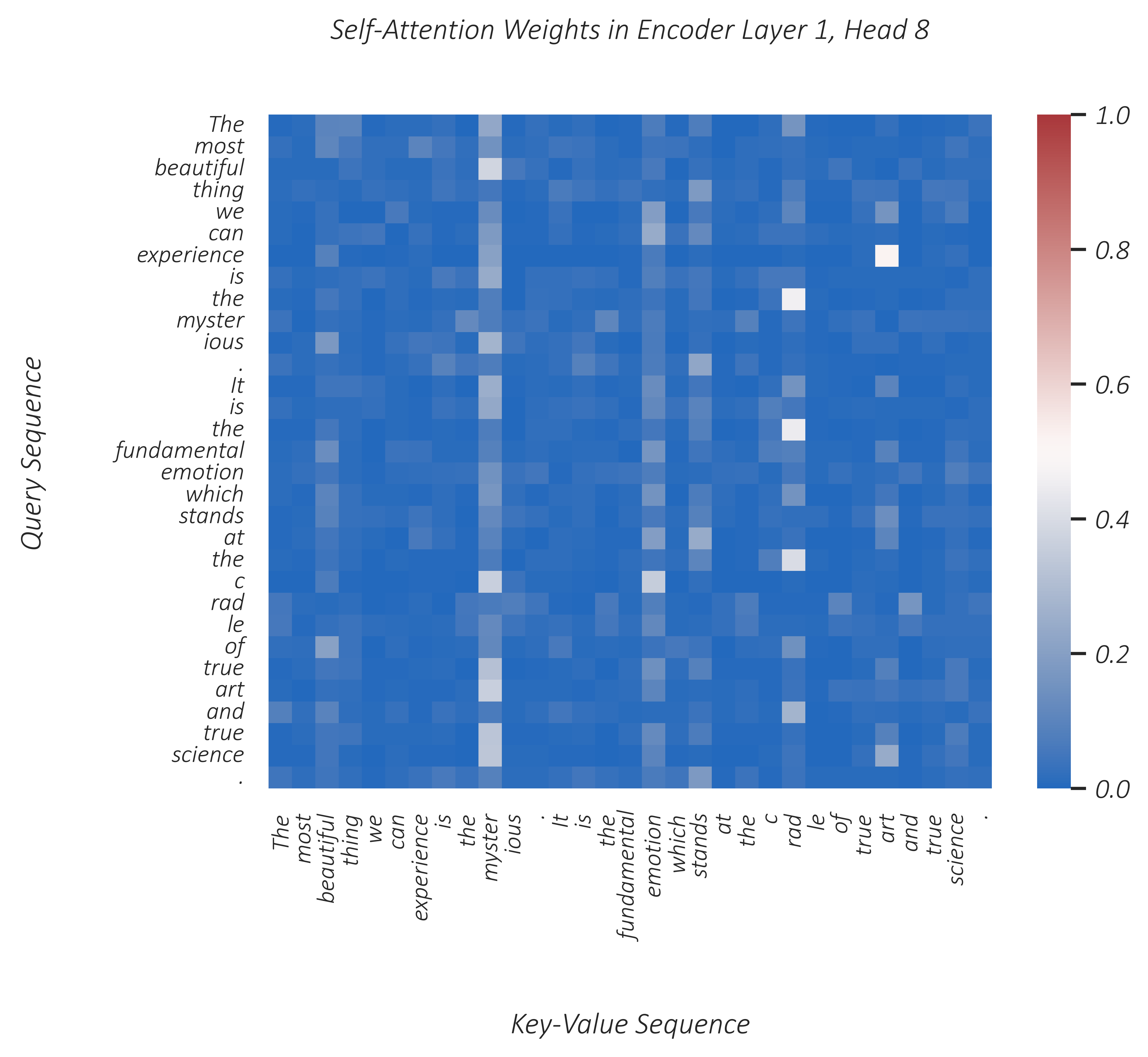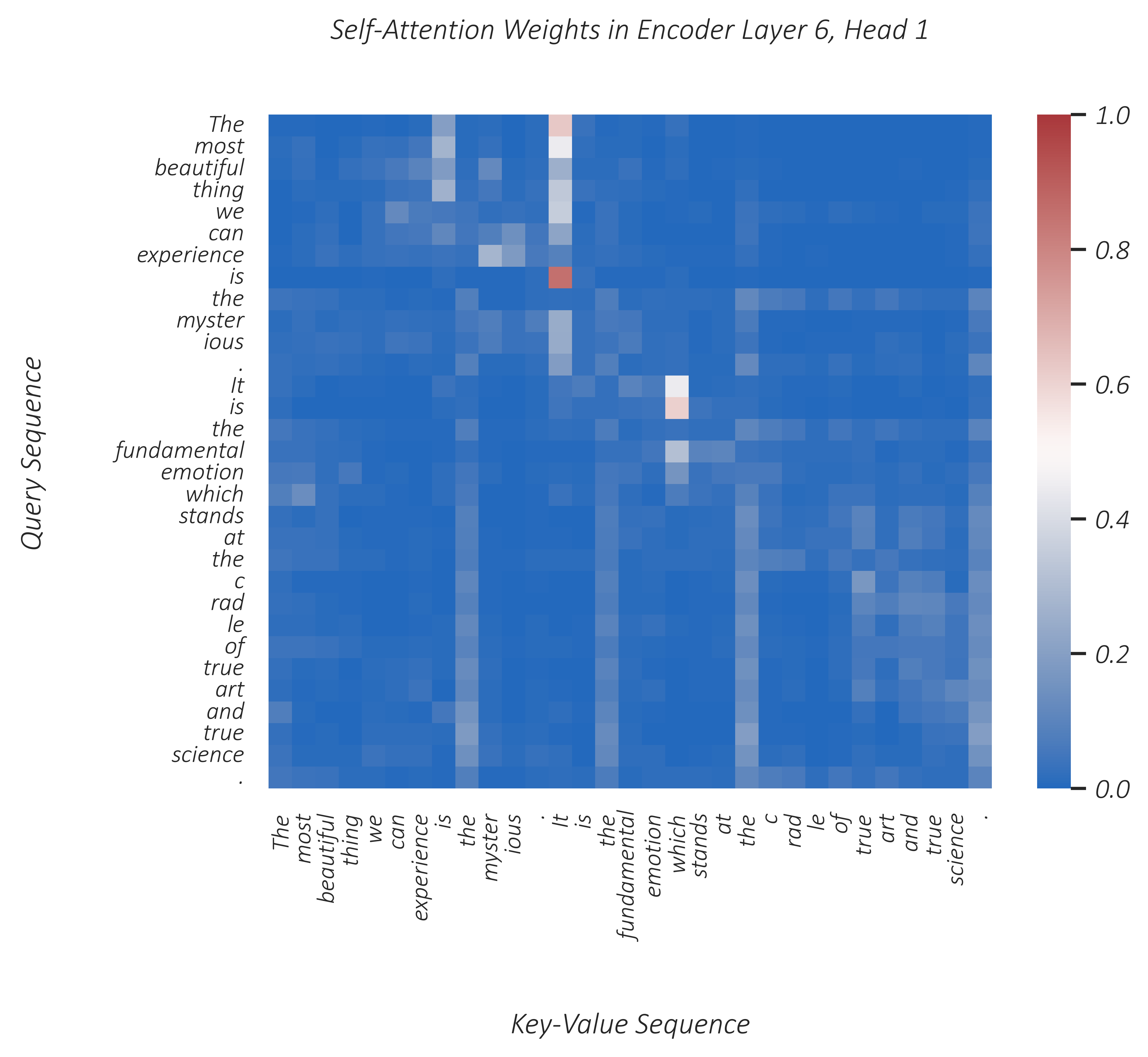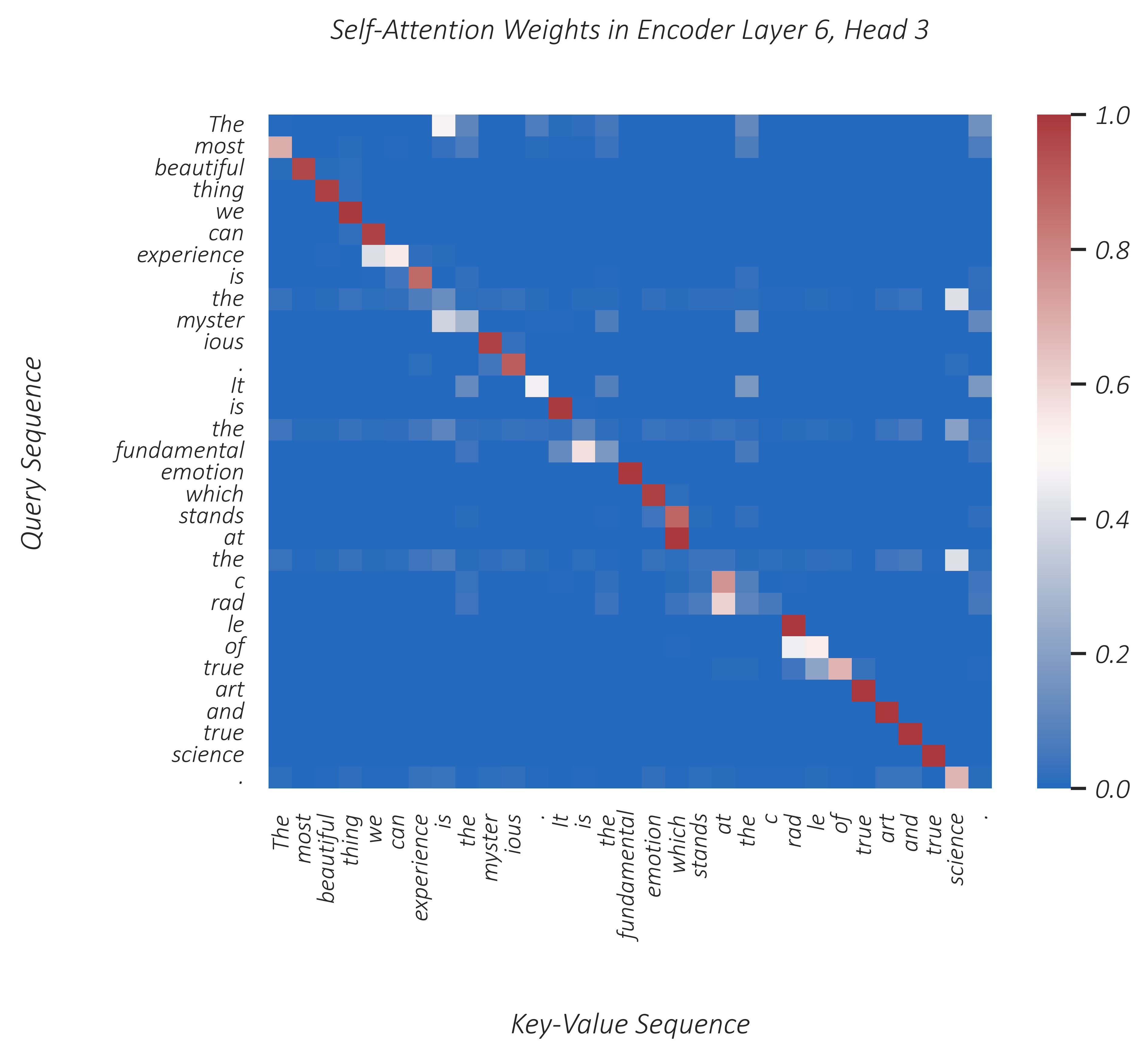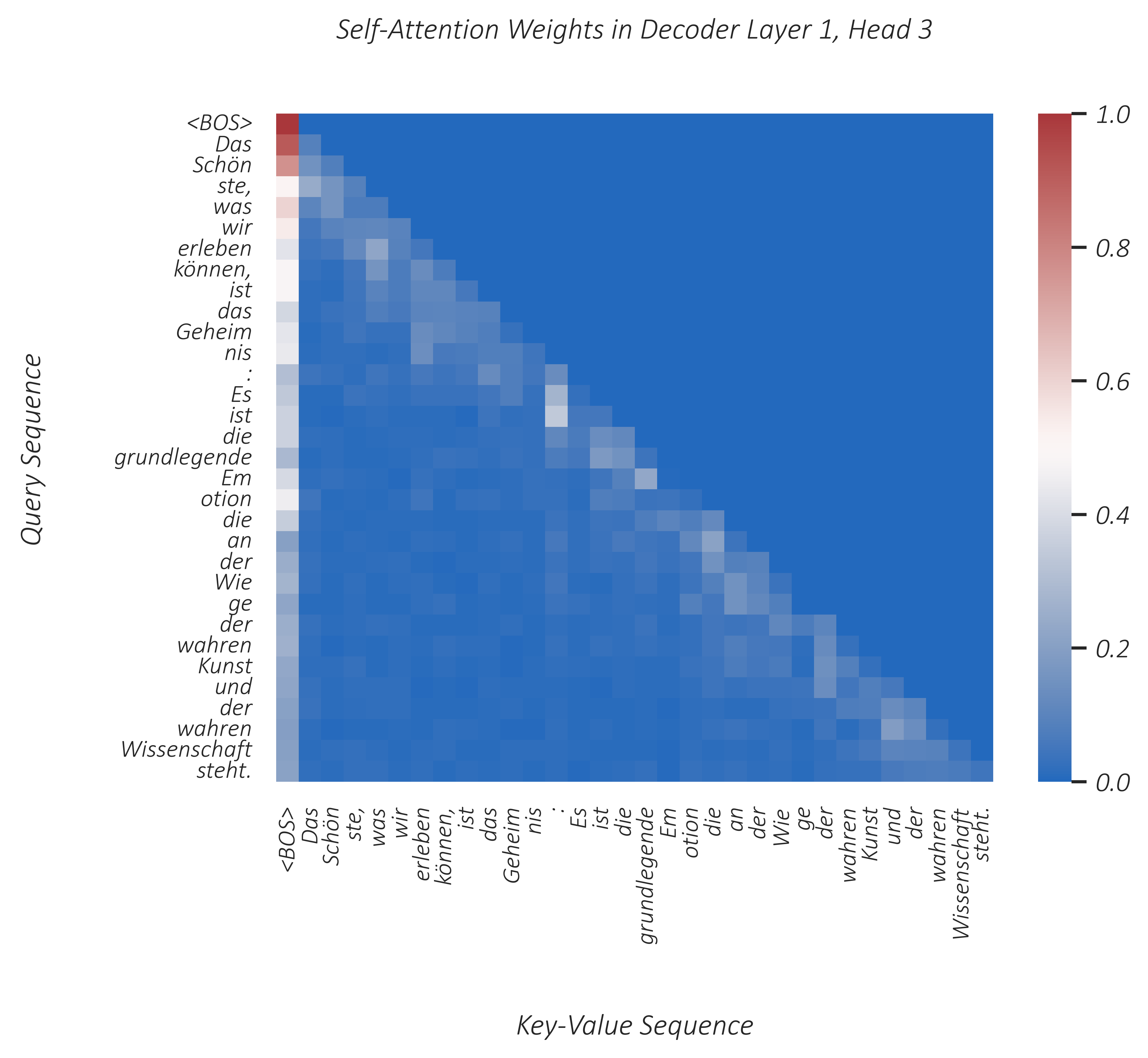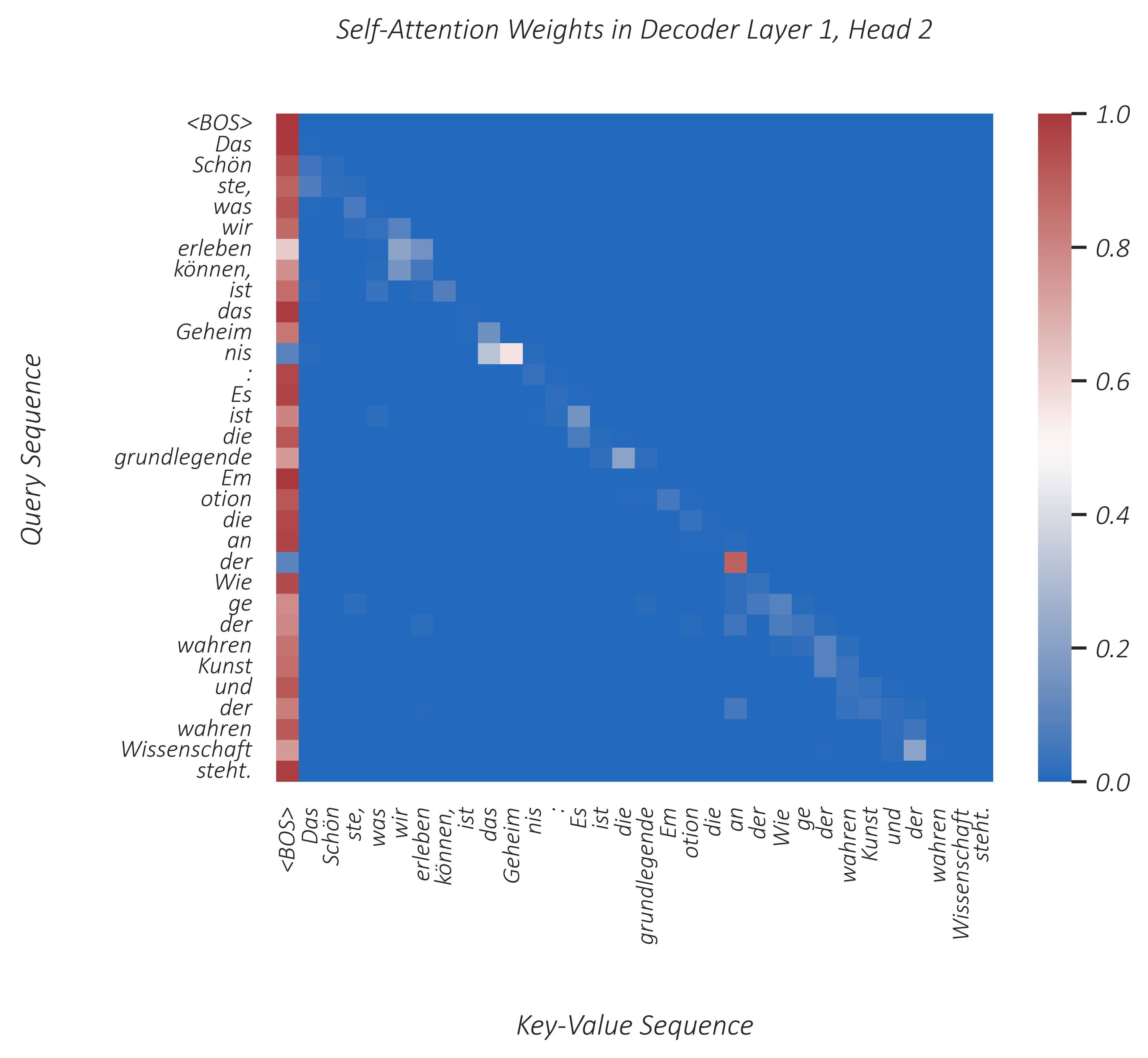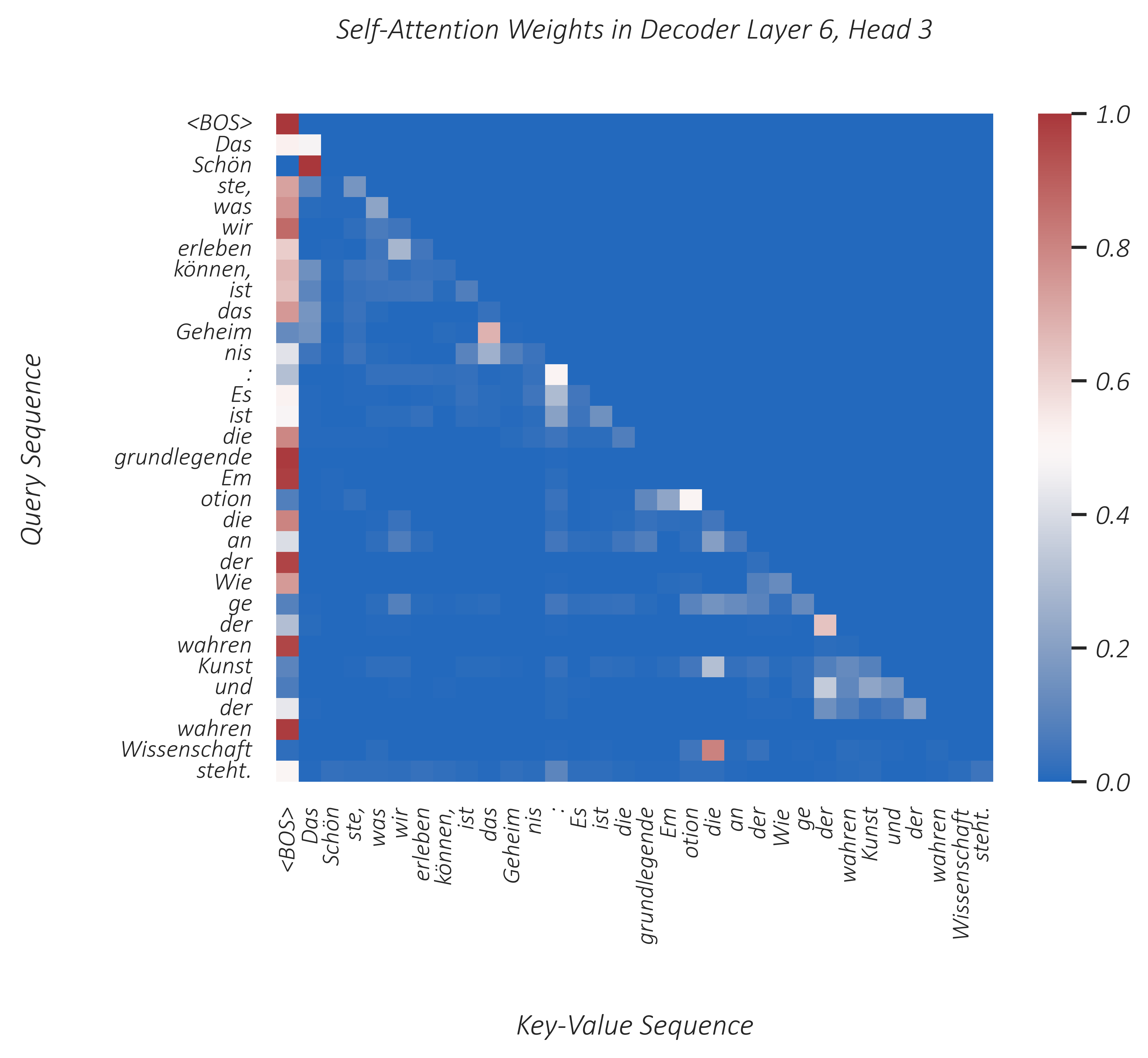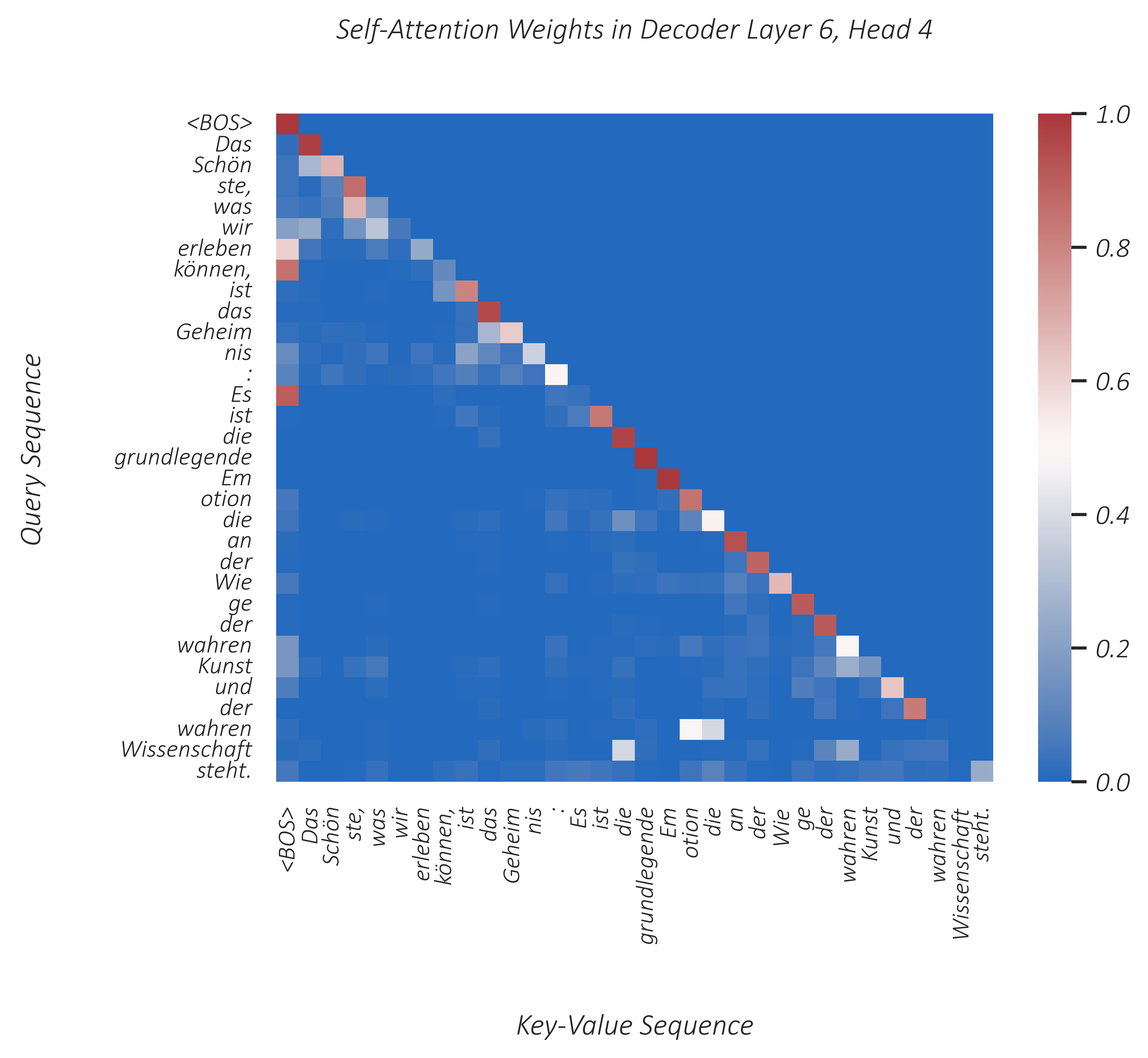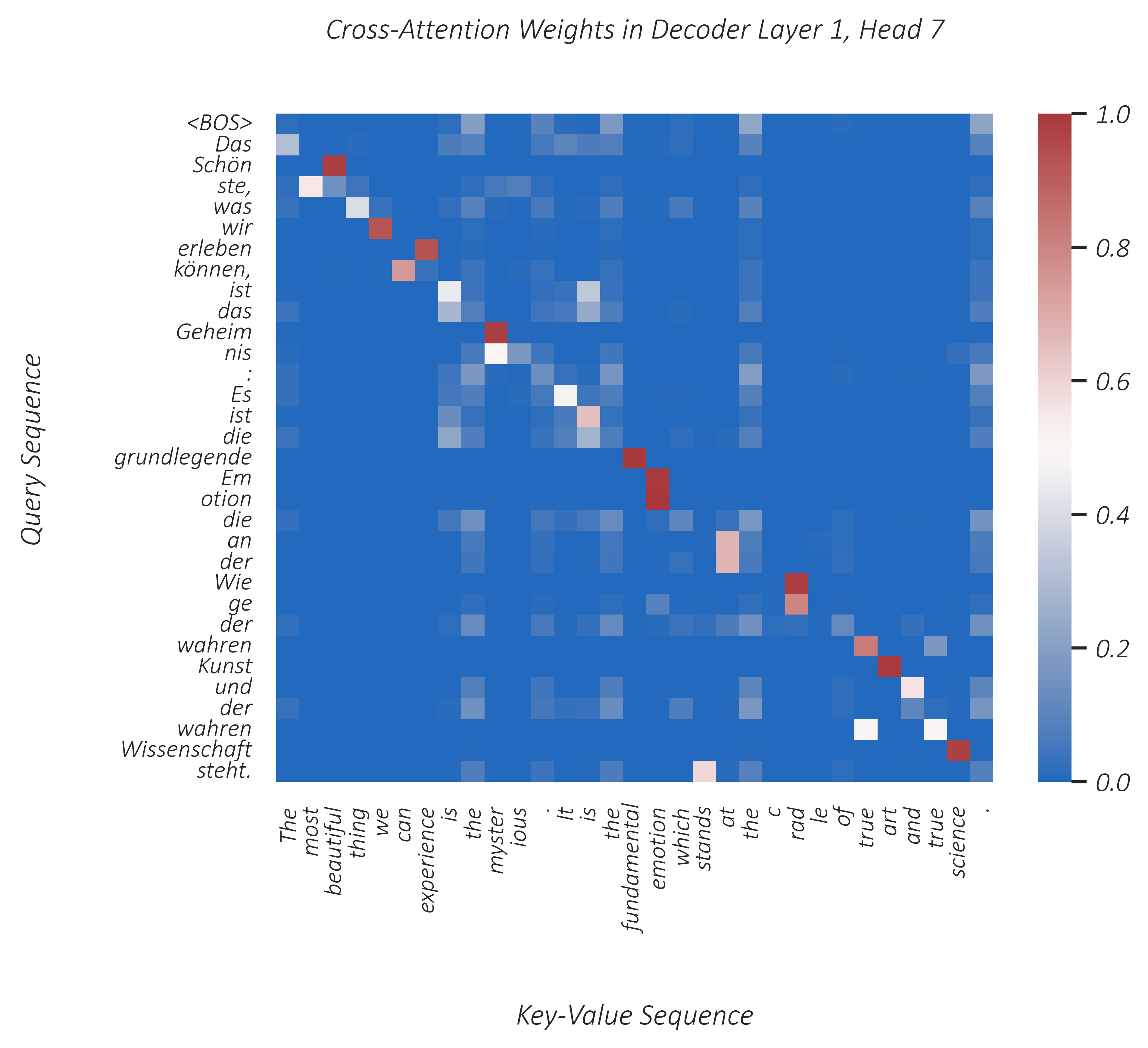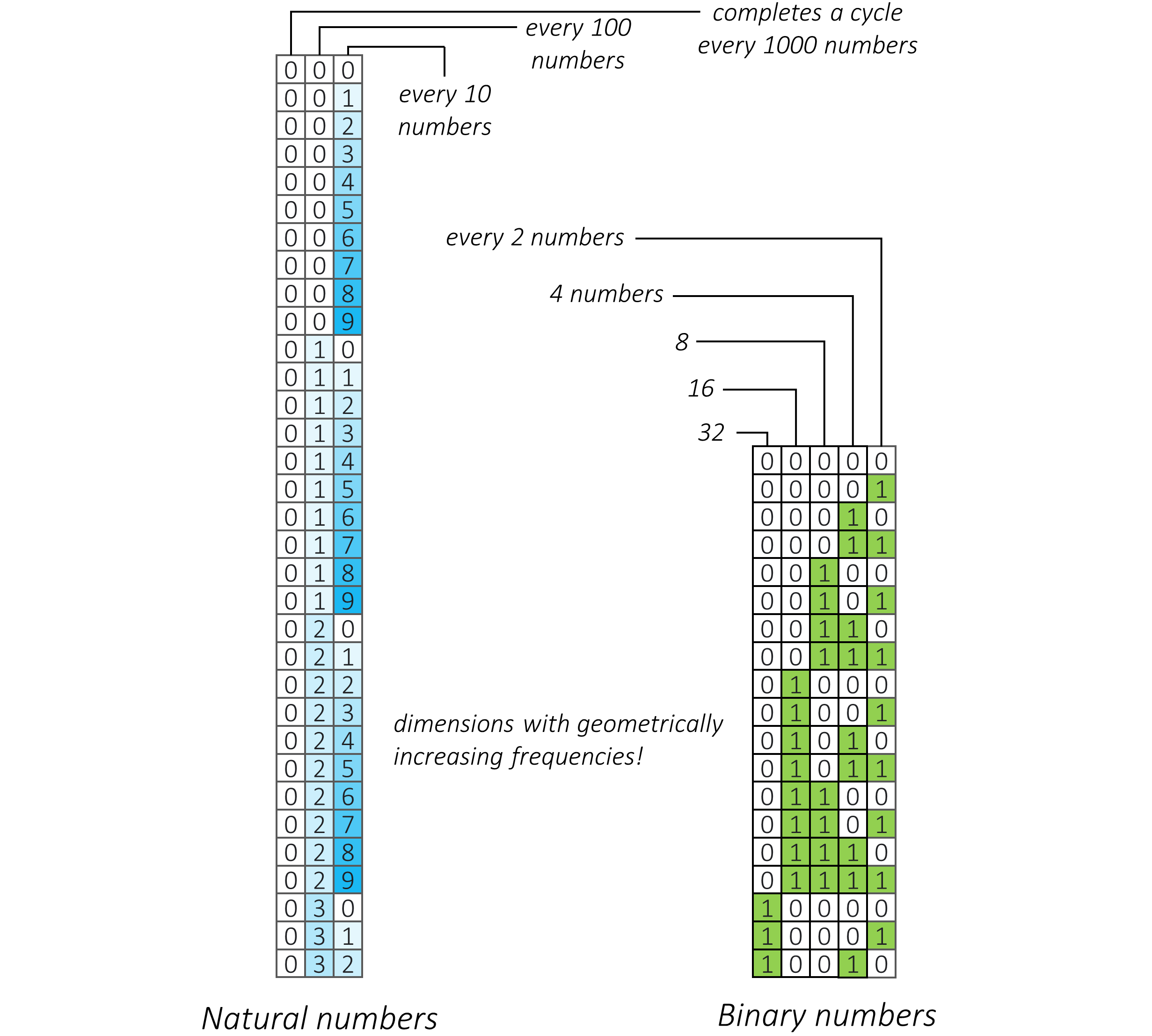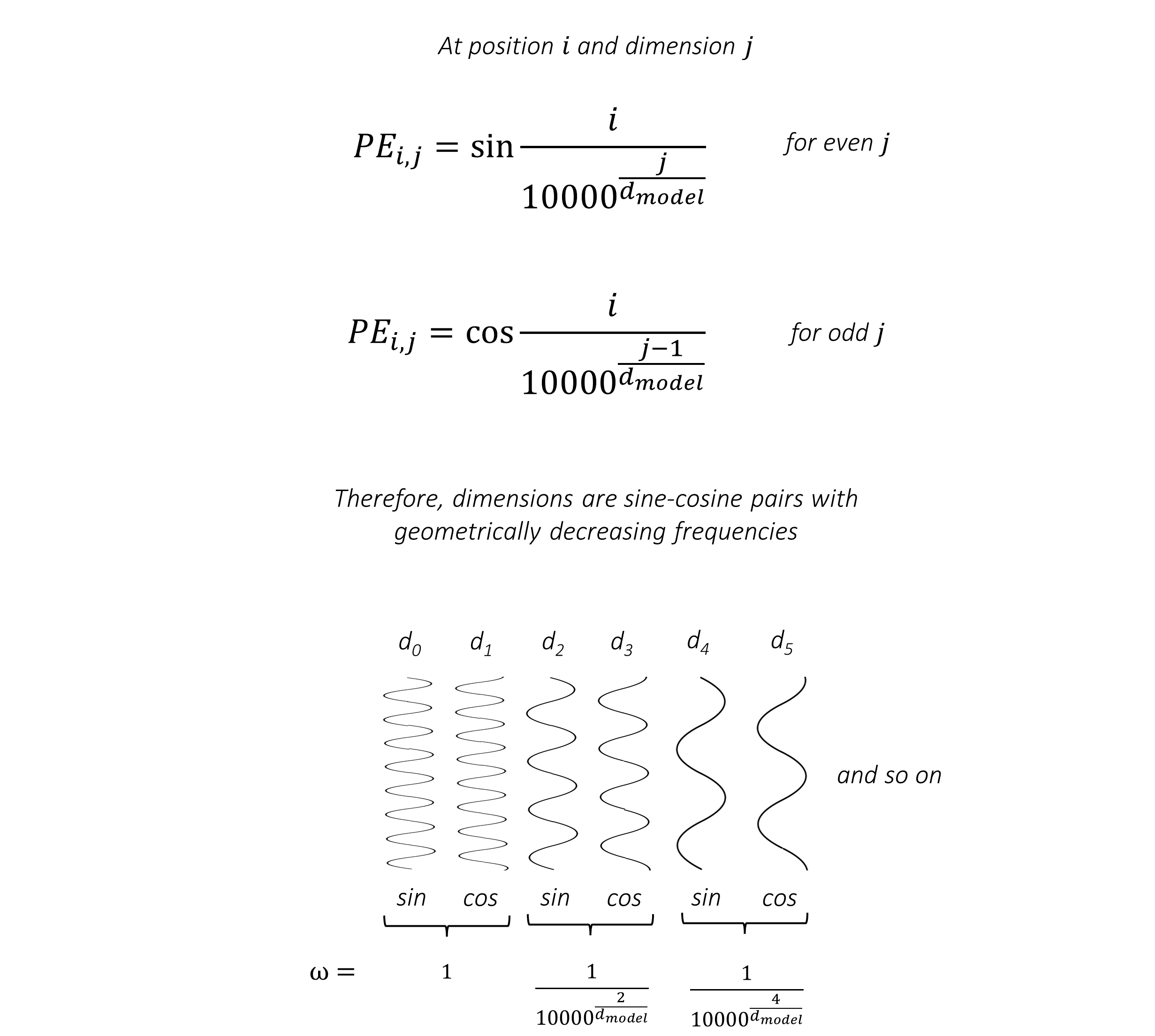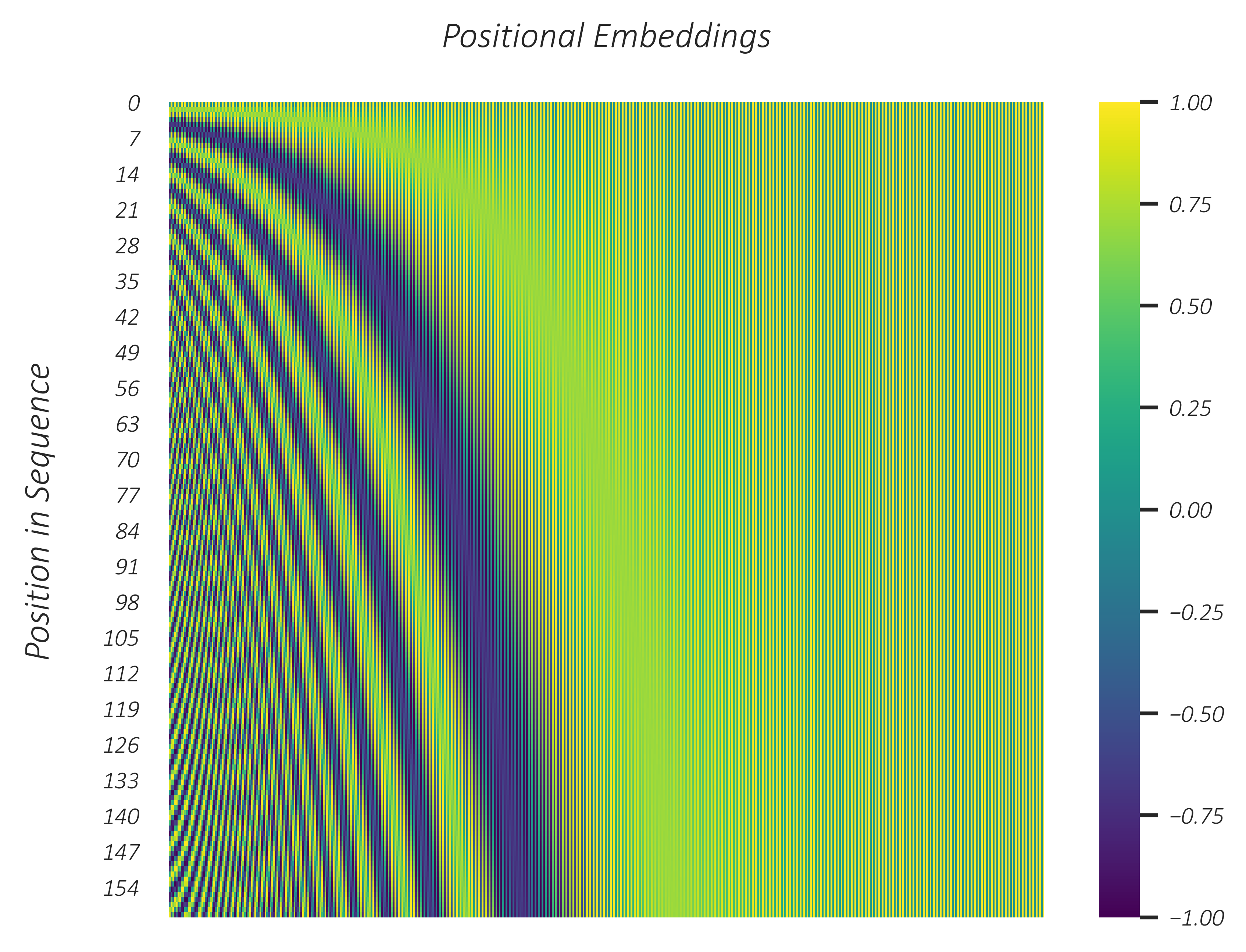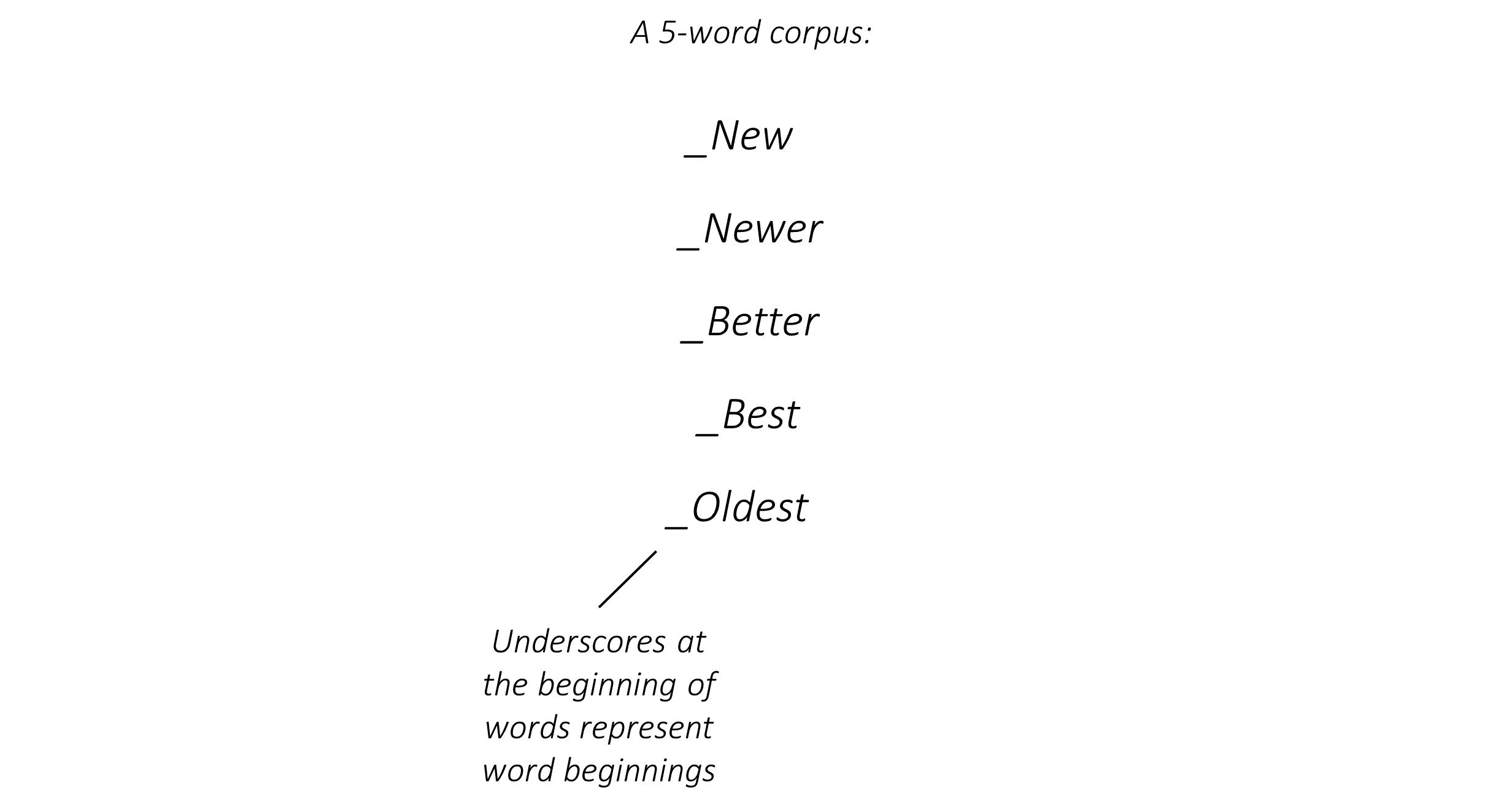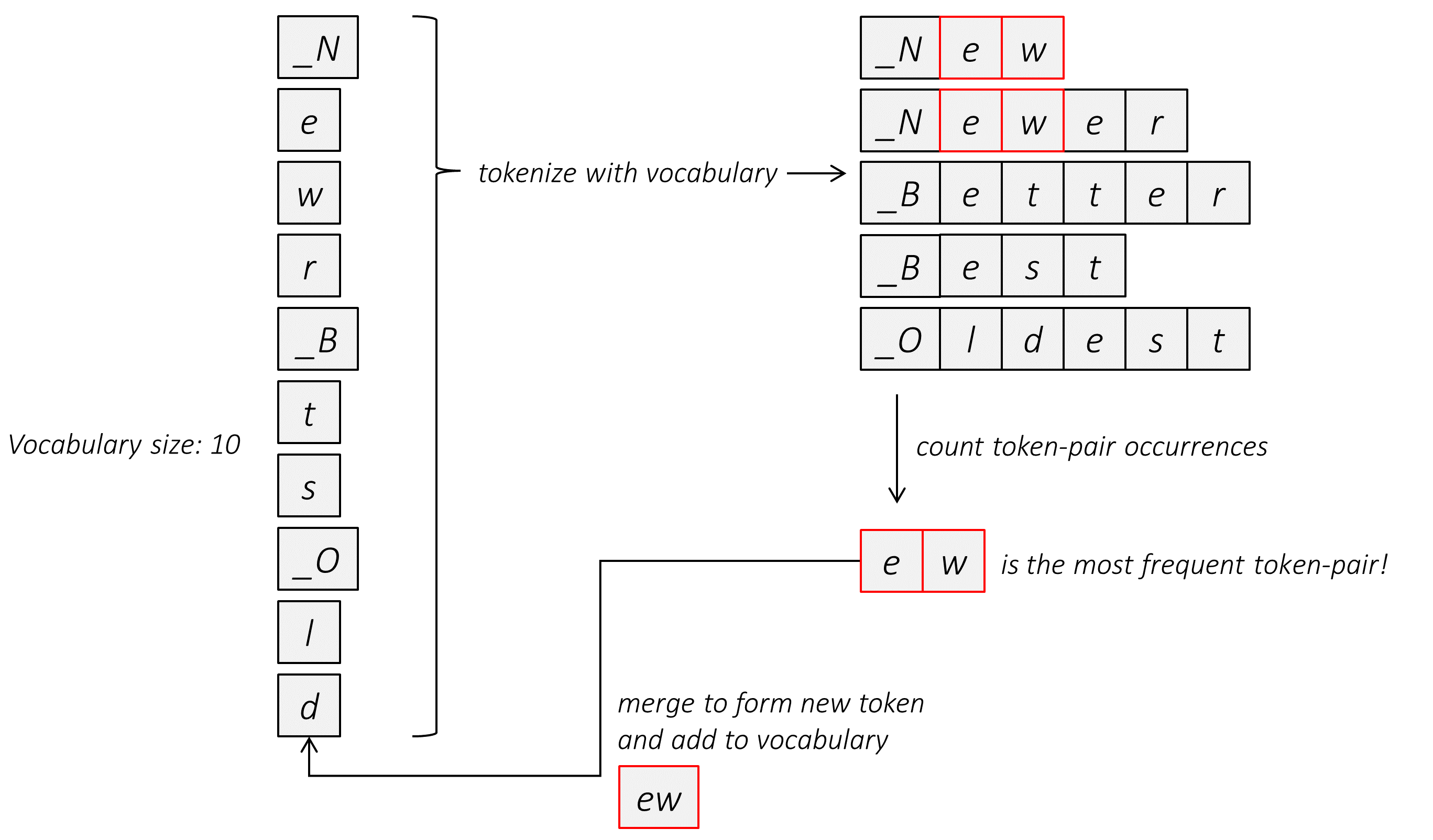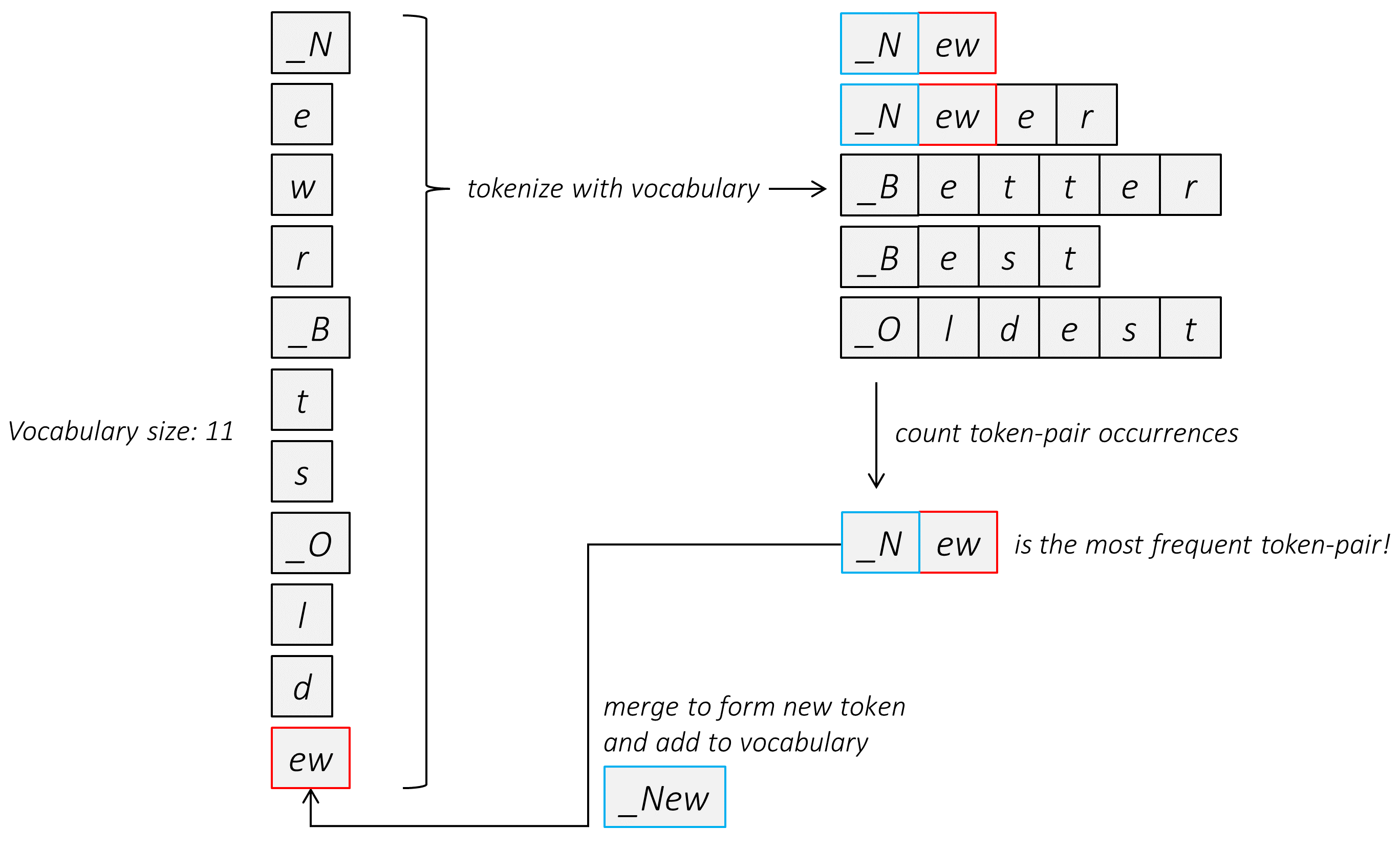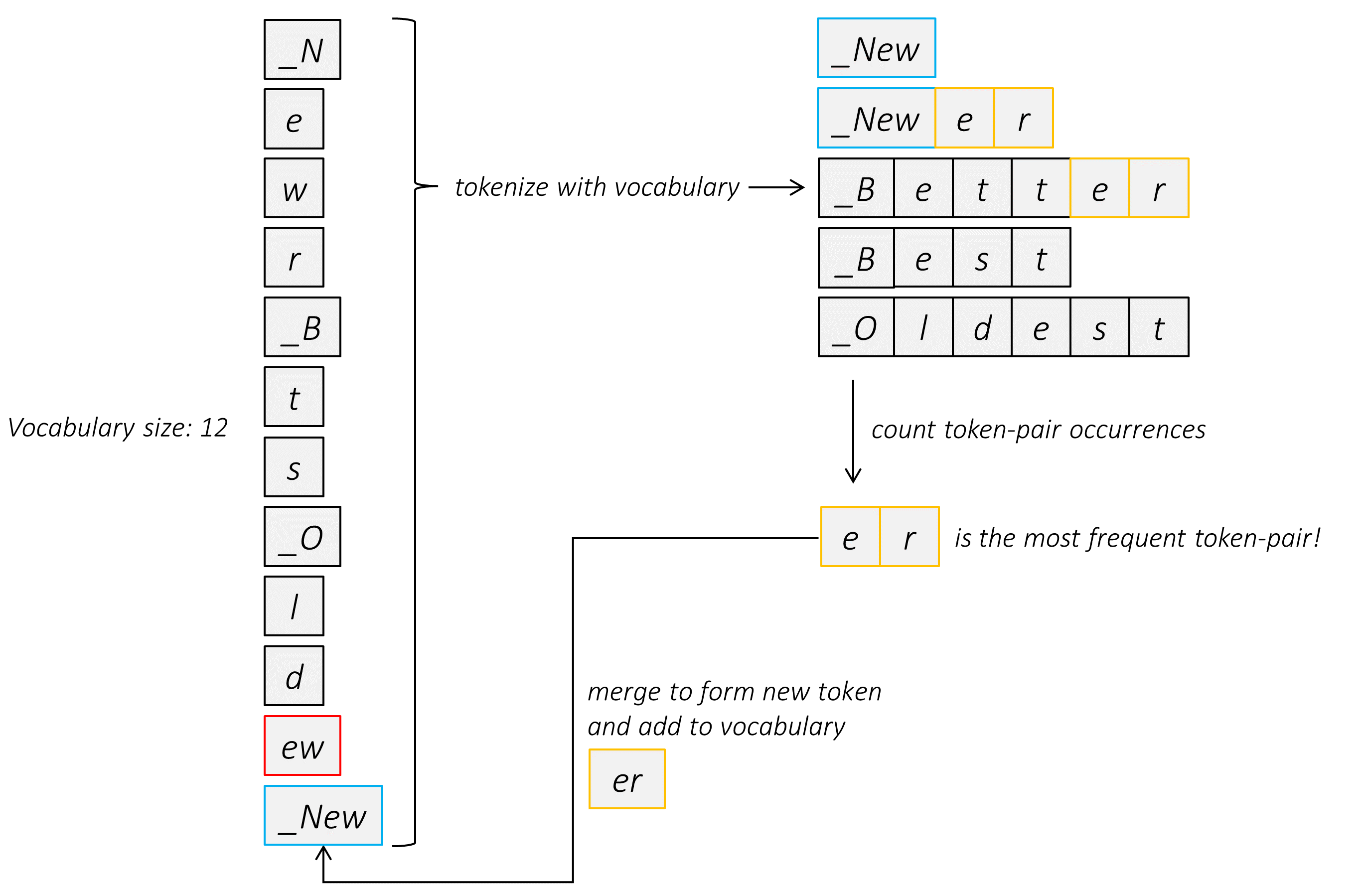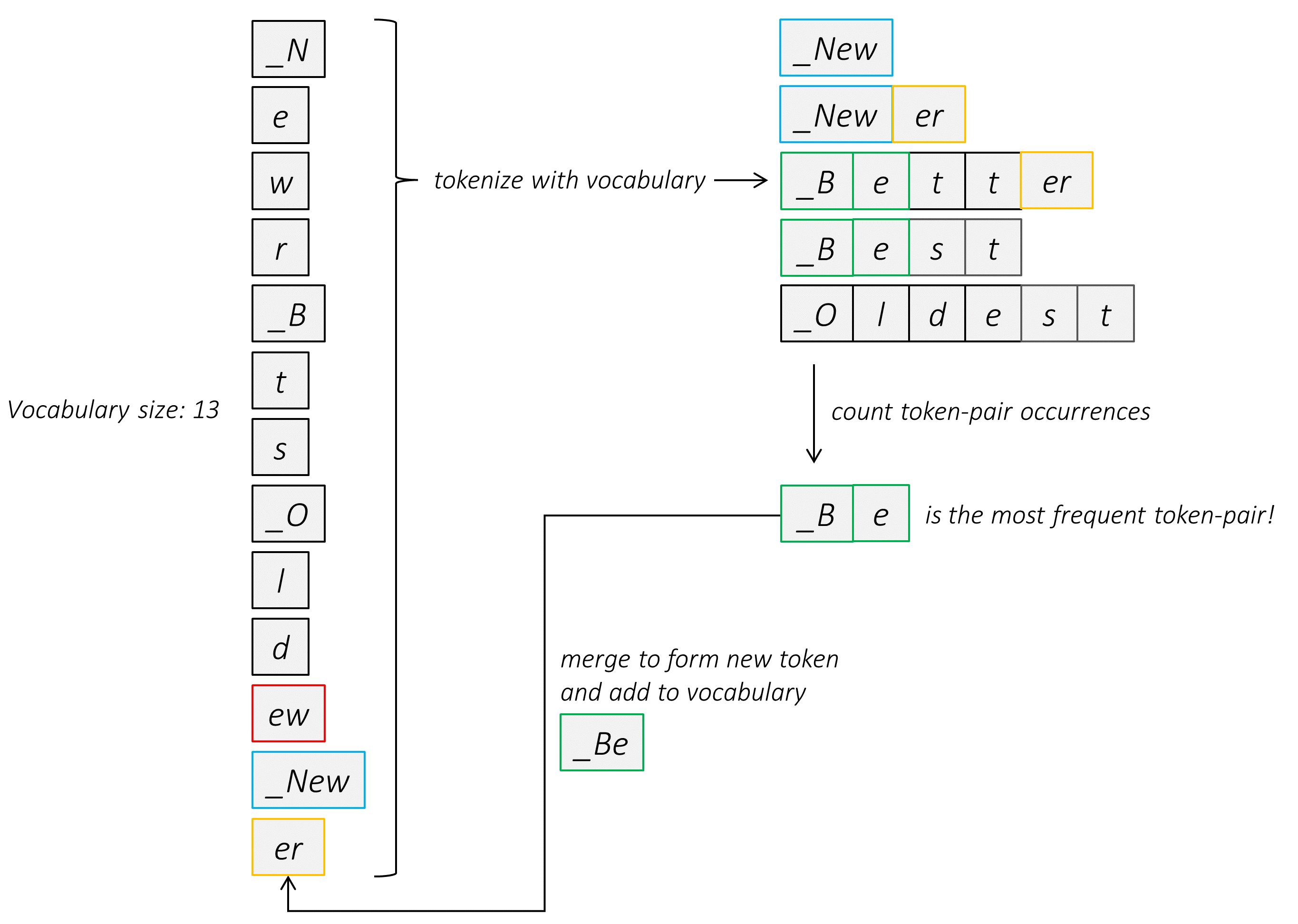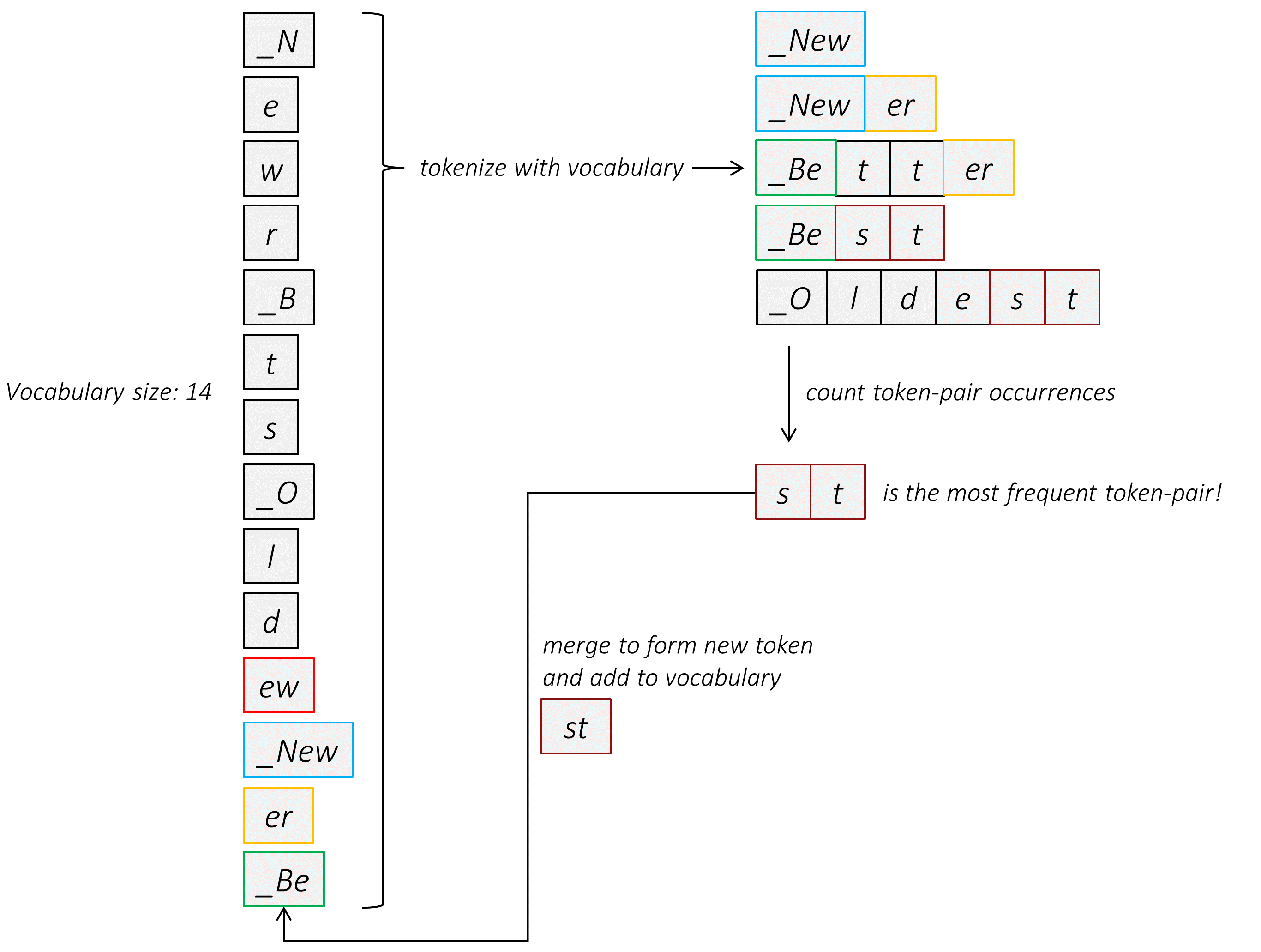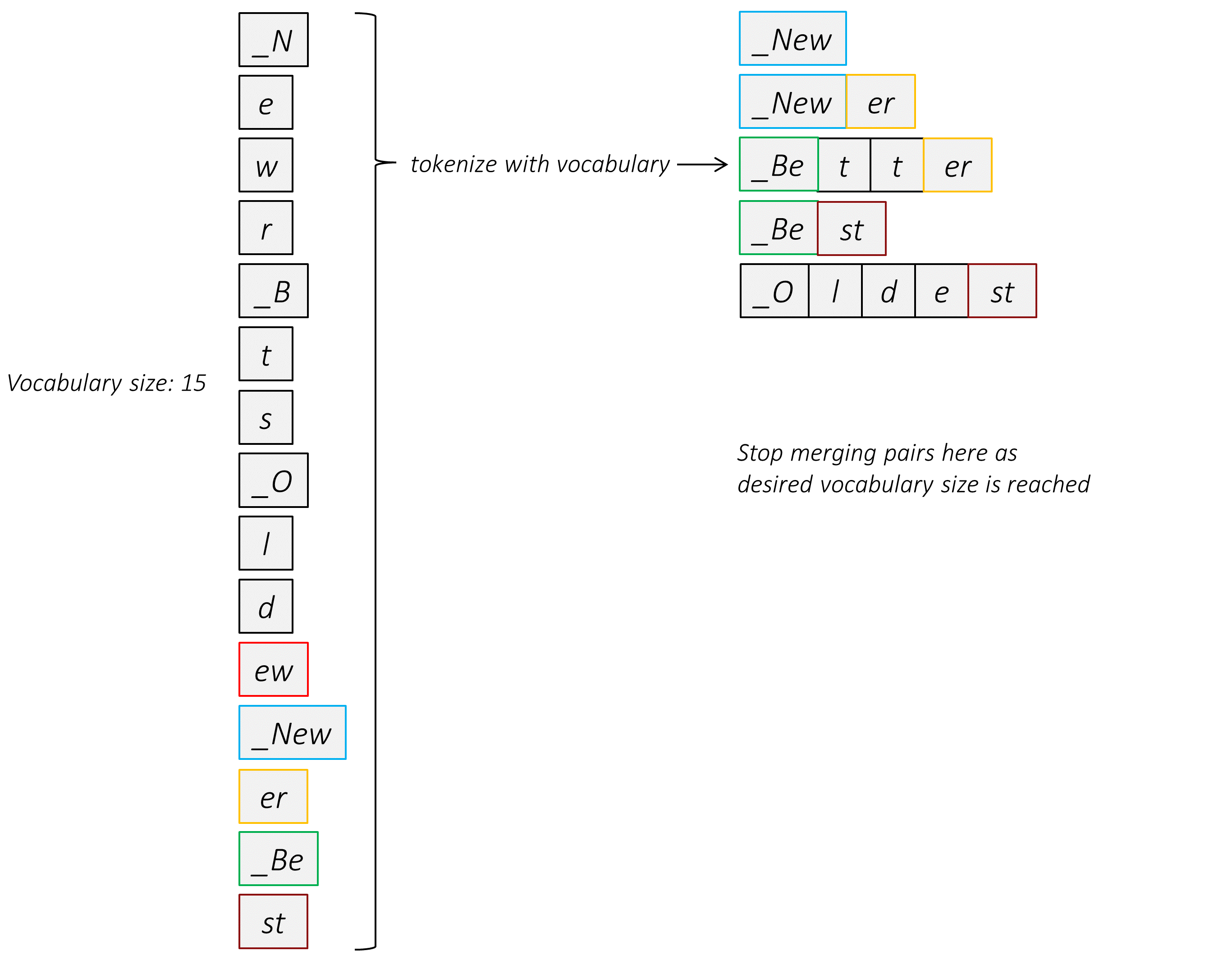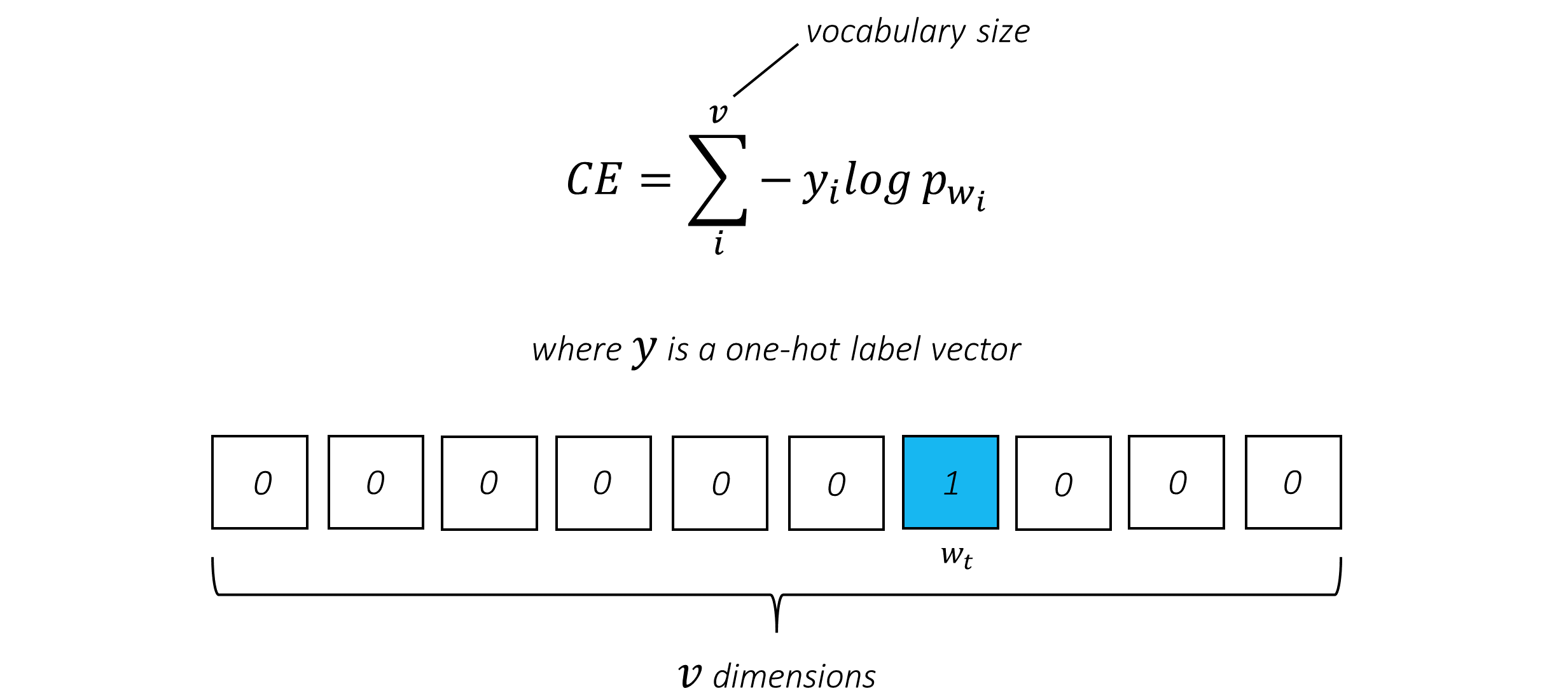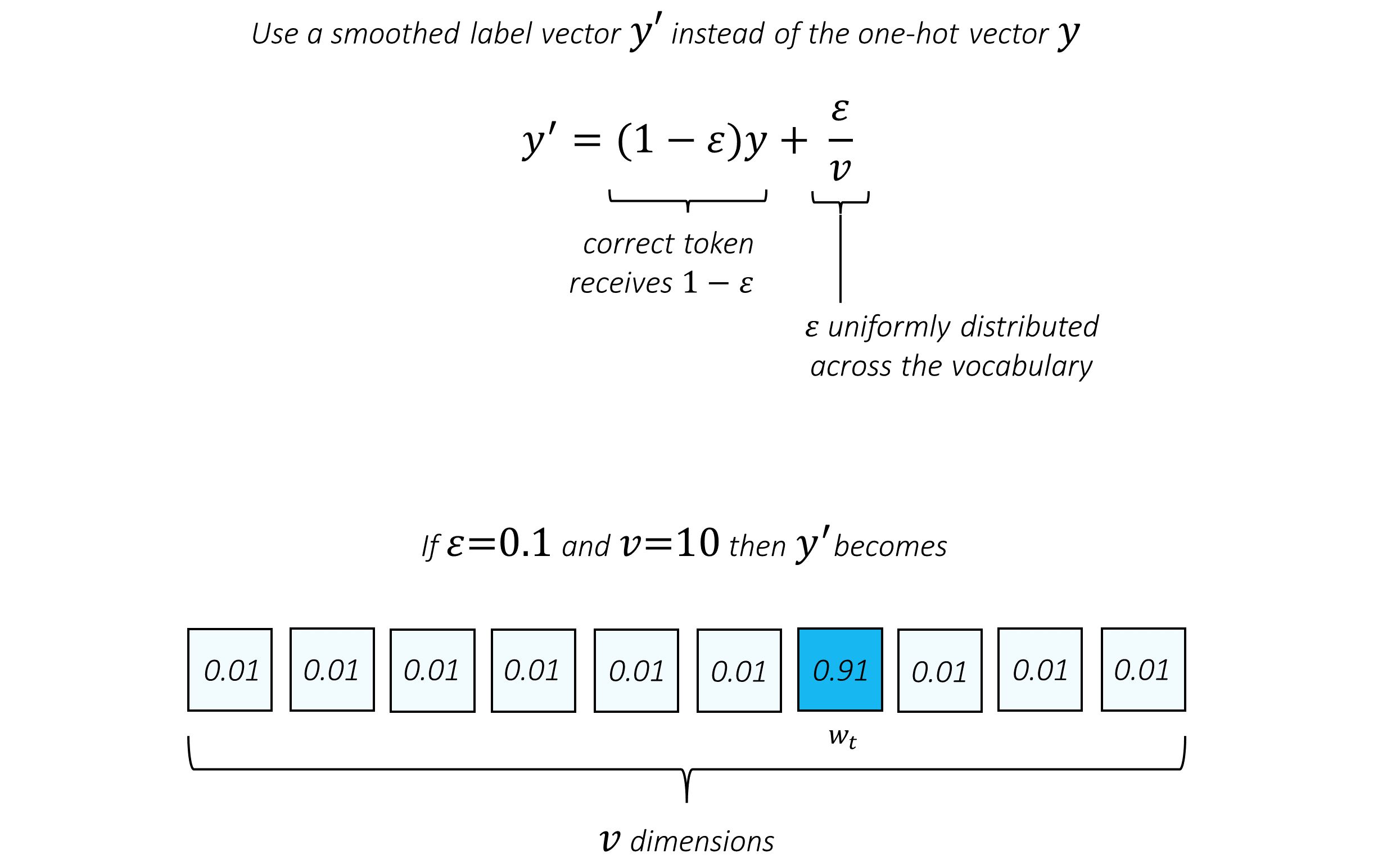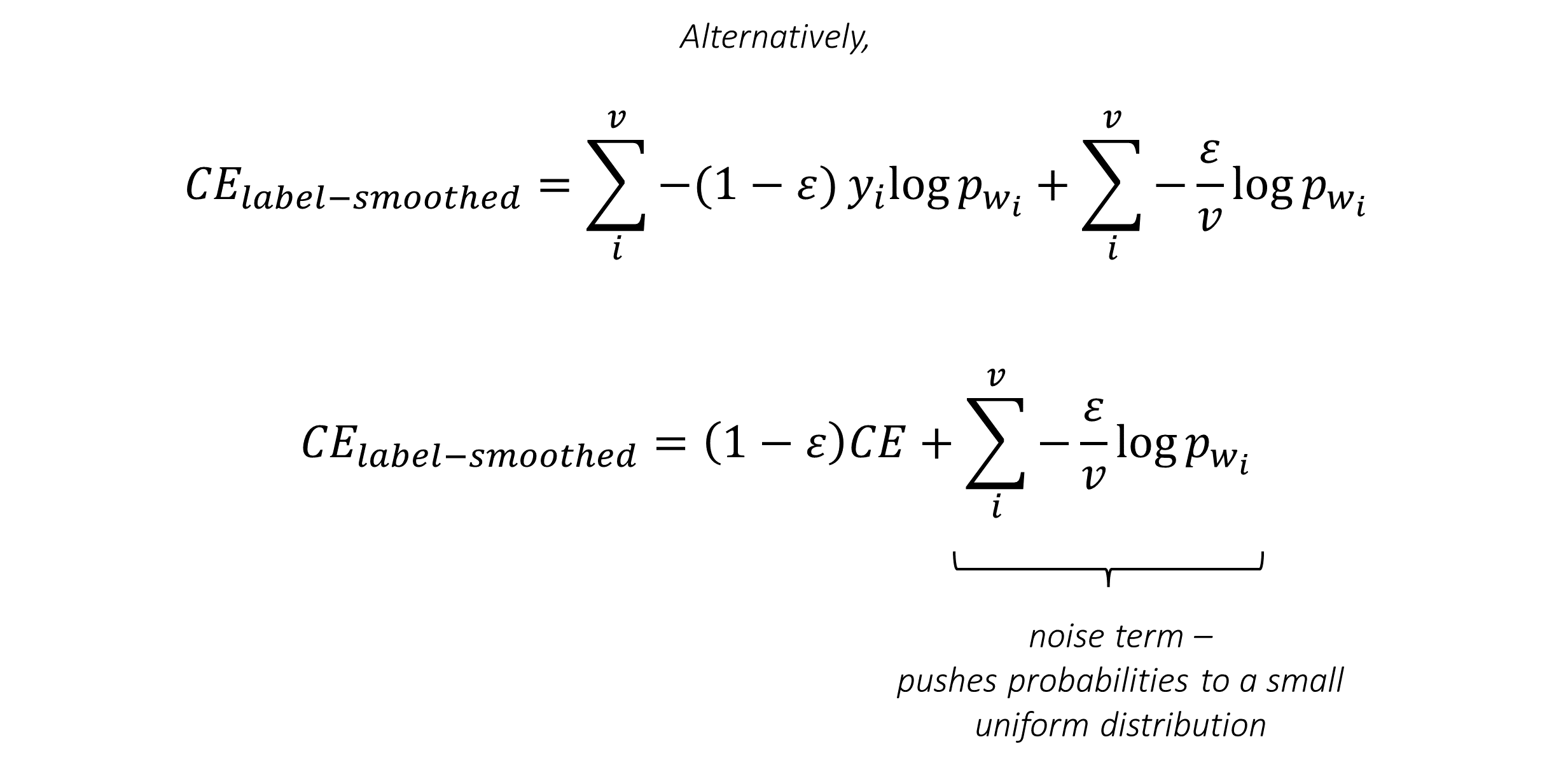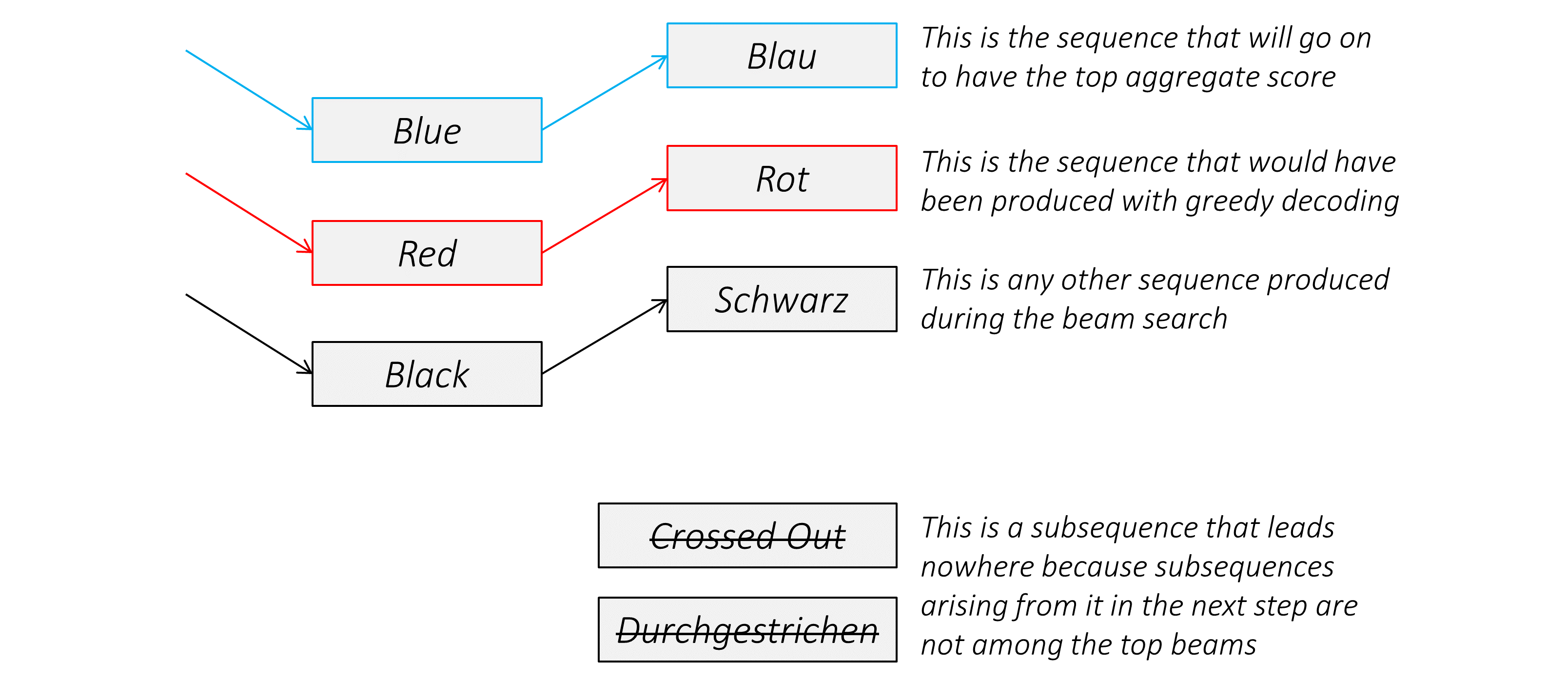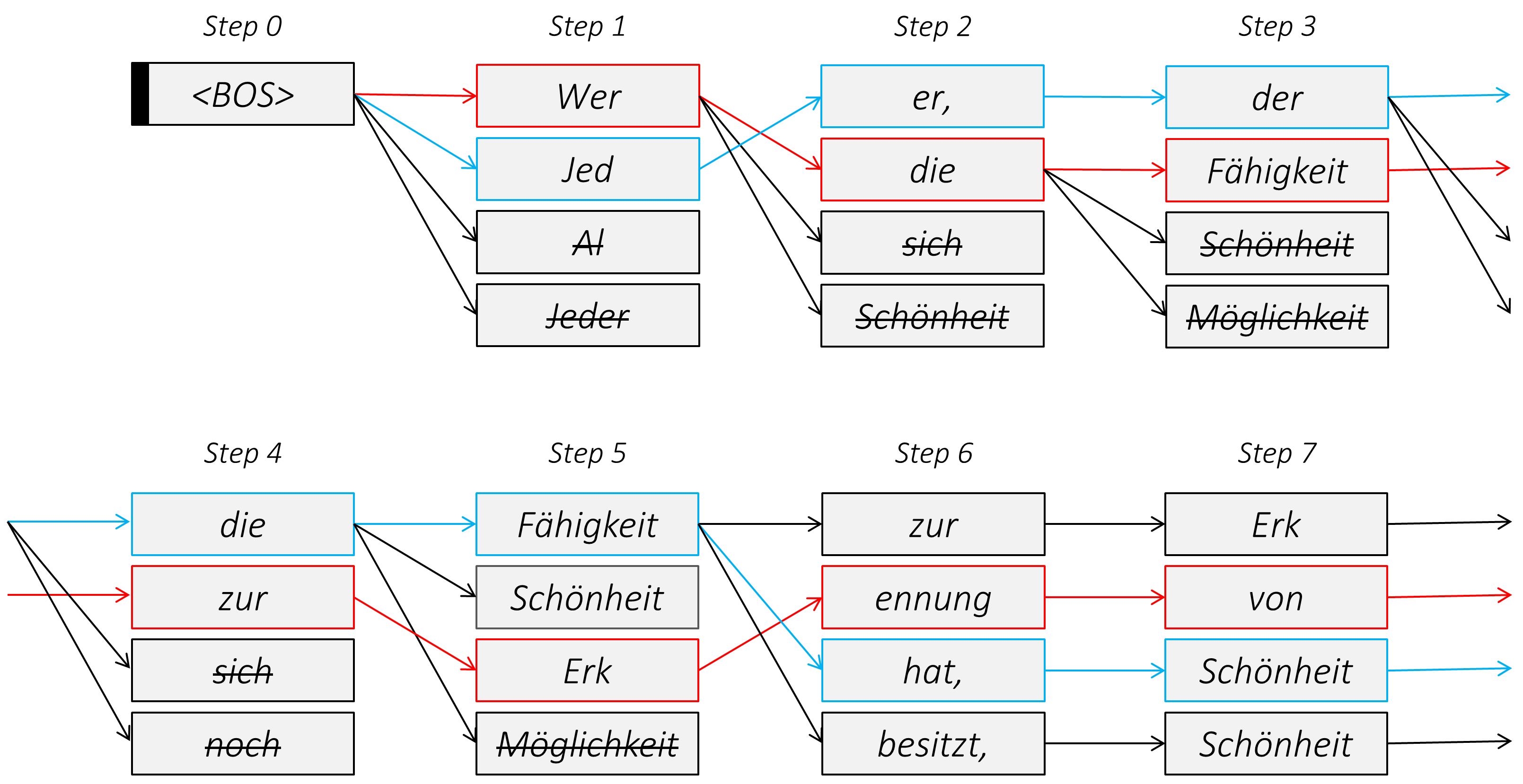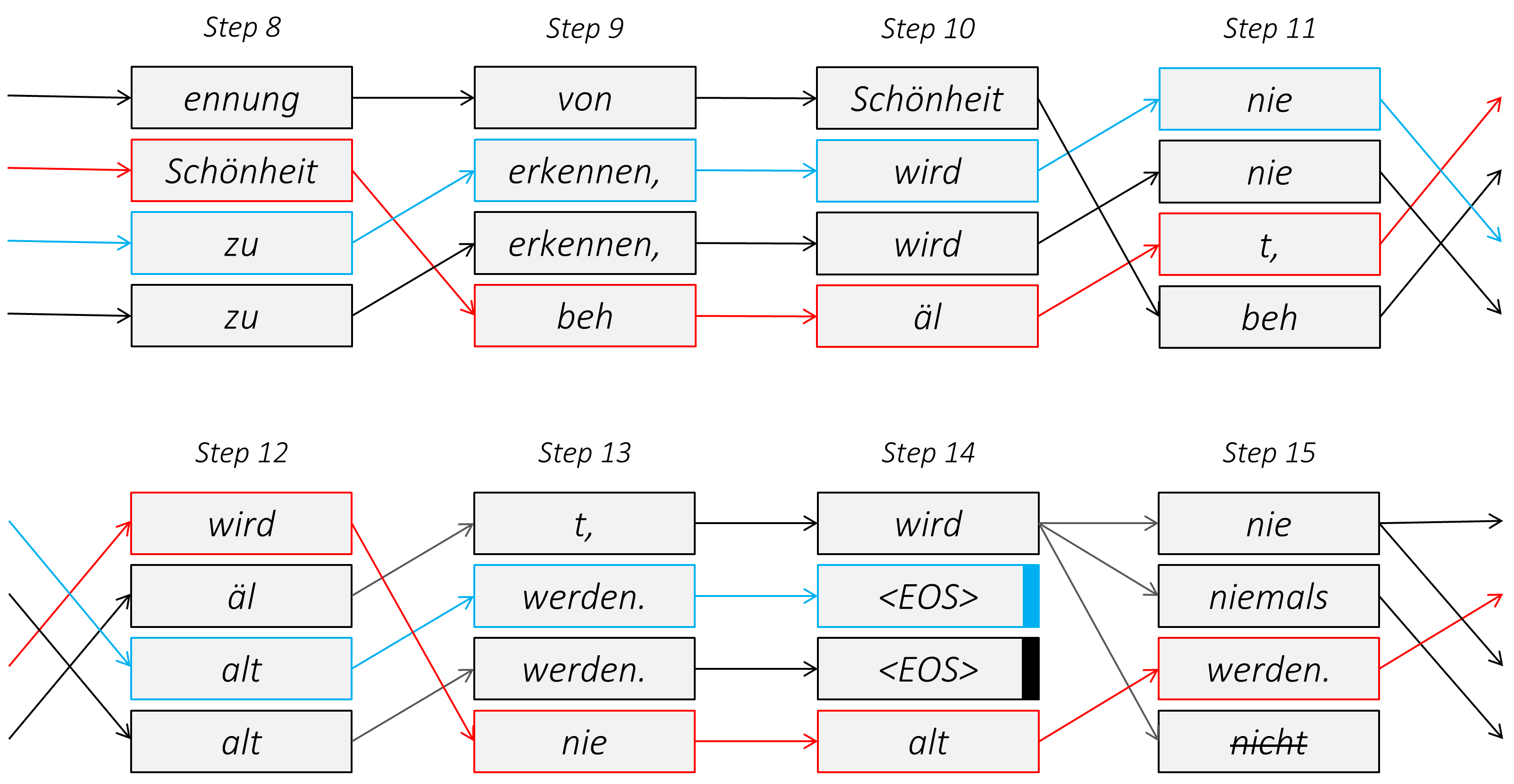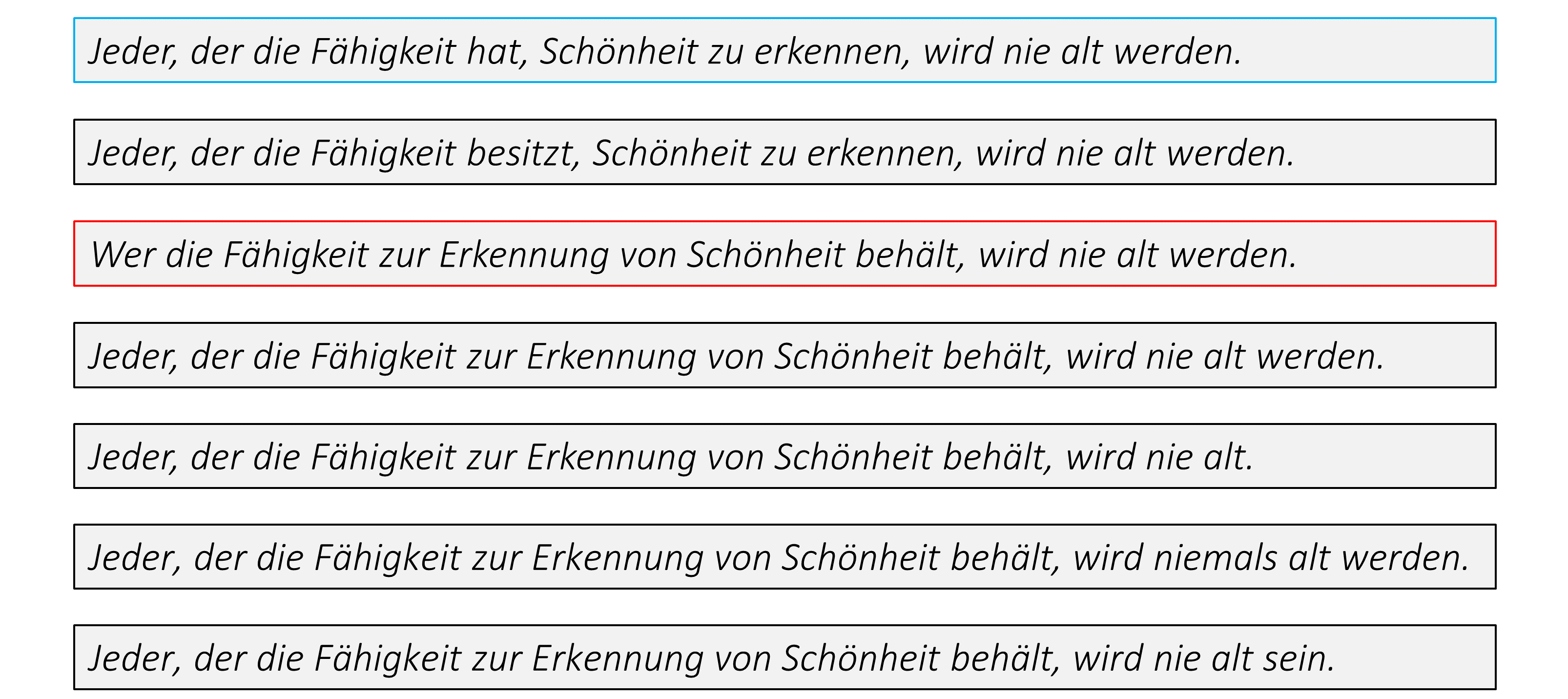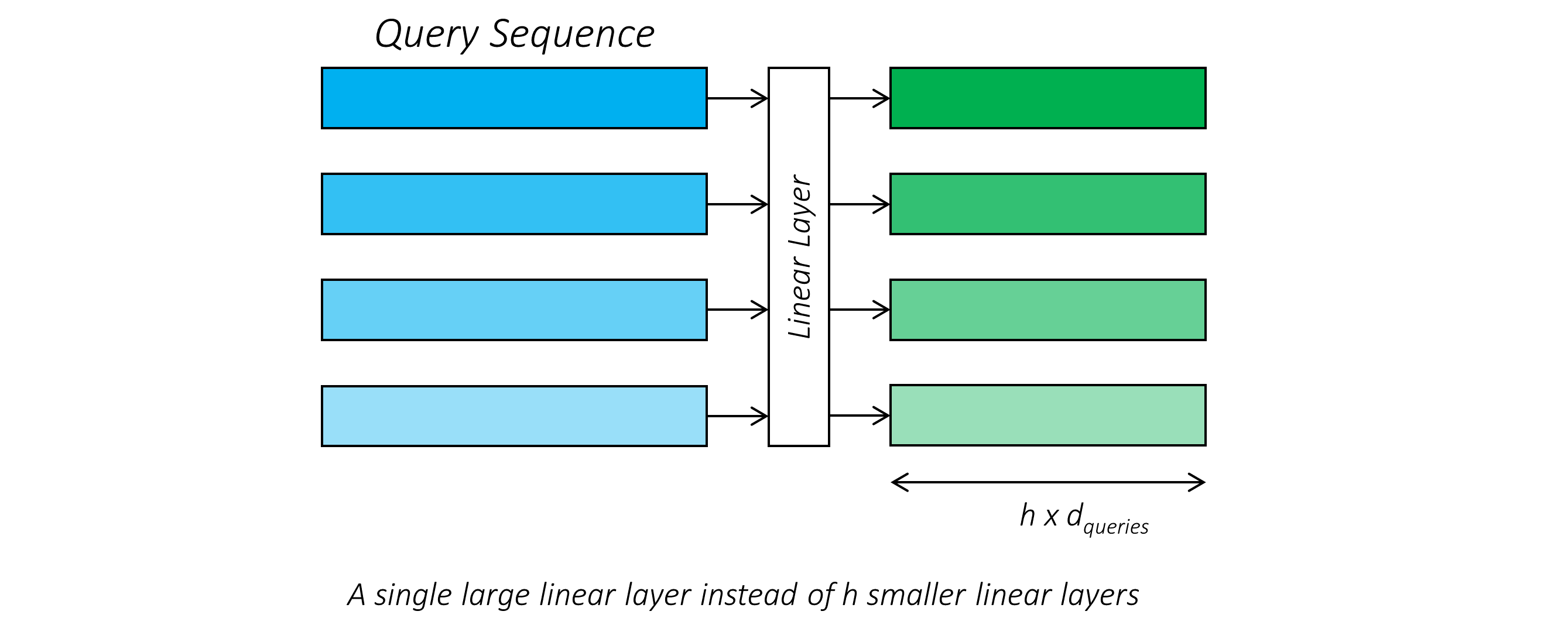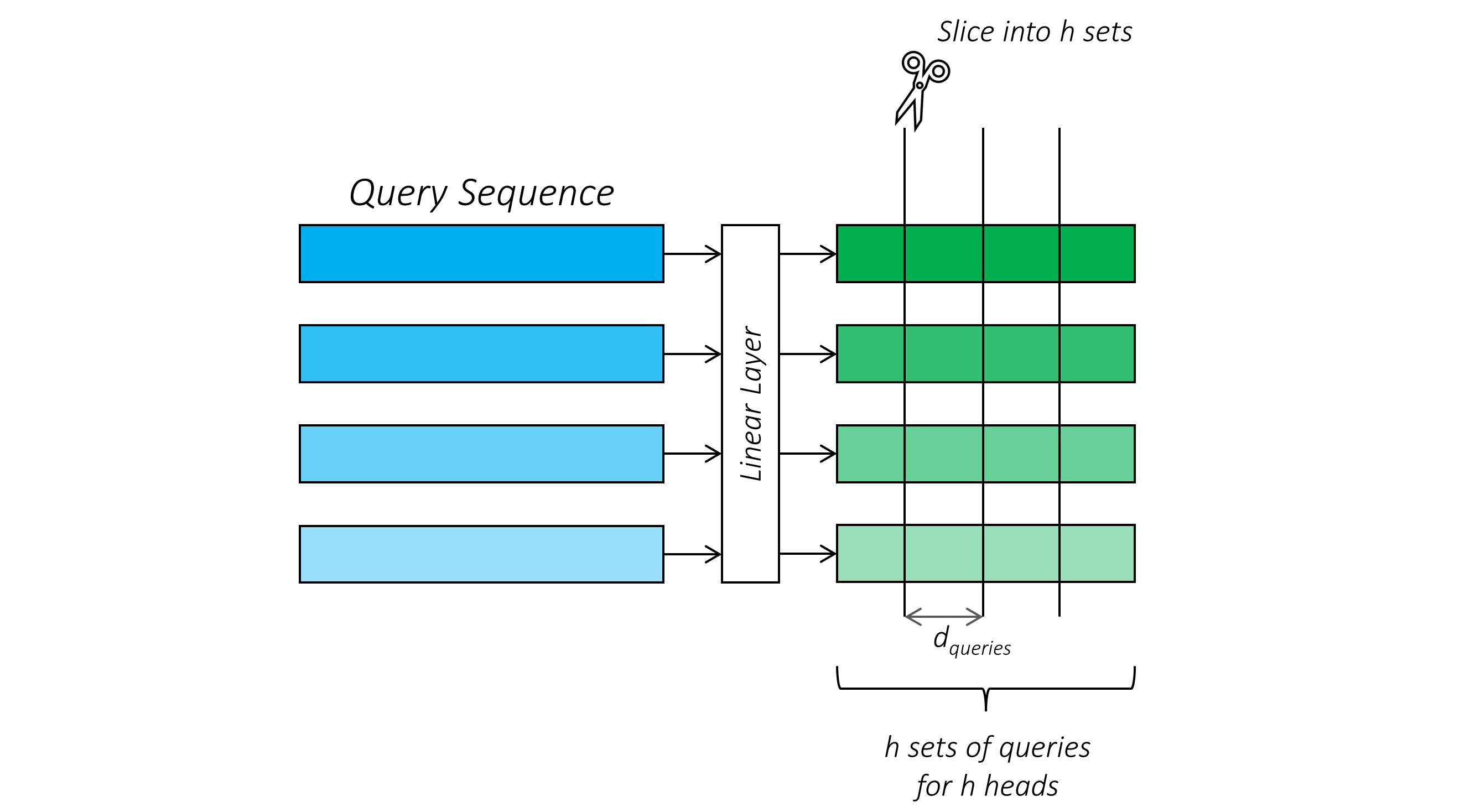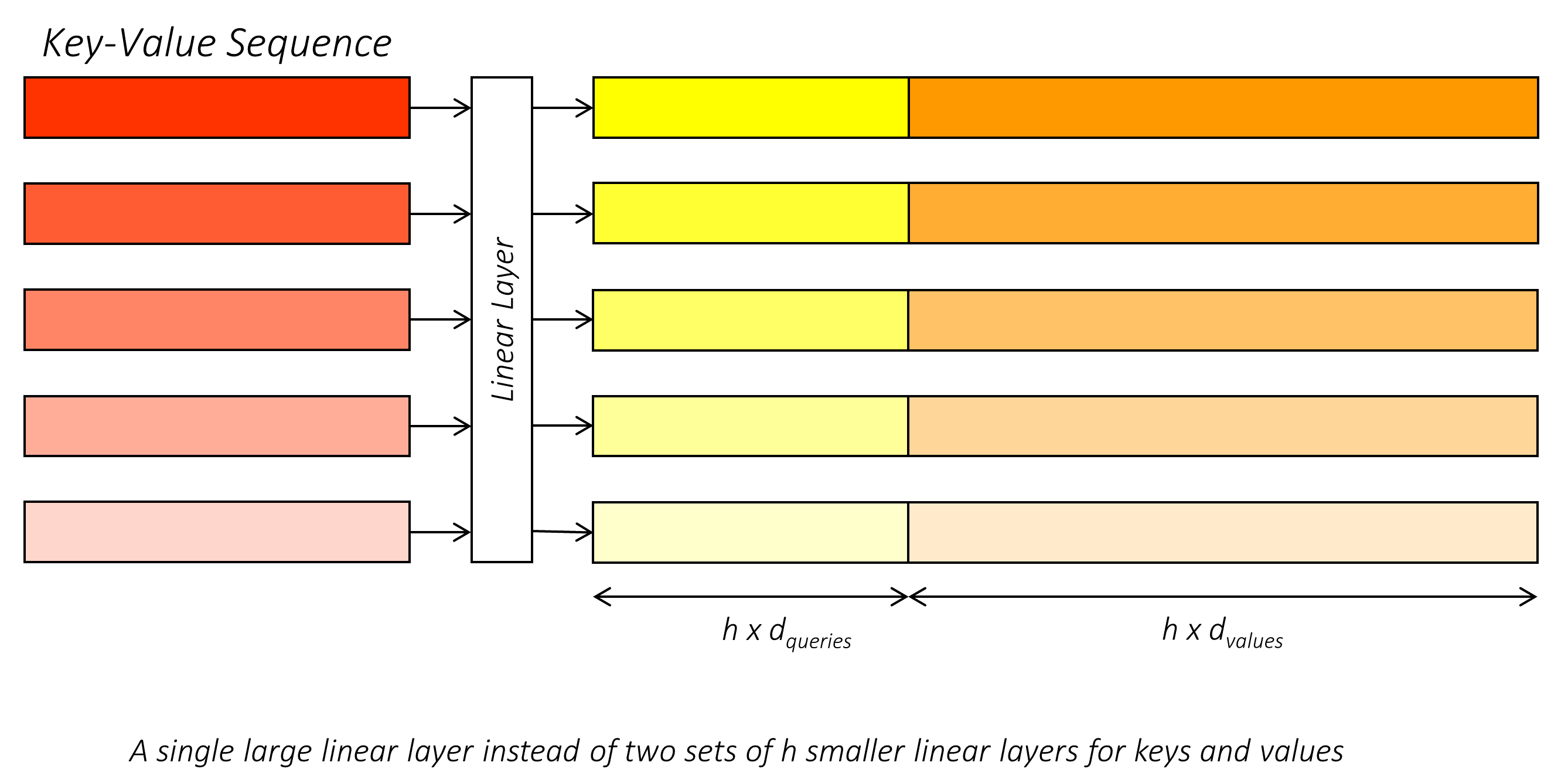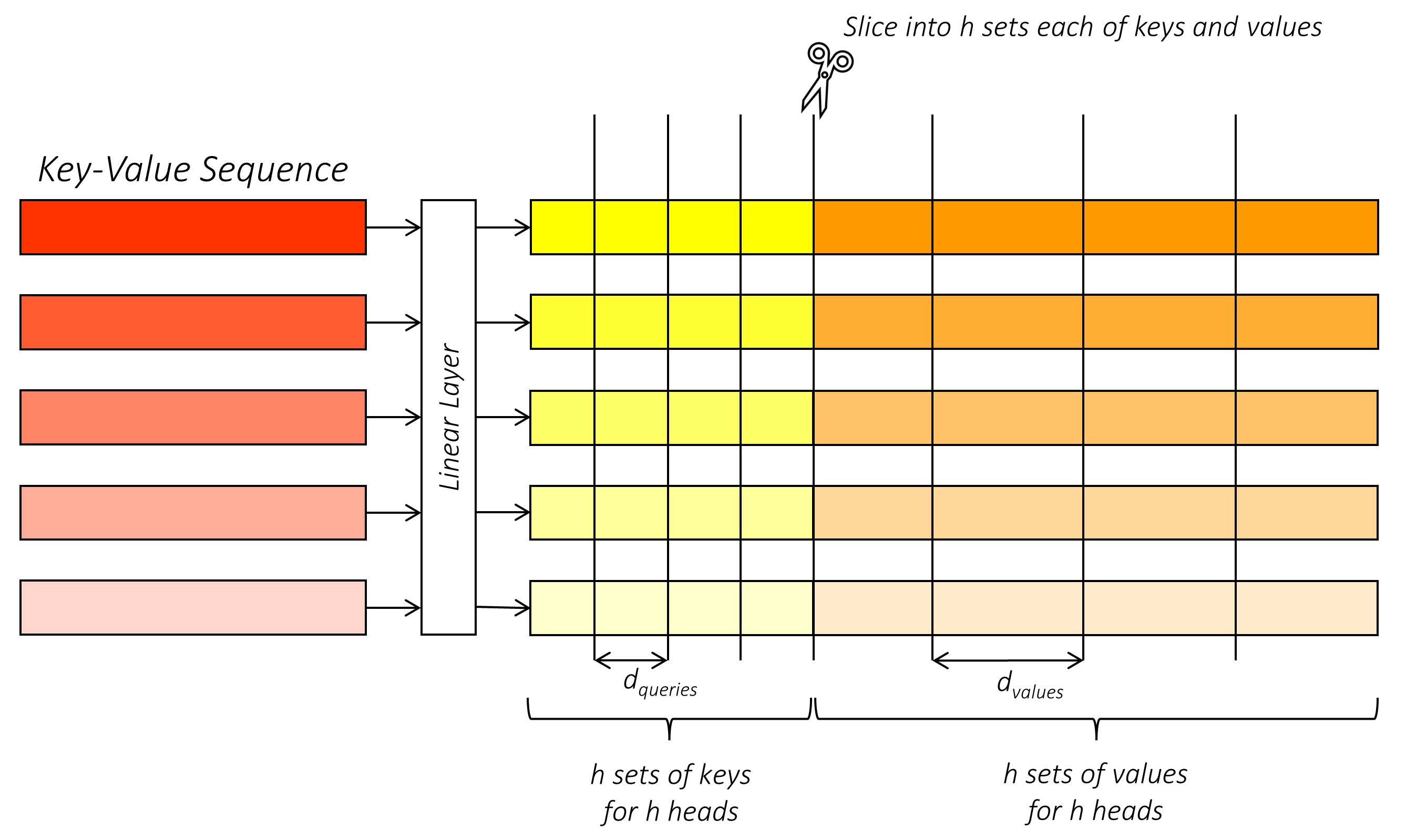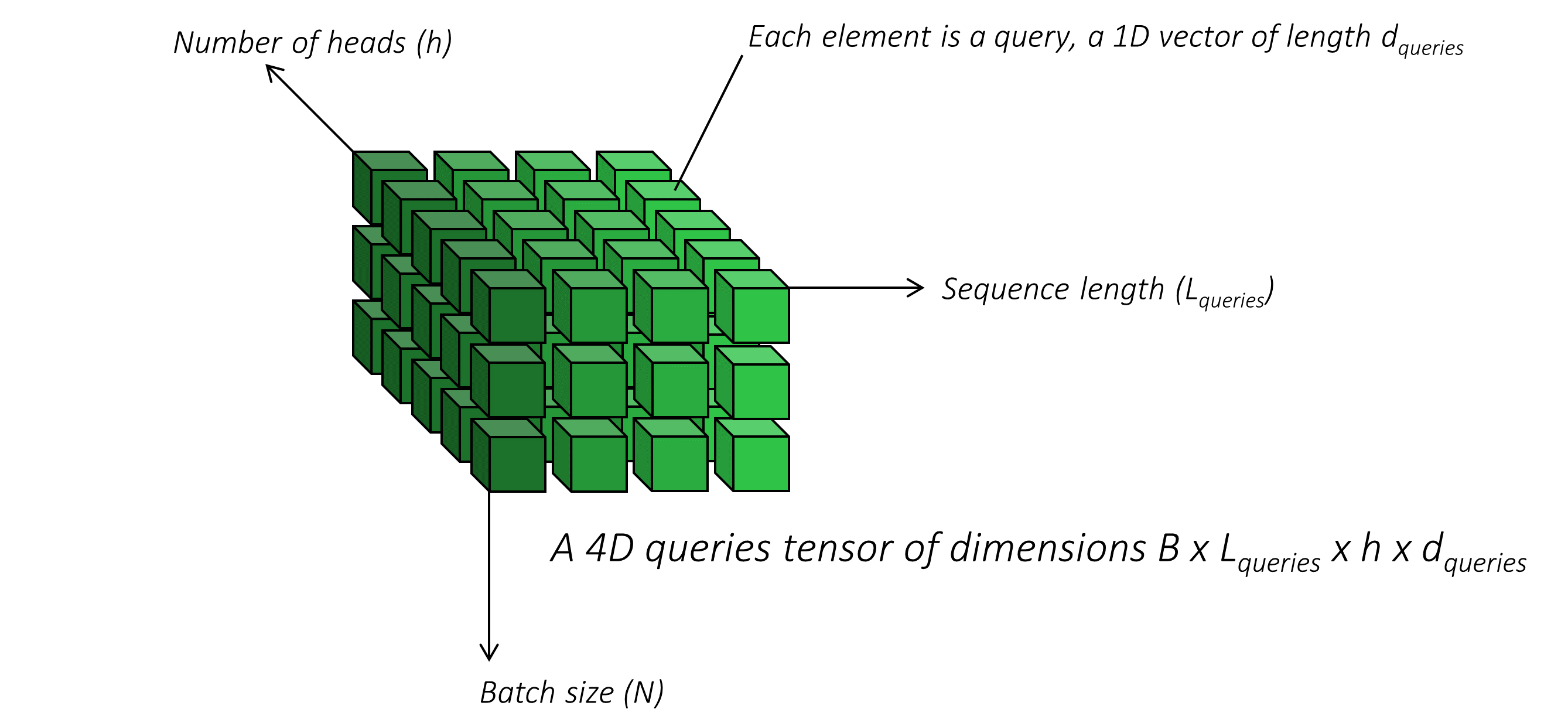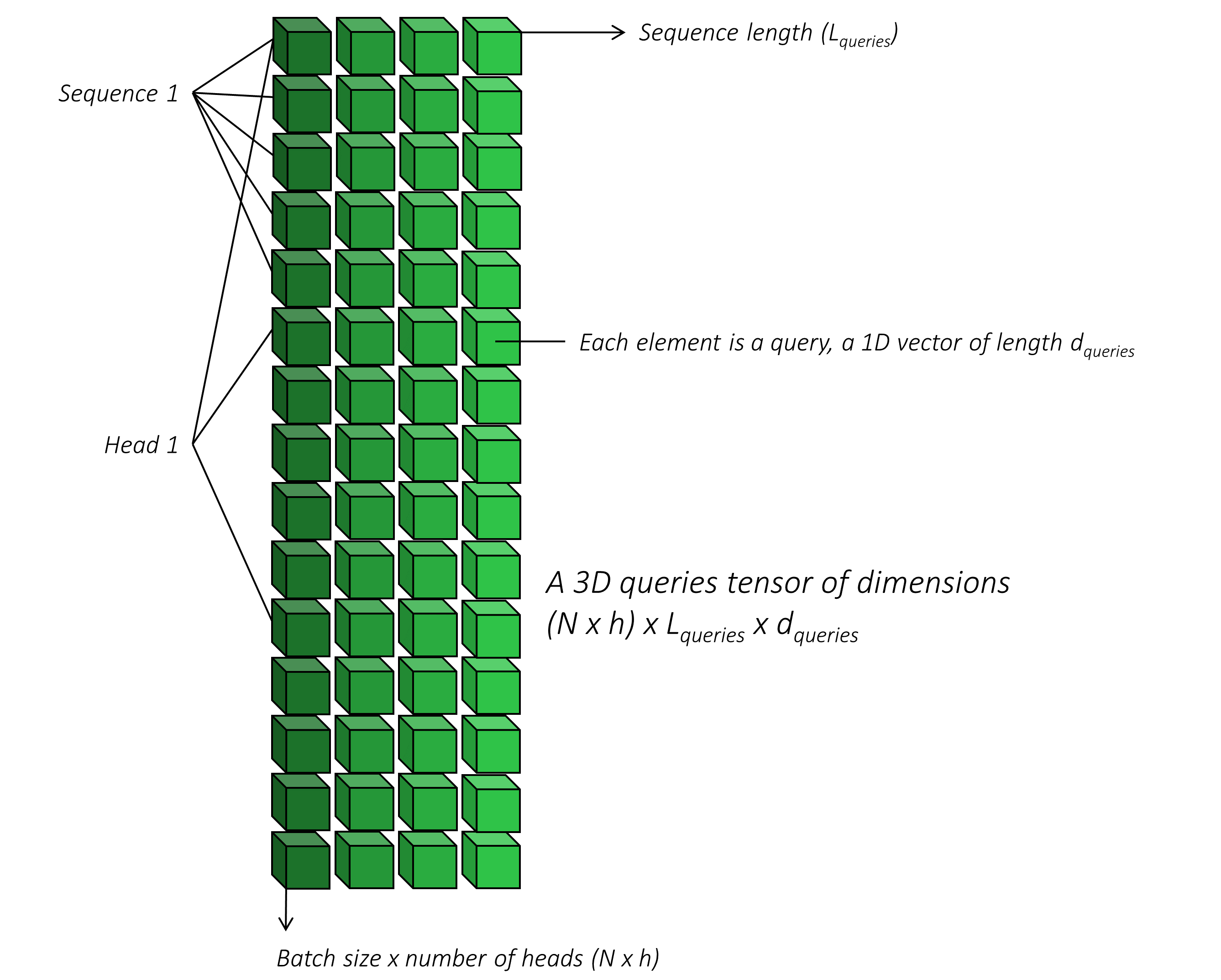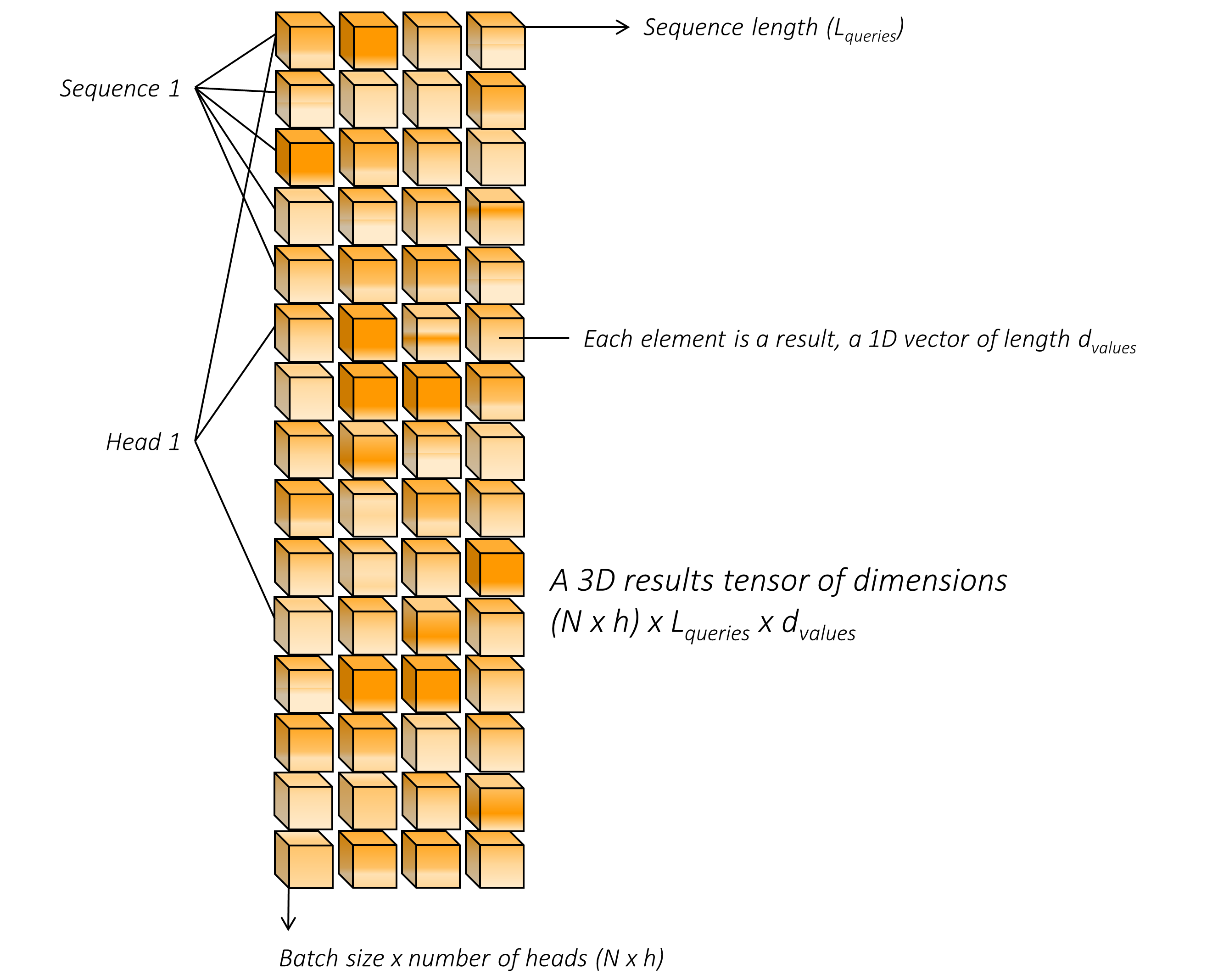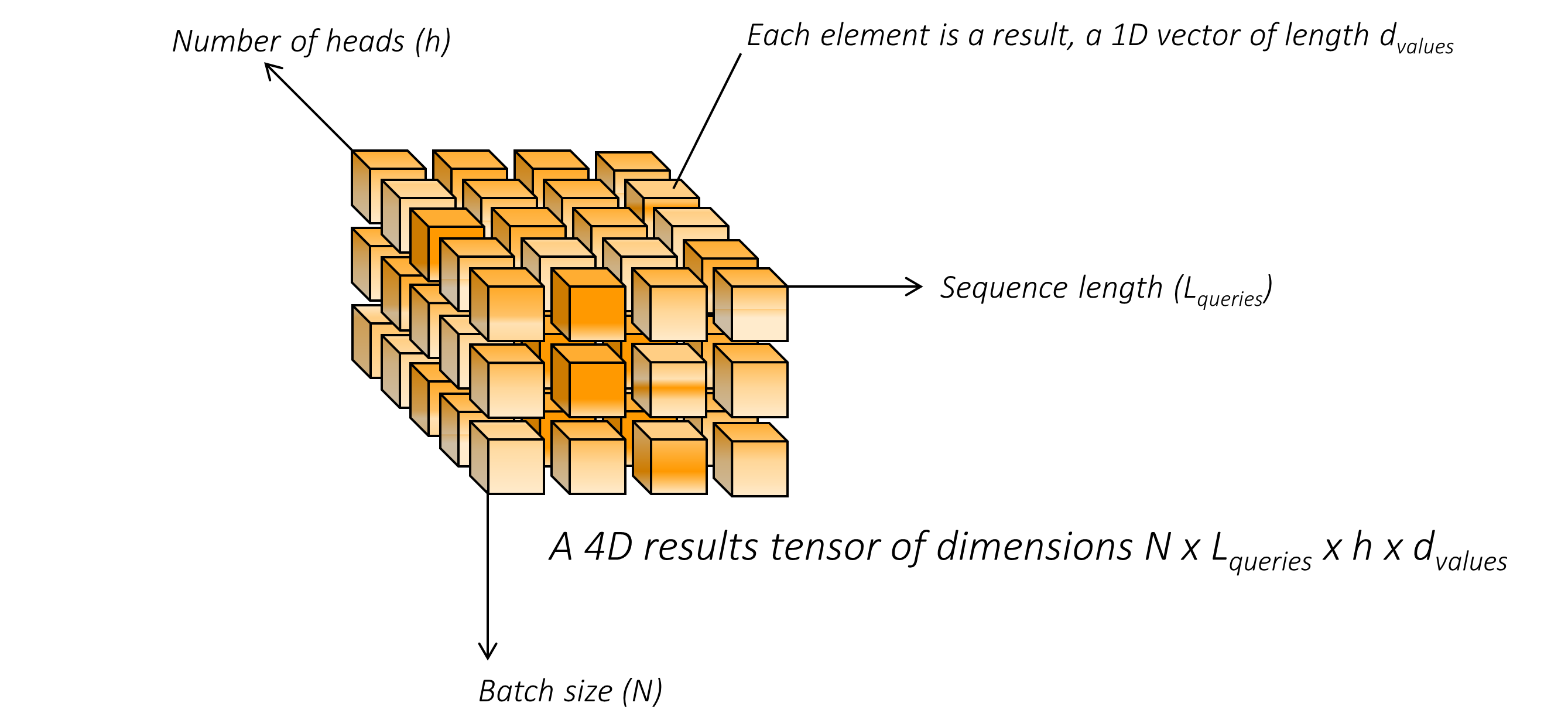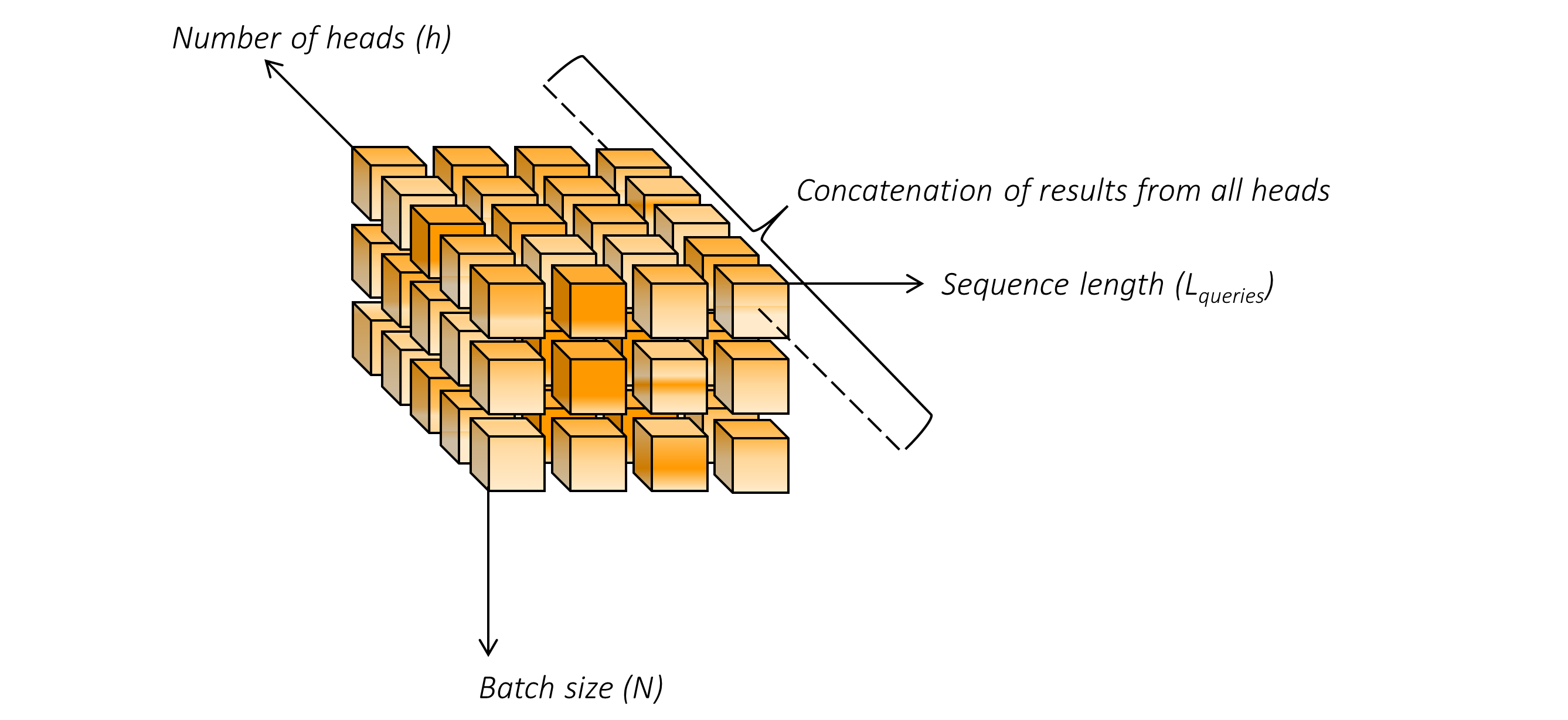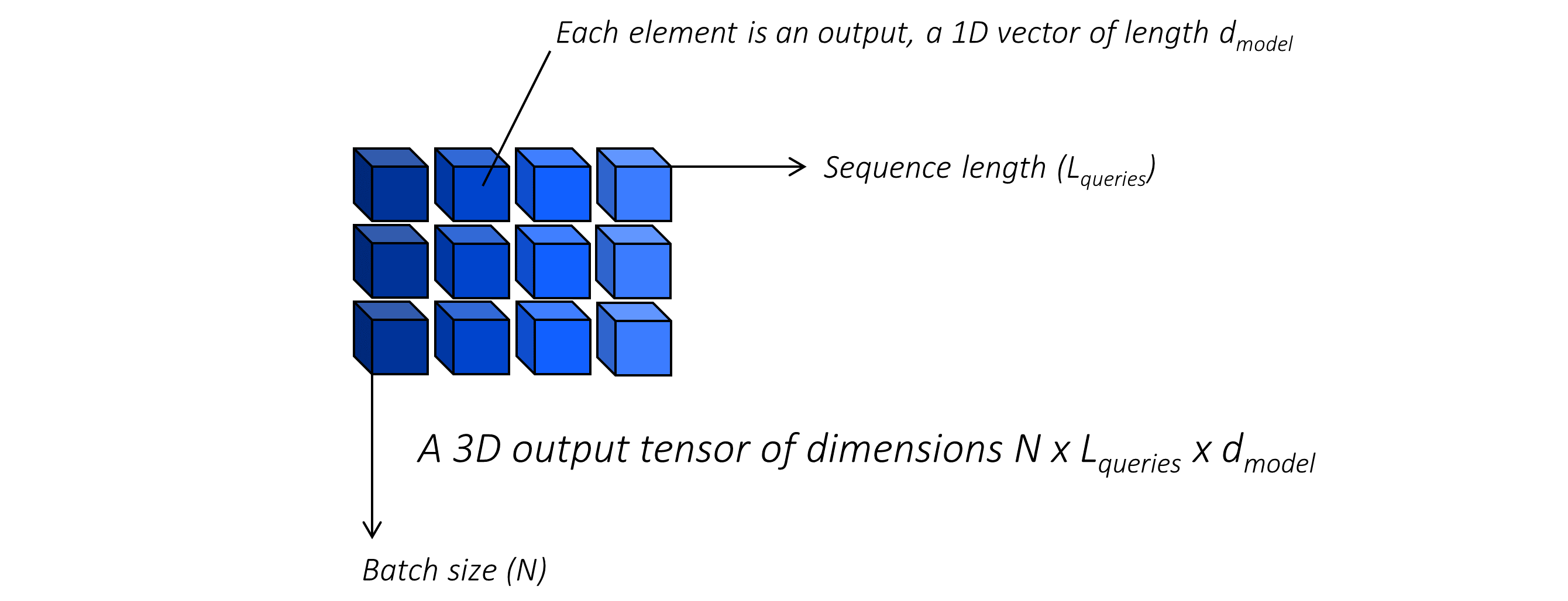This is a PyTorch Tutorial to Transformers.
While we will apply the transformer to a specific task – machine translation – in this tutorial, this is still a tutorial on transformers and how they work. You've come to the right place, regardless of your intended task, application, or domain – natural language processing (NLP) or computer vision (CV).
This is the sixth in a series of tutorials I'm writing about implementing cool models on your own with the amazing PyTorch library.
Basic knowledge of PyTorch is assumed.
If you're new to PyTorch, first read Deep Learning with PyTorch: A 60 Minute Blitz and Learning PyTorch with Examples.
Questions, suggestions, or corrections can be posted as issues.
I'm using PyTorch 1.4 in Python 3.6.
Broadly...
To build a transformer model.
More precisely...
To build a model that can generate an output sequence given an input sequence.
We choose an application that represents one of the most complex uses of a transformer – a sequence to sequence problem.
But once you understand the transformer, you can just as easily apply it to any task, application, or even domain (NLP or CV) of your choosing. After all, an image is also a sequence, but over two-dimensional space instead of time.
Even more precisely...
To build a model that can translate from one language to another.
Um ein Modell zu erstellen, das von einer Sprache in eine andere übersetzen kann.
We will be implementing the pioneering research paper 'Attention Is All You Need', which introduced the Transformer network to the world. A watershed moment for cutting-edge Natural Language Processing.
implementing 实施
Wir werden das wegweisende Forschungspapier "Attention Is All You Need" umsetzen, das das Transformer-Netzwerk in die Welt eingeführt hat. Ein Wendepunkt für die hochmoderne Natural Language Processing.
Specifically, we are going to be translating from English to German. And yes, everything written here in German is straight from the horse's mouth! (The horse, of course, being the model.)
Konkret werden wir vom Englischen ins Deutsche übersetzen. Und ja, alles, was hier in deutscher Sprache geschrieben wird, ist direkt aus dem Mund des Pferdes! (Das Pferd ist natürlich das Modell.)
-
Machine Translation. duh.
-
Transformer Network. We have all but retired recurrent neural networks (RNNs) in favour of transformers, a new type of sequence model that possesses an unparalleled ability for representation and abstraction – all while being simpler, more efficient, and significantly more parallelizable. Today, the application of transformers is near universal, as their resounding success in NLP has also led to increasing adoption in computer vision tasks.
-
Transformer 已经替代了 RNN, 有无与伦比的表示和抽象能力, 同时更简单、更高校、可并行性更强
-
Multi-Head Scaled Dot-Product Attention. At the heart of the transformer is the attention mechanism, specifically this flavour of attention. It allows the transformer to interpret and encode a sequence in a multitude of contexts and with an unprecedented level of nuance.
- Transformer 核心为注意力机制。它使 Transformer 能在多种情况下 以 细微差别 解释和编码一个序列
- Encoder-Decoder Architecture. Similar to RNNs, transformer models for sequence transduction typically consist of an encoder that encodes an input sequence, and a decoder that decodes it, token by token, into the output sequence.
- 由 编码器 和 解码器 组成,前者对输入序列编码,后者将输入序列逐个解码为输出序列
- Positional Embeddings. Unlike RNNs, transformers do not innately account for the sequential nature of text – they instead view such a sequence as a bag of tokens, or pieces of text, that can be freely mixed and matched with tokens from the same or different bag. The coordinates of tokens in a sequence are therefore manually injected into the transformer as one-dimensional vectors or embeddings, allowing the transformer to incorporate their relative positions into its calculations.
- 与 RNN 不同,Transformer 不考虑顺序,将顺序视为 一袋标记或片段,与其他袋子自由混合匹配。因此,序列中标记的坐标以 embedding (一维向量) 形式嵌入。
- Byte Pair Encoding. Language models are both enabled and constrained by their vocabularies. Machine translation, especially, is an open-vocabulary problem. Byte Pair Encoding is a way to construct a vocabulary of moderate size that is still able to represent nearly any word, whether it is known, seldom known, or unknown.
- 对于语言模型,字节对编码几乎可以表示任意单词
- Beam Search. As an alternative to simply choosing the highest-scoring token at each step of the generative process, we consider multiple candidates, reserving judgement until we see what they give rise to in subsequent steps – before finally picking the best overall output sequence.
- 同时考虑多个轨迹,选择后续步骤的最佳
总输出序列
In this section, I will present an overview of the transformer. If you're already familiar with it, you can skip straight to the Implementation section or the commented code.
Transformers have completely changed the deep learning landscape. They've replaced recurrent neural networks (RNNs) as the workhorse of modern NLP. They have caused a seismic shift in our sequence modeling capabilities, not only with their amazing representational ability, but also with their capacity for transfer learning after self-supervised pre-training on large amounts of data. You have no doubt heard of these models in one form or another – BERT, GPT, etc.
- transformer 有惊人的表征能力,有迁移学习能力
Today, they are also increasingly being used in computer vision applications as an alternative to, or in combination with, convolutional neural networks (CNNs).
As in the original transformer paper, the context presented here is an NLP task – specifically the sequence transduction problem of machine translation. If you want to apply transformers to images, this tutorial is still a good place to learn about how they work.
Recurrent neural networks (RNNs) have long been a staple among NLP practitioners. They operate upon a sequence – you guessed it – sequentially. This isn't weird at all; it's even intuitive because that's how we do it too – we read text from one side to another.
- 长久以来使用 RNN 是由于其序列性,这与阅读文本行为相同
On the other hand, our ability to train deep neural networks is somewhat predicated on our ability to perform efficient computation. The sequential nature of RNNs precludes parallelization – you cannot move to the next token in the sequence without processing the previous one. Training networks on large amounts of data can be significantly time consuming.
- RNN 的特性排除了并行化,不能高校计算
Transformers can process elements in a sequence in parallel.
The sequential processing of text in an RNN introduces another problem. The output of the RNN at a given position is conditioned directly on the output at the previous position, which in turn is conditioned on its previous position, and so on. However, logical dependencies in text can occur across longer distances. It is often the case that you need access to information from a dozen positions ago.
- RNN 在给定位置的输出取决于前一个位置,但真实文本的依赖关系可跨越更长距离
No doubt some of this information can persist across moderate distances, but a lot of it could have decayed in the daisy-chain of computation that defines the RNN. It's easy to see why – we're relying on the output at each position to encode not only the output at that position but also other information that may (or may not) be useful ten steps down the line, with the outputs of each intervening step also having to encode their own information and pass on this possibly relevant information.
There have been various modifications to the original RNN cell over the years to allievate this problem, the most notable of which is probably the Long Short-Term Memory (LSTM) cell, which introduces an additional pathway known as the "cell state" for the sequential flow of information across cells, thereby reducing the burden on the cell outputs to encode all of this information. While this allows for modeling longer dependencies, the fundamental problem still exists – an RNN can access other positions only through intervening positions and not directly.
-
LSTM 为了解决单节点编码过多问题,为单元间信息的顺序流动引入“单元状态”额外途径,减轻负担。
-
但还是只能通过介入间接访问其他位置
Transformers allow direct access to other positions.
This means that each position can use information directly from other positions in a sequence, producing a highly context-aware and nuanced output. This, along with other design choices we will see later, makes way for transformers' unprecedented representational ability.
- 直接对上下文的访问,造成了 transformer 强大的表征能力
The "direct access" we are speaking of occurs through an attention mechanism, something not completely unlike attention mechanisms you may have encountered earlier – for example, between an RNN encoder and decoder. If the concept is completely unfamiliar to you, it doesn't matter as we will go over it in quite some detail very soon.
- 直接访问是由 "注意力机制" 实现的
I would like to point out here that RNNs need not be unidirectional. Since important textual context can occur both before and after a certain position in the sequence, we often use bidrectional RNNs, where we operate two different RNN cells in opposite directions and combine their outputs. On the other hand, a transformer layer is inherently bidirectional – unless we choose to constrain access to a particular direction, as we will see later.
- 普通RNN为单方向,但也可以为双方向(相反反向操作两个不同 RNN 单元,并将合并输出),Transformer 本来为双向
Also note that in RNNs, information about the positions of individual elements in the sequence are inherently encoded into the RNN by the fact that we process them in a specific order. If in a transformer, they are being processed all at once, we need another way of introducing this positional information. We will explore this later on.
- RNN 中序列的位置信息被编码,在 transformer 中同时处理所有消息,需要另外一种 位置编码
Another thing to keep in mind is that, during inference, the part of a trained transformer network that deals with the generation of a new sequence still operates autoregressively, like in an RNN, where each element of the sequence is produced from previously generated elements. During training, everything is parallelized. Encoding a known sequence, such as the input sequence, is always parallelized.
- 推理过程中,Transformer 依然是自回归的,序列元素由前一个元素生成
- 训练过程中,对输入序列的编码,是并行化运算的
Words? Not necessarily.
In fact, over the years, we've tried just about everything – characters, words, and... subwords.
Subwords can be characters, words, or anything in between. They are a nice trade-off between a compact character vocabulary with units that aren't meaningful by themselves that produce extremely long sequences, and a monstrously large vocabulary of full words that would still be completely tripped up by a new word. Subwords allow for encoding almost any word, even unseen words, with a relatively compressed vocabulary size.
- subword 可以编码任意单词,甚至是没见过的单词,且词汇量较小
To create an optimal vocabulary of subwords, we will be using a technique called Byte Pair Encoding, a form of subword tokenization. We will study how this works later. For now, I only wanted to give you a heads up in case you're wondering why the sequences in our examples are not always split into full words.
- Byte Pair Encoding
As an example, let's consider the following –
The most beautiful thing we can experience is the mysterious. It is the fundamental emotion which stands at the cradle of true art and true science.
This is a quotation from Albert Einstein, but only a translation because he originally said it in his native German –
Das Schönste, was wir erleben können, ist das Geheimnisvolle. Es ist das Grundgefühl, das an der Wiege von wahrer Kunst und Wissenschaft steht.
The model implemented in this tutorial back-translates this common English translation back to German, as –
Das Schönste, was wir erleben können, ist das Geheimnis: Es ist die grundlegende Emotion die an der Wiege der wahren Kunst und der wahren Wissenschaft steht.
The model does a fairly good job, as far as I can tell. It opts for the noun Geheimnis (instead of the adjective Geheimnisvolle) which is primarily used to mean something akin to "secret" rather than "mystery", but the context is still clear. Also, it presents the output as a single sentence which is not surprising because it was trained predominantly on single sentences.
The English quote above is tokenized as follows –
The most beautiful thing we can experience is the mysterious. It is the fundamental emotion which stands at the cradle of true art and true science.
["_The", "_most", "_beautiful", "_thing", "_we", "_can", "_experience", "_is", "_the", "_myster", "ious", ".", "_It", "_is", "_the", "_fundamental", "_emotion", "_which", "_stands", "_at", "_the", "_c", "rad", "le", "_of", "_true", "_art", "_and", "_true", "_science", "."]The German translation by the model is tokenized as –
["_Das", "_Schön", "ste,", "_was", "_wir", "_erleben", "_können,", "_ist", "_das", "_Geheim", "nis", ":", "_Es", "_ist", "_die", "_grundlegende", "_Em", "otion", "_die", "_an", "_der", "_Wie", "ge", "_der", "_wahren", "_Kunst", "_und", "_der", "_wahren", "_Wissenschaft", "_steht."]We will use this English-German input-output pair as an example frequently through this tutorial, although there may be other examples as well.
You can see in the tokenization that common words are retained as full words, but others are split into multiple parts. The "_" (underscore) character signifies the beginning of a word in the original sentence.
- 常规单词被整个训练, 未见单词被分为多个部分
From this point on, I will simply refer to the units in a sequence as tokens.
While a transformer is quite different in its inner working compared to an RNN, they do take on a structure that you may already be familiar with – an encoder and a decoder.
The goal of the encoder is to encode the input sequence into a deep, "learned" representation. Like in an RNN, this involves encoding each token in the sequence.
- encoder 将输入序列 编码为 highly learned representation
The goal of the decoder is to use this encoded representation of the input sequence to produce the output sequence. Like in an RNN, during training, we use something called teacher forcing – we use every word from the true output sequence to learn to generate the next true word in the sequence. But while an RNN still processes the input sequence and generates sequentially, a transformer does it in parallel.
- decoder 使用输入序列的编码产生输出序列,使用 ** teacher forcing **, 如图中黄色部分,使用真值来学习下一个输出。这个过程同样为并行。
- 实施过程中, decoder 是自回归的
During inference, the decoder operates autoregressively, which means that it generates one word at a time, each of which is used to generate the next word.
The first generation is prompted with a <BOS> token, which implies "beginning of sequence – start generating".
In the next step, the second token is generated from the first generation.
And then, another.
You get the drift. The generative process is terminated upon the generation of an <EOS> token which signifies "end of sequence – I'm done".
- 依据不同任务 可能仅需要 解码器,编码器或两者
Depending on the task at hand, you need either only the encoder, only the decoder, or both –
-
A sequence classification or labeling task requires only the encoder. Popular transformer models like BERT are encoder-only.
-
A sequence-to-sequence task (such as machine translation in this tutorial) conventionally uses both the encoder and decoder in the set-up we just described. Popular transformer models like T5 and BART are encoder-decoder formulations.
-
Sequence generation can also be accomplished by a decoder-only model, where the input sequence or prompt can be used as the first bunch of tokens in an autoregressive decoder. The popular GPT family of transformer models are decoder-only.
-
GPT 是一种仅有 decoder 的 transformer
In fact, after this tutorial, it will be easy for you to read and understand the research papers for these and other popular transformer models because they adopt, for the most part, the same transformer architecture with some modifications.
Now, without further delay, let's dive into what makes a transformer... a transformer.
Consider a search problem.
The goal is, given a query, to find a value that is most closely matched to it. This will be accomplished by comparing the query to a key associated with each candidate value.
- 目标是找到与 query 最匹配的 value
But in real life, there is rarely a single relevant match – relevancy is a spectrum!
- 但是相关性通常是一个 范围
Would it then make sense to return a weighted average of the values instead as the result?
Yes, it would absolutely make sense, especially if the values are vectors or embeddings, where the different dimensions numerically encode various (and often abstract) properties!
- 当values是向量或者 embeddings 时,查询结果的加权组合是很有意义的
This process, in a nutshell, is the attention mechanism. The query is attending to the values via their keys. In other words, they query pays varying (but appropriate) degrees of attention to the different values, producing an aggregate, nuanced result that best represents that query in the context of these values.
- 这个过程就是注意力机制,queries 对不同的 value 给与不同程度的 attention, 产生综合、细致入微的结果
The terms queries, keys, and values were unfamiliar to me when I first read this paper. I suppose they're borrowed from database terminology. While not complex, they may be new to you as well and may take some time getting used to. At this point, remember only this – with an attention mechanism, you can represent any token in your sequence, i.e. query, as some appropriately weighted sum of representations of all tokens, i.e. values, in the same or entirely different sequence.
- 可以将序列中的任何 token 即为 query 表示为相同或 完全不同序列中所有标记 即 value 的某种加权之和
Attention mechanisms are used commonly with RNNs, especially between an RNN encoder and decoder. In one of my earlier tutorials, we used an attention mechanism in conjunction with an RNN decoder, where at each decoding step (query), we paid more attention to parts of the image (values) that are relevant at that decoding step and less attention to parts (values) that aren't relevant.
- attention 机制通常应用于 RNN encoder 和 decoder 之间
In transformers, however, attention mechanisms not only abound – they are the driving force. Transformers are chockablock with attention mechanisms. I repeat, they're stuffed to the gills with attention mechanisms. Because, as the title of the paper declares, attention is all you need!
- transformer 被注意力机制塞得满满的
Okay, now that I've hyped it up, you might be wondering exactly how the attention mechanism works. How is a query matched to the keys that represent the values? There are several different ways this can be accomplished.
In the transformer, we use multi-head scaled dot-product attention. Let's unpack this ominous-sounding name, shall we?
- 多头怪物
Consider two sequences.
I have not used the English and German sequences from earlier as examples here, because the query sequence and key-value sequence can be either, as you will see later. For now, consider any general sequence
-
- query * 序列和 key-value 序列可以是任意的,考虑两个广义序列 a and b
The query sequence is composed of tokens that are to be queried against the tokens in the key-value sequence. That is, each token in the query sequence attends to each token in the key-value sequence. The goal, then, is to ultimately represent each token in the query sequence in the form of a weighted sum of representations of the tokens in the key-value sequence.
-
- query * 的每个序列都 attneds key-value 序列的每个 token
-
最终目标: 以 key-value 中 token 的加权和 表示 query 序列中的每个 token
Now, each token in the query sequence is to be queried, but is it already a query? Not yet. For example, the token could be represented as an embedding from a dictionary of token-embeddings. This may not be the optimal space for querying.
To generate the queries, we project current token representations with a simple linear layer into a query-space. This projection is part of the model and is learned.
- 为将 query sequence 转化为最终的 queries , 使用一个简单的 线形层将当前 token 投影至 query-space
Similarly, tokens in the key-value sequence represent keys and values, but are not yet the keys and values. We project these token-representations into keys and values with linear layers.
- key-value sequenche 也通过线形层投影成为 keys and values
Naturally, these projections are learned during training. For the keys, the tokens should be projected into a space suitable for comparision with the queries. For the values, the tokens should be projected into a space that suitably represents the essence of these tokens because they will be used in a weighted average to represent each query.
- 对于 key , tokens 应被投影至适合于 queries 比较的空间
- 对于 values, 应被投影至适合表示 values 本质的空间,因为他们将被加权表示查询
After the queries, keys, and values (each a one-dimensional vector) are created, we move on to quantifying the match between the queries and the keys.
As you may have surmised already, this can be done with a dot-product.
- dot-product 衡量相似度
Hence the name – dot-product attention. There are other ways to do it too. For example, you could concatenate queries and keys (or representations thereof) and feed them through one or more linear layers that ultimately produce a scalar (single-valued) similarity score. This is known as additive attention, originally from this paper which – as far as I'm aware – was the first application of attention in a modern neural network.
- 可以将 query 和 keys 串联起来,通过一或多个线形层,最终残生标量相似度分数,即 additive attention
The dot-products are then passed through a softmax layer to convert them to percentages.
- softmax 层 dot-product 输出转化为 百分数
We can now precisely describe how the attention of each token in the query sequence is divided between the tokens in the key-value sequence. That is, we are able to say something along the lines of "token X in the query sequence attends 50% to token A, 10% to token B, and 40% to token C in the key-value sequence".
- 注意力机制即为各个 values 所占的百分比
The result for each query can thus be calculated as a weighted average of the values in these same proportions.
And voilà – through the attention mechanism, we have now reimagined and reinterpreted each token in the query sequence in the appropriate context of the key-value sequence.
- 我们在上下文 key-value 序列中 * 重新想象 * 和 * 增强了 * query 序列中的每个 token
The easiest way to understand the value in doing this is to consider what we call self-attention, where the query and key-value sequence are the same! This means that the tokens in a sequence attend to all the tokens in the same sequence. For example, in machine translation from English to German, each English token is originally represented by itself – an embedding that represents that token alone, with no situational awareness. Through the attention mechanism, we are able to reimagine and reinterpret each English token in the context of the entire English sentence! The token will now be represented in a richer, more nuanced form that provides a better understanding of the token for the purposes of translation.
- self-attention: query 和 key-value 序列是相同的
- 通过 attention 机制,我们能够 在整个上下文序列中 reimagine 和 reinterpret 每个 token
- 现在 token 更加丰富、细微
On the other hand, you could also consider cross-attention, where the query and key-value sequence are two different sequences – for instance, the German and English sequences, respectively. As we translate to German, we can query translated German tokens with respect to highly nuanced representations of the English sequence (produced by self-attention), enriching them with the knowledge required to further the translation. In fact, as you will see, we will do exactly this.
- 另一方面,考虑cross-attention, 由 self-attention产生的序列 查询 已翻译德语标记
Finally, you could reproject the result from the attention mechanism into some other, more optimal space with your desired dimensionality.
- 最终可以将注意力机制的结果重新投影到其他更理想的空间中
It's easy to see that the attention mechanism operates upon tokens in parallel, unlike whatever happens in an RNN, because the attention of a particular token in the query sequence does not depend upon the attention of any other token in that sequence – they are independent of each other!
- query 查询时,其每个 token 间的注意力是独立的 ! 可并行计算
The dot-product of two vectors is unnormalized. If the two vectors – queries and keys – are very highly dimensional, the magnitude of the dot-product could potentially be quite large, since we're summing as many terms as there are dimensions to compute the dot-product.
This, in turn, would push the subsequent softmax operation to regions where the gradients during back-propagation would be very small, limiting the ability of the network to learn.
The authors of the paper therefore elect to normalize the dot-product with the number of dimensions in the two vectors – specifically, with
The entire attention mechanism we just described is single-head attention. The query sequence is attending to the key-value sequence just once – producing one interpretation of each query.
But if you think about it, languages are rich and complex. If we asked ten different people to describe the relationships between the tokens in a sentence, they'd probably all answer differently – and they might all be right.
This is because there are often multiple valid interpretations of the context for a query. For instance, one person may relate nouns predominantly to the adjectives that describe them, and another might relate nouns more strongly to other nouns constituting subject-object relationships. And in the smorgasbord of abstractions that we call a neural network, you can expect a penchant for a huge variety of different interpretations that are each profoundly or obscurely useful to the task at hand.
How would this work? Instead of producing a single set of queries, keys and values, we produce
For example, we'd use
Similarly, we'd create
We perform the scaled dot-product attention operation (independently) for each set.
Finally, we produce a single representation for each query by concatenating the results from all attention heads and transforming to the required dimensionality.
This is all quite wonderful – but wouldn't it get terribly expensive to perform all this computation? Yes – but no!
- 应该是在这里合并冲突
If in single-head attention, we were using queries, keys, and values of dimensions
-当你使用 multi-head transformer 时,可以通过将维度减少至原来 1/h 来保持同样运算量
Since the heads are completely independent of each other, they are easily parallelized.
And there we have it – multi-head... scaled... dot-product... attention.
Don't worry if the concepts we've discussed so far seem hazy to you – it was for me too – because they will solidify in your mind soon. If anything, I find the attention mechanism in the transformer to be much more intuitive than the complex machinations of the LSTM cell. Begone, RNN!
I'm aware that in the figures above, I've introduced a bajillion vectors with those pesky coloured rectangles. What are their dimensionality?
- 上面图片中矩形的维度是什么
For convenience, the query and key-value sequences will have the same number of dimensions
- query sequence 和 key-value sequence 具有相同的维度,但无需 size 相同
Queries and keys must be of the same dimensionality
- quert 和 keys 间必须有相同维度
Values can be of any desired number of dimensions
Naturally, the results for each query from the attention mechanism will also be of the same dimensions because they are weighted sums of values.
The final output can be of any dimensionality. But for convenience, and for enabling residual connections across the attention mechanism, we will use the same number of dimensions as in the input sequences
- 输出可以是任何维度,为了方便建立残差联系,使用与输入序列相同的维度
In fact, as the name suggests, we will use
The entire multi-head scaled dot-product attention mechanism can be encapsulated and represented in the form of a neural network layer, whose learnable parameters are the parameters of the linear layers that produce the queries, keys, values, and the final outputs from the attention-weighted results.
- multi-head scaled dot-product attention 可以以神经网络层的形式封装表示,可学习参数为 产生 query,key,value,results 的线性层的参数
To reiterate, in self-attention, the tokens in a sequence attend to all the tokens in the same sequence. Tokens that are originally represented by embeddings that represent that token alone, with no situational awareness, can be transformed into representations that provides nuanced interpretations of these tokens in the context of the sequence they are a part of. Stacking such self-attention layers builds upon these contexts, progressively reinterpreting and reimagining their meaning in the light of previous learnings. This is something that would benefit both sequences in a sequence-to-sequence setting – the English and German sequences, in this tutorial.
- 重申,在self-attention 中,序列中标记关注同一序列的所有标记。最初由 embedding 表示的标记,转化为在序列上下文中细致入微的解释。 并根据先前学习,逐步重新解释和想象其含义。
In the rest of the tutorial, we will denote a self-attention layer with a single colour, indicating that the query and key-value sequences are the same.
- 使用一种颜色表示 self-attention ,query 和 key-value 为用以 sequence。
- 在 cross-attention 中,使用不同序列来解释一个序列。推理过程中新序列产生是零碎的-tokens 一个一个生成。(训练过程仍然是并行的)
In the rest of the tutorial, we can denote a cross-attention layer with two different colours, indicating that the query and key-value sequences are not the same.
The inputs to and outputs of an attention layer are of size
Another component of a transformer network is a two-layer feed-forward network with an intervening ReLU activation that operates position-wise. This means that it operates on each token representation (i.e. position) independently and in the same way.
- 按位置的 双侧前馈网络, 对每个 token 按位置进行独立操作。
Like in the attention mechanism, the inputs to and outputs of this layer are also of size
Now that we have detailed the attention and feed-forward network layers, we can combine them in the specific configuration shown below to create the transformer encoder.
- 通过 attention 和 双层前馈网络,组成 transofrmer 的 encoder
Notably –
-
Tokens from the input (English) sequence is first embedded using a look-up embedding table. Token embeddings are learned during training. As you may know, this is pretty standard practice.
-
首先使用 look-up embedding 表对输入 英语 序列进行 embedding, 这在训练过程中学习。
-
为每个 token embedding 添加一个 位置嵌入, 这是一个表示标记在序列中位置的向量。 由于并行计算,需要指出 tokens 的位置。 位置嵌入也是可以学习的。
-
The transformer encoder consists of
$6$ encoder layers. -
Each encoder layer consists of a self-attention sublayer and a position-wise feed-forward sublayer.
-
In the self-attention sublayer, the tokens in the English sequence attend to themselves, producing rich, contextual token representations. As many as
$8$ attention heads are used in each self-attention sublayer. The feed-forward sublayer provides additional refinement to representations from the attention sublayer. Note that attention or feedforward sublayers in different encoder layers are independent of each other – they do not share parameters. -
每个 self-attention 层中,有 8 个注意力头, 子层间的 前馈子层 是独立的,不共享参数。
-
Each sublayer is preceded by layer normalization, which stabilizes the network and accelerates training.
-
Residual connections are applied across the each layer-norm + sublayer combination. Hence, and as discussed earlier, inputs and outputs to the sublayers must be of the same dimensionality
$d_{model}$ , which is also maintained across all encoder layers for convenience. -
残差连接适用于每个 layers 中的 前馈网络 和 self-attention 。 且,每个 sub-layer 都有相同的输入输出维度。
As you can imagine, as the English sequence propagates through the encoder layers, it is progressively transformed into richer and more context-aware representation, each subsequent self-attention layer with its many heads mixing and matching numerous contexts diligently – and contexts upon contexts upon contexts.
- self-attention * 6 产生高度细微差别的编码,包含丰富的语义信息。
The transformer decoder is similar in structure to the encoder.
Notably –
-
Tokens from the input (German) sequence are also first embedded using a learnable look-up embedding table – in fact, the same look-up table used in the encoder. The vocabulary is shared between English and German, and so are the token embeddings. Embeddings for tokens that are used in both English and German sequences will learn from both languages, which makes sense because languages can have similar roots.
-
输入 德语 也首先使用查找表进行嵌入。encoder 与 decoder 使用同一个查找表,同时在英语和德语上学习。
-
Positional embeddings are added. The same positional embedding look-up table is shared between the encoder and decoder.
-
The transformer decoder consists of
$6$ decoder layers. -
Each decoder layer consists of a self-attention sublayer, a cross-attention sublayer, and a position-wise feed-forward sublayer.
-
每一个子层包含一个 self-attention , 一个来自英语的 cross-attention , 一个来自 position-wise 前馈网络
-
While the self-attention sublayer allows the input (German) sequence to attend to its own contexts, the cross-attention sublayer allows for attending to contexts in the encoded English sequence from the encoder, which is what must be translated! Both sublayers use
$8$ attention heads. -
The outputs of the final decoder layer are linearly projected to the size of the vocabulary
$v$ using a linear layer that functions as a classification head and the Softmax operation is applied to generate probability scores for next-word predictions. -
最后解码器层的输出被线性地投射到词汇量大小 v 中,这被称为 分类头,之后用 soft-max 产生下一个词汇预测的分数
-
This classification head has learnable parameters of size
$v \times d_{model}$ . The shared English-German learnable embedding look-up table also has parameters of size$v \times d_{model}$ . The parameters of the embedding table are tied to the parameters of the classification head. In other words, these parameters are shared.
As the German sequence propagates through the decoder layers, representations at each German token position are enriched with the know-how required, both from the German tokens available thus far and the full, encoded English sequence, to generate the next token in the German sequence.
While sharing weights between the embedding layers and the classification head is intuitive because the latter is learning token embeddings of a sort, it results in a drastic reduction in the number of parameters in the transformer model. Remember,
- 分类头,英语位置编码,德语位置编码共享参数,由于 v 是个很大的参数
We are now in a position to visualize the transformer network in its entirety.
The authors of the paper use the following values in the transformer's construction –
-
The input and output dimensions at each sublayer, and the embeddings,
$d_{model} = 512$ -
The number of layers in the encoder and decoder,
$n_{layers} = 6$ -
The number of heads in each attention sublayer,
$h = 8$ -
The dimensionality of queries in each head,
$d_{queries} = 64$ -
The dimensionality of keys in each head,
$d_{keys} = d_{queries} = 64$ -
The dimensionality of values in each head,
$d_{values} = 64$ -
The inner dimensionality of the position-wise feed-forward sublayer,
$d_{inner} = 2048$ -
Vocabulary size,
$v = 37000$
- 查询序列的所有 token 总能和 key-value 序列的键值对应? 不一定。
In addition, since we often deal with sequences of variable length which can only be fitted into tensors using padding, we must always be mindful of which tokens we are attending to.
In the three flavours of multi-head scaled dot-product attention we see in the transformer model, what might be the rules of attention-access?
- 由于处理可变长度序列,只能通过填充装入张量,必须注意我们正在关注哪些 token
Here, the English sequence (in its current form) serves as both the query and key-value sequence.
Since this sequence is already available in its entirety, each token can attend to any token that is not a pad-token.
Here, the German sequence (in its current form) serves as both the query and key-value sequence.
At inference time, since generation of the German sequence is auto-regressive, each token only has access to the tokens before it. During training, even if generation is not auto-regressive due to the adoption of teacher forcing, the same conditions must be imposed. Therefore, each token can attend only to prior tokens.
The attention pattern takes the form of the "lower triangle" of a matrix, including the diagonal.
Here, the German sequence (in its current form) serves as the query sequence, and the English sequence (as output from the encoder) serves as the key-value sequence.
Since the English sequence is already available in its entirety, each German token can attend to any English token that is not a pad-token.
This might be a good time to take a look at actual examples of attention in different heads of multi-head attention mechanisms in our transformer model.
As we now know, different attention heads can learn to perform different functions or process the input sequence in different contextual subspaces.
- 不同的注意力头 可以学习执行不同的功能,或在不同上下文子空间中处理输入序列。
Interpreting what a certain head has learned and why it may be useful is not straightforward. After all, these models often work at a level of abstraction that is beyond us. But we can certainly try. In this section, we shall do so by taking a look at the attention weights produced in a head when provided with an English sequence to translate.
Consider the same English sequence from before –
The most beautiful thing we can experience is the mysterious. It is the fundamental emotion which stands at the cradle of true art and true science.
The model trained in this tutorial translates to German as –
Das Schönste, was wir erleben können, ist das Geheimnis: Es ist die grundlegende Emotion die an der Wiege der wahren Kunst und der wahren Wissenschaft steht.
The English sequence is tokenized as follows –
['_The', '_most', '_beautiful', '_thing', '_we', '_can', '_experience', '_is', '_the', '_myster', 'ious', '.', '_It', '_is', '_the', '_fundamental', '_emotion', '_which', '_stands', '_at', '_the', '_c', 'rad', 'le', '_of', '_true', '_art', '_and', '_true', '_science', '.']The German translation by the model is tokenized as follows –
['_Das', '_Schön', 'ste,', '_was', '_wir', '_erleben', '_können,', '_ist', '_das', '_Geheim', 'nis', ':', '_Es', '_ist', '_die', '_grundlegende', '_Em', 'otion', '_die', '_an', '_der', '_Wie', 'ge', '_der', '_wahren', '_Kunst', '_und', '_der', '_wahren', '_Wissenschaft', '_steht.']The figures below visualize a few heads from the first and last encoder and decoder layers. For visualizations of all heads in these layers, check the img folder in this repository. Note that I will omit the "_" (underscores) from the tokens, which represent word beginnings, for readability.
In this first example, in an attention head in the first encoder layer, we see a somewhat diagonal attention pattern, which might indicate that query tokens are being interpreted in the light of their immediate neighbourhoods.
- 第一个 encoder 头是对角线的形式, 表明 query 是根据邻近标记进行解释
In a different head, everything in the sequence appears to be predominantly conditioned by a small number of presumably important tokens like "beautiful", "myster" (in "mysterious"), "emotion", "rad" (in "cradle"), as seen above.
- 另一个头主要与 emotion 等情感词相关
We see similar behaviour in a head in the last encoder layer, but this time attention is focused on stopword tokens (stoptokens?) like "the", "it", and ".". Remember, by the final layer, tokens are already quite context-rich – it could be that the model has chosen to encode specific information about the sequence into such tokens by this point.
- 第六层的一个头注意力集中在 "the" "it" 等停顿词,最后一层,上下文序列非常丰富,模型可能是将序列特定信息编码到 停顿词 中
In the same layer, a different head presents the stark pattern shown above – each token is being conditioned by the token immediately before it.
You can clearly see from this example that we have constrained self-attention in the decoder to prior tokens in the sequence.
- 下三角的形式,由于 decoder 是 自回归的
The focus on the <BOS> token is certainly curious.
In the above head, this focus is much more severe, and I can't imagine how this is very useful in the first layer. Perhaps it works as a filter of sorts, where some tokens get to attend elsewhere, however minutely, and therefore stand out.
We see a similar pattern in some heads in the final layer, as seen above, but it can make a lot of sense here because, over the previous layers, the model can encode useful information about the sequence at the the <BOS> position.
- 不清楚
<bos>的内涵是什么,但可能编码了有用信息
In the self-attention head above, we see a prominent diagonal, indicating that many tokens are attending significantly to themselves.
In machine translation, cross-attention heads are of obvious interest, since this is where information is cross-pollinated from one language to another.
From the head above, we confirm our earlier suspicion that some non-keyword tokens are being used as carriers of some useful information about the English sequence.
- 验证了之前猜测,一些非关键词用作英语序列有用信息的载体
In this head, we catch a glimpse of the model's German-to-English dictionary, because German tokens are clearly attending to their English counterparts!
- 这个 head 中可以看到明显的 德英字典
For visualizations of attention of all heads in the first or last encoder or decoder layers, check the img folder in this repository. But remember, it's often hard to understand why a particular head might be doing whatever it's doing. In most cases, we can only speculate, as I have above. And it's even harder in deeper layers because we've no idea what's been encoded into each position that far into the network.
Now, let's continue with our study of the transformer model – there are still a few loose ends to tie up.
RNNs implicitly account for the positions of tokens in a sequence by virtue of operating on these tokens sequentially. Transformers, however, are designed to be able to process tokens together – the ability to recognize their relative order is not baked into transformer layers.
- RNN 按照顺序对标记进行处理,考虑标记在序列中位置,但 transformer 目的是并行处理标记,不包含识别顺序的能力。
We would therefore need to manually and explicitly provide positional information. As you saw earlier, this is done via positional embeddings – one-dimensional vectors representing the positions of tokens in the sequence. In other words, similar to how token embeddings each represent a token in the vocabulary, positional embeddings each represent a position. For example, the second token in a sequence will always be assigned the same positional embedding, regardless of what that token is.
- positional embeddings : 位置嵌入表示一个位置。 例如,序列中第二个 token 始终分配相同的位置嵌入。
The positional embedding for each position is added to the token embedding at that position, with the resulting embedding representing both the meaning of the token and its place in the sequence.
- 位置嵌入 添加到 token embedding 中, 那么 token embedding 表示标记含义,也表示其在序列中位置
And like token embeddings, positional embeddings can be learned. You may assume, for instance, that you will never have more than 100 tokens in any given sequence and create a learnable look-up table for the 100 positions. If in an unusual situation you encounter an even longer sequence, you're out of luck – that 101st token and everything that comes after it cannot be supplied to the transformer. This isn't necessarily as dire as it sounds because truncating sequences at a length-limit can often be inconsequential depending upon the task at hand, as long as that limit is reasonable for the type of data you're working with.
- 只要长度限制对处理数据合理,那么在长度限制处截断无关紧要
Translation, however, is a task that's especially allergic to chopping the ends off sentences. In this particular paper, therefore, the authors choose a different route – positional embeddings that can be precomputed mathematically up to any arbitrary sequence length, with a recognizable pattern in them such that the transformer model would even be able to extrapolate to positions not seen during training.
- 文章里 位置嵌入通过数学方法预先计算任意长度的序列。
As humans, this is something we do as well. Nobody ever taught us to count up to, say, 10000000000 – and yet, we can. Given enough time, we can list the exact sequence of numbers that lead up to it. Because we know the pattern for how numbers change as they increase in numerical value. Natural or base-10 numbers have multiple dimensions that go from 0-9 in cycles, with each new "dimension" (digit to the left) taking ten times as long to complete a cycle. Binary numbers follow a similar pattern, but go from 0-1 and periods of cycles double from one dimension to another.
- 作为人类,我们不能一口气数到 100000, 但我们掌握进位的关系。
In fact, this is a common pattern (with some allowances) for how we count things! It's how we measure time on a clock, for example. The second, minute, and hour "hands" have decreasing frequencies or increasing periods. On an alien planet with longer days, for example, we may choose to have more mathematically pleasing clocks with 60-hour cycles, where each hour is composed of 60 minutes, and each minute composed of 60 seconds.
Embeddings in a neural network, like all parameters or outputs, are floating-point numbers. Additionally, it is better for these numbers to be normalized to a fixed scale and centered in some way. How then would we define our positional embeddings such that the various dimensions encode cycles whose frequencies vary geometrically?
- 网络中的 embedding 和输出一样,都是浮点数。数字最好归一化为固定比例,如何定义 positional embeddings , 使维度的周期频率按几何规律变化。
The authors use sinusoids.
If you consider the standard sinusioidal forms
- 每轮中,波长从 2*\pi 增长到大约 10000 * 2 *\pi
- 这个图中有 10000 列 , 从左到右 角频率 \omega 减小
Importantly, sinusoids' values at any position can be expressed as a linear function of their values
- 正弦波任意位置的值可用 \varphi 的线性函数表示,这样 transformer 使用 token 的相对位置信息, 如何理解 线性表示 ?
This means that for sinusoids of a given frequency
There's really no need to remember this, but if you're interested, this would be of the form
As a matter of fact, positional embeddings in recent years have made the transition to directly encoding relative positions between tokens instead of their absolute positions. Here's a nice summary of such methods if you're interested in learning more.
We talked earlier about how we will discretize a sequence not only into words or characters, but a mixture of words, characters, and anything in between. This is known as subword tokenization.
- subword tokenization : 离散化任何 单词 、 字符
A vocabulary with only single characters can encode any text with a very small vocabulary size. But sequences in their tokenized form can get impossibly long. And most characters, as learned and represented by their embeddings, are not as individually meaningful.
- 单个字符可以编码任意长度,但单字符的嵌入 is not individually meaningful。
A vocabulary with only words, each with inherent and specific meaning, would have to be much larger in order to encode an appreciable portion of any text corpus. Any rare, or new, or unseen word – even something as simple as the plural form of a known word – cannot be handled. And machine translation, like many other tasks, is a profoundly open-vocabulary problem. A limited vocabulary will result in a limited model, especially with languages that are agglutinative or compounding.
- inherent 固有的
- corpus 语料库 复数形式 : corpora
Byte Pair Encoding (BPE) and other forms of subword tokenization offer a nice trade-off. They can encode just about anything with a moderately sized vocabulary and tokens are still inherently meaningful. Common words will usually be tokenized as words, and uncommon or unseen words can be tokenized as a sequence of linguistic building blocks such as morphemes or root words or, if needed, even single characters. This vocabulary is learned from the data.
- 没见过的词可以被 语素 和 root words 构建, 这个 vocabulary 也是从 data 中学习的。
Interestingly, BPE was originally designed as a data compression algorithm, where common byte sequences could be replaced with single bytes (whose expanded forms are stored in a dictionary), thus reducing the size of the data. But it is now commonly used for subword tokenization in NLP applications.
The algorithm is quite simple (and fast) –
-
Create a vocabulary of all single characters in the corpus. Treat characters at the beginnings of words as separate characters from the same characters occuring elsewhere in the word. For example, the letter "a" occuring at the beginning of a word can be represented as "_a", which is treated as completely different character from just "a".
-
Tokenize the corpus with the current vocabulary.
-
Find the most frequently occuring contiguous token-pair in the corpus. Merge this token-pair into a single token and add it to the vocabulary. If there are multiple token-pairs with the highest occurence count, use some heuristic to choose one. Do not merge tokens across word boundaries.
-
Repeat these previous two steps until your vocabulary reaches a desired size
$v$ , or until a desired number of merges$m$ have occured.
Let's go over a simple example.
A small corpus will obviously not reveal the advantages of BPE and subword tokenization – in fact, tokenizing as complete words is probably the best option here – but our goal at the moment is simply to understand the algorithm itself.
Assume that our target vocabulary size
We have now created a vocabulary!
Unseen or new words can be encoded with this vocabulary.
In practice, with any real training corpus of reasonable size, our vocabulary would be able to encode any new word. The only way it could fail is if this new word contains an entirely new character which is improbable.
It's also easy to see why common words will end up directly represented in the vocabulary – because BPE is a frequency-based method. And common subword units, like morphemes or roots, will also be represented, allowing for encoding agglutinated words or compounds.
German, especially, is a morphologically rich language that is famous for its near-endless capacity for compounding. In the paper that proposed using BPE for translation, they provide the English sequence "sewage water treatment plant" as an example. Its German translation "Abwasserbehandlungsanlage" is a single, compound word which may not be represented in our vocabulary (or the training corpus, for that matter). However, the BPE model trained in this tutorial is still able to encode it.
['▁Ab', 'wasser', 'be', 'hand', 'lungs', 'anlage']Similarly, consider the English phrase "motor vehicle liability insurance", which would be translated to "Kraftfahrzeug-Haftpflichtversicherung".
['▁Kraft', 'fahrzeug', '-H', 'aft', 'pflicht', 'versicherung']As a rather extreme example, consider "Association for Subordinate Officials of the Main Maintenance Building of the Danube Steam Shipping Electrical Services" or "Donaudampfschiffahrtselektrizitätenhauptbetriebswerkbauunterbeamtengesellschaft". I'd eat my hat if this overpowered compound is represented in any model's vocabulary or training corpus.
['▁D', 'ona', 'ud', 'ampf', 'schif', 'fahrts', 'ele', 'kt', 'r', 'iz', 'itäten', 'haupt', 'bet', 'rie', 'bs', 'werk', 'bau', 'unter', 'beam', 'ten', 'gesellschaft']In a similar vein, English words are often agglutinated. Consider, for example, "antidisestablishmentarianism" or "electroencephalographically".
['▁ant', 'id', 'is', 'establish', 'ment', 'arian', 'ism'] ['▁electro', 'ence', 'p', 'hal', 'ograph', 'ically']Note that the BPE model's choice of subword units may not exactly correspond to a linguist's choice of morphemes in a word, but that's alright. The vocabulary is decided by the distribution of data in the training corpus, after all, and is far from arbitrary.
The sequence generation task, as you know, is locally a classification task. We are predicting "next" tokens using a classification head that computes scores across all tokens in the vocabulary. These scores, via the Softmax function, are expressed as a probability or likelihood for each token being the next token in the sequence.
The goal then is to maximize the probability of the true token
This is the cross-entropy loss.
Alternatively, the cross-entropy loss may be expressed in terms of the likelihoods of all tokens in a vocabulary of size
The one-hot label vector is essentially conditioning the network to produce a score of 100% for
However, often, this can result in a network that's overconfident and poorly calibrated. In a properly calibrated model, the confidence with which a model makes predictions would reflect its performance in terms of, say, accuracy. For example, a model that makes its predictions with an average score of 95% but only has an accuracy of 60% is more confident about itself than it has any right to be.
The obvious solution is regularization, which as you know usually involves gently sabotaging the model in one way or another. In this case, as we want to penalize very confident predictions, we could simply add some noise to the label vector. Specifically, we smooth the label vector so it isn't quite as severe in its landscape as a one-hot vector. This is known as label-smoothing.
The difference between
Label-smoothing drives the model to also try to maximize the probabilities of the other tokens, as we would expect with
This modified form of the cross-entopy function is known as label-smoothed cross-entropy loss.
You could also think of this as adding a regularization or noise term to a standard cross-entropy loss that has been scaled by
Since for generation tasks, the vocabulary size
- label-smooth 可以理解为在分类为在的标准交叉熵上,添加正则项或噪声项,这由单词的数量决定
During inference with a trained transformer model, the straightforward – and greedy – option would be to choose the token with the highest score and use it to predict the next token. But this isn't optimal because the rest of the sequence hinges on that first token we choose. If that choice isn't the best, everything that follows is sub-optimal. And it's not just the first token – each token in the generated sequence has consequences for the ones that succeed it.
It might very well happen that if you'd chosen the third best token at that first decoding step, and the second best token at the second step, and so on... that would be the best sequence you could generate.
- 一直根据最 optimal 的策略进行选择,并不总能得到最佳的结果
It would be great if we could somehow not decide until we've finished decoding completely, and then choose the sequence that has the highest overall score from a basket of candidate sequences.
Beam search does exactly this.
-
At the first decode step, use the
<BOS>token to begin generation, and consider the top$k$ candidates for the first token. -
Pass these
$k$ first-tokens to the decoder, then calculate the aggregate score (product of probabilities or sum of log-probabilities) for each first-token-second-token combination, and then consider the top$k$ combinations from all such combinations. -
Pass these
$k$ candidate sequences to the decoder, calculate the aggregate score for each first-token-second-token-third-token combination and choose the top$k$ combinations. -
Continue generation by repeating this process.
-
Some candidate sequences (subsequences, really) may lead nowhere because generations arising from them do not figure in the top
$k$ candidates. -
If in the top
$k$ candidate sequences, at any step, an<EOS>token has been generated, that sequence candidate has reached completion. Set it aside as a completed sequence. -
Stop when at least
$k$ sequences have completed generation. Multiple sequences may reach completion at a given time, so it is possible to have more than$k$ completed sequences in the end. -
Choose the completed sequence with the highest aggregate score normalized by length.
The user-defined parameter
Let's walk through a real example, shall we?
Consider the following English sequence –
Anyone who retains the ability to recognise beauty will never become old.
This is a quotation from Franz Kafka, but only a translation because he originally said it in German –
Jeder, der sich die Fähigkeit erhält, Schönes zu erkennen, wird nie alt werden.
I will now present to you this transformer model's attempt at translating this common English translation back to German, as seen during a beam search with
Alright, beam me up, Scotty.
Because four sequences reach completion together in the last step, we end up with a total of seven completed sequences.
I do not speak German myself, so I cannot say with any certainty how different these completed sequences are, but it seems that the chosen sequence (in blue) is closer to the original than the sequence that would have been generated without beam search (in red).
And with this, it appears that our task of trying to understand the working of the transformer has also reached completion.
- Done 看完了理论部分
The sections below briefly describe the implementation.
They are meant to provide some context, but details are best understood directly from the code, which is quite heavily commented.
We will use training, validation, and test data from the WMT14 English-German translation task.
The training data combines three English-German parallel corpora –
-
Europarl v7, containing translations from the proceedings of the European Parliament
-
Common Crawl, containing translations from web sources
-
News Commentary, containing translations of news articles
In all, there are 4.5 million English-German sentence pairs.
The validation data is the newstest2013 dataset, which was used as the test data for WMT13, with 3000 English-German sentence pairs.
The test data is the newstest2014 dataset, with 3003 English-German sentence pairs.
See prepare_data.py.
This executes two functions –
-
See
download_data()inutils.py.While all datasets can be downloaded manually from the WMT14 homepage, you do not need to. This function automatically downloads them.
Training datasets are downloaded in their compressed forms from the same sources and extracted. Compressed datasets are downloaded to a folder called
tar filesand files extracted from these are stored in a folder calledextracted files.Validation and test sets are downloaded using the sacreBLEU library, which we will also use for computing evaluation metrics – make sure you have it installed. This saves the files
val.en,val.de,test.en, andtest.de. -
See
prepare_data()inutils.py.This combines the contents of all the extracted training datasets into single files
train.enandtrain.de, amounting to about 4.5 million English-German sentence pairs.A Byte Pair Encoding model is then trained from the combined English-German data using the YouTokenToMe library and saved to file as
bpe.model.Since I observed some noise in this data (presumably mostly from the Common Crawl dataset), I performed additional filtering of my own – I only kept sentence pairs where, à la our BPE model, the English and German sentences were both between
$3$ and$150$ tokens in length, and they didn't differ in their lengths by more than a factor of$2$ (or$\frac{1}{2}$ ). This resulted in the removal of about$6%$ of all sentence pairs. You may choose to adjust these parameters or not filter at all – the paper makes no mention of any data cleaning measures.
Therefore, all you need to do is run this file with Python after modifying folder paths as desired –
python prepare_data.py
There are four types of inputs and outputs.
This is the source sequence in English that is fed to the encoder and must ultimately be translated.
As is typical, this will be in the form of indices of the constituent tokens in the vocabulary. This vocabulary was created at the time of training the BPE model.
Since, generally, different sequences in a batch can have different lengths, all sequences are padded to a fixed length that is often the length of the longest sequence in the batch. This is done with pad-tokens, which is a special default token in the BPE vocabulary.
The authors of the paper do not use a fixed number of sequences in each batch, but rather a fixed number of target (German) tokens. This makes sense because we are ultimately predicting target tokens, and we want each predicted token to have a similar contribution to the loss computed from each batch. This also means that batches with longer or shorter target sequences must have fewer or more sequences respectively. The number of English or German sequences in a batch will be variable.
Therefore, source or encoder or English sequences fed to the model must be a Long tensor of dimensions
This is the target sequence in German that is fed to the Decoder in a teacher-forcing setting, and is also the output sequence from the Decoder in its left-shifted form. Left-shifting the sequence can be done easily during training at the time of computing the loss – we only need the original sequence.
As is also typical, these sequences will be in the form of indices of the constituent tokens in the vocabulary. This vocabulary was created at the time of training the BPE model.
Note that these sequences will need to be prepended with the <BOS> ("beginning of sequence") token and appended with the <EOS> ("end of sequence") token, which are used to prompt generation of the first word and learn to signal the end of generation respectively. Like pad-tokens, these are also special default tokens in the BPE vocabulary.
As mentioned earlier, the authors of the paper use a fixed number of target (German) tokens per batch. The number of sequences in a batch will be variable.
Therefore, target or decoder or German sequences fed to the model must be a Long tensor of dimensions
Since the source or encoder or English sequences in a batch are padded to a length that does not reflect each sequence's actual length, which is required for preventing attention over the pad tokens, we need to also specify the actual or true lengths of each sequence in the batch.
Therefore, source or encoder or English sequence lengths fed to the model must be a Long tensor of dimensions
Since the target or decoder or German sequences in a batch are padded to a length that does not reflect each sequence's actual length, which is required for preventing attention and loss computation over the pad tokens, we need to also specify the actual or true lengths of each sequence in the batch.
Therefore, target or decoder or German sequence lengths fed to the model must be a Long tensor of dimensions
See SequenceLoader in dataloader.py.
Typically, a PyTorch project will involve the creation of a PyTorch Dataset, which returns the $i$th datapoint – a single datapoint – in the dataset. This is used by a PyTorch DataLoader to create batches of fixed size by stacking as many datapoints from the dataset, randomly or in the same order, into larger tensors.
However, our training batches will contain a variable number of sequences because we instead want a fixed number of target tokens in every batch, at least to the extent possible. This cannot be done in a straightforward manner with a PyTorch dataloader. Further, there is an opportunity to use our own custom logic for how we batch sequences together in a way that will minimize the number of pad-tokens in a batch. Remember, while we will make sure to prevent both attention to pad-tokens and their consideration in loss calculations, each layer in the transformer network is still operating upon them. For these reasons, we will use a custom dataloader to create batches instead of PyTorch's offering.
Our custom dataloader is a standard python Iterator, which requires the __init__(), __iter__(), and __next__() methods defined. In addition, we define a create_batches() method that contains the logic for creating batches.
In __init__(), we load the training, validation, or test data from the files created earlier, and compute their lengths using our trained BPE model. Each resulting datapoint will therefore contain an English and German sequence pair and their lengths.
If this is a dataloader for training data, we pre-sort datapoints by the lengths of the German (target) sequences contained therein. We do not do this for validation or test data because we can simply return batches with single English (source) and German (target) sequence pairs in them and not worry about the number of target tokens.
In create_batches(), if this is a dataloader for training data, we divide all datapoints into chunks with German (target) sequences of the same length. We use itertools.groupby() to accomplish this – hence the pre-sorting we did earlier.
We sort the datapoints inside each chunk by their English (source) sequence lengths. This means that any group of consecutive datapoints in a chunk will contain English sequences of a similar length, minimizing the padding required for packing these sequences into a single tensor. We then slice the chunk into batches (of datapoints) containing the desired number of German (target) tokens. In other words, if a particular chunk contains all datapoints with German sequences of length
By doing this, we have training created batches with about the desired number of German tokens, in a way that will not require any padding for the German sequences and minimal padding for English sequences.
All batches from all chunks are then randomly shuffled, allowing for a different order of batches for each epoch of training.
In create_batches(), if this is a dataloader for validation or test data, we simply create batches with single English (source) and German (target) sequence pairs.
Finally, upon creating batches, we reset a batch counter current_batch which keep tracks of how many batches have been returned by the dataloader, which can be used as a condition to stop iteration in the __next__() method.
In the __next__() method, we are required to return each batch in its final form. Here we encode the English (source) and German (target) sequences to their indices in the vocabulary using the trained BPE model. As mentioned earlier, German sequences must be prepended with the <BOS> token and appended with the <EOS> token. Any padding necessary is done with PyTorch's pad_sequence helper function. We also create tensors containing information about the true lengths of the English and German sequences (i.e., without padding).
The dataloader, which is a python Iterator, will stop returning batches when a StopIteration exception is raised in the __next__() method, which is done when all batches have been returned, as tracked by the current_batch batch counter.
For a new epoch of training, the dataloader can be reset by invoking its create_batches() method again, which will shuffle batches into a different order and reset the batch counter.
See MultiHeadAttention in model.py.
At the time of creation of each instance of this layer, we specify whether it is going to be an attention layer in the decoder with the in_decoder parameter. This is because self-attention in the decoder behaves differently from self-attention in the encoder – in the former, each token can only attend to tokens occuring chronologically before it.
During forward propagation, this takes as input
-
query-sequences, a tensor of
$N \times L_{queries} \times d_{model}$ dimensions -
key-value sequences, a tensor of
$N \times L_{keys} \times d_{model}$ dimensions -
true key-value sequence lengths, a tensor of
$N$ dimensions
Here,
We first determine if this will be a case of self-attention or cross-attention by checking for equality between the query sequences and key value sequences.
We then store a copy of the query sequences for the purposes of the skip connection.
We apply layer normalization to the query sequences. We also apply layer normalization to the key-value sequences, unless this is a case of cross-attention, in which case the key-value sequences will already have been normalized at the end of the encoder.
We create
We can then create
We do the same to create the
In addition, we can create the
Since we had
This can be rearranged into the form we need – a 4D tensor of
In a similar vein, keys are rearranged to
We also need a way to parallelize the multiple attention heads. We can do this simply by considering the multiple heads as different datapoints in our batch. In other words, we pretend that we have
This means that the queries will be rearranged to a 3D tensor of
In a similar vein, keys are rearranged to
We are now in a position to perform the multi-head attention. We calculate the dot-products between the queries and keys. This is accomplished with a batch matrix multiplication operation using torch.bmm(). For each of the
The dot-products are scaled by
Before computing the Softmax, we need to mask away invalid attention access as per the rules described earlier. We introduce up to two masks –
-
Mask away keys that are from pad-tokens. This is why we provide the true key-value sequence lengths as an input variable to this layer.
-
If this is self-attention in the decoder, for each query, mask away keys that are chronologically ahead of queries.
The masking is accomplished by setting the dot-products at these locations to a large negative number
We then compute the Softmax across the
These results are rearranged into a tensor of
We then concatenate results from all
This is broadcast to output dimensions
Multi-head attention is now completed!
Dropout is applied for regularization, and the original query sequences tensor is added point-wise to this tensor to complete the skip-connection.
See PositionWiseFCNetwork in model.py.
This takes as input a batch of
We project from
Dropout is applied for regularization, and the input tensor is added point-wise to this tensor to complete the skip-connection.
See Encoder in model.py.
This constructs the Transformer encoder as described.
The encoder takes as input
-
encoder (English) sequences, a tensor of
$N \times L_e$ dimensions. -
true encoder sequence lengths, a tensor of
$N$ dimensions
Here,
For each token, we combine the token and positional embeddings. The former is scaled by
We pass this through the encoder layers, each of which combines in series –
-
a multi-head self-attention sublayer, where the encoder sequences are passed as both the query and key-value sequences
-
a feed-forward sublayer
The inputs and outputs of each encoder layer are tensors of
Apply layer normalization to the outputs from the final encoder layer. The encoder output is therefore also a tensor of
See Decoder in model.py.
This constructs the Transformer decoder as described.
The decoder takes as input
-
decoder (German) sequences, a tensor of
$N \times L_d$ dimensions -
true decoder sequence lengths, a tensor of
$N$ dimensions -
encoded (English) sequences from the encoder, a tensor of
$N \times L_e$ dimensions -
true encoder sequence lengths, a tensor of
$N$ dimensions
Here,
For each token in the decoder sequence, we combine the token and positional embeddings. The former is scaled by
We pass this through the decoder layers, each of which combines in series –
-
a multi-head self-attention sublayer, where the decoder sequences are passed as both the query and key-value sequences
-
a multi-head cross-attention sublayer, where the decoder sequences is passed as the query sequences and the encoded sequences from the encoder are passed as key-value sequences
-
a feed-forward sublayer in series. The inputs and outputs of each encoder layer are tensors of
$N \times L_d \times d_{model}$ dimensions.
We apply layer normalization to the outputs from the final decoder layer.
Finally, we apply the classification head, which is a linear layer that calculates scores (logits) over the vocabulary for predicting the next token. This is a tensor of
We do not apply the Softmax function here because this is done in the loss function.
See Transformer in model.py.
This constructs the Transformer by combinging the encoder and decoder as described.
All parameters other than the token embeddings are initialized with Glorot or Xavier uniform initialization. Token embeddings are initialized from a normal distribution.
As explained, we tie the parameters of the token embedding layer in the encoder, the token embedding layer in the decoder, and the classification head in the decoder.
See LabelSmoothedCE in model.py.
This takes as input
-
predicted token scores (logits) from the classification head, a tensor of
$N \times L_d \times v$ dimensions. -
the target gold tokens, a tensor of dimensions
$N \times L_d$
Here,
As you know, scores and targets at pad-tokens are meaningless and should not be considered in the loss calculation. We remove all pad-tokens using pack_padded_sequence().
For a helpful visualization of how this function operates, see this section from my previous tutorial. Basically, if you have sequences sorted by decreasing true lengths in a tensor of dimensions pack_padded_sequence() flattens it by concatenating only the non-pad tokens from each timestep. Therefore, this flattened tensor of only non-pad tokens has dimensions
(This is not important, but if you're interested – pack_padded_sequence() was designed for use with RNNs, for dynamic batching across timesteps as a way to avoid processing pad-tokens. It keeps track of the effective batch size
Therefore, after removing pad-tokens, the scores are in a tensor of
We create one-hot label vectors using scatter(). From these, we create smoothed label vectors by assigning
We calculate the label-smoothed cross entropy loss from these smoothed label vectors and the log_softmax() of the scores.
See prepare_data.py.
Before you begin, make sure to download and prepare the required data for training, validation, and evaluation. To do this, run the contents of this file after pointing it to the folder where you want data to be downloaded, extracted, and prepared –
python prepare_data.py
See train.py.
The parameters for the model (and training it) are at the beginning of the file, so you can easily check or modify them should you need to.
To train your model from scratch, run this file –
python train.py
Checkpoints are saved at the end of every epoch of training with the name transormer_checkpoint.pth.tar, with each new checkpoint overwriting the previous one. To resume training at a checkpoint, point to the corresponding file with the checkpoint parameter at the beginning of the code.
Checkpoints are also saved as separate files every step[N]_transformer_checkpoint_pth.tar, where [N] is the step number. These checkpoints should be averaged to produce the final transformer checkpoint that will be used in evaluation and inference. To average all such checkpoints after training, run this file –
python average_checkpoints.py
The final, averaged checkpoint will be named averaged_transformer_checkpoint.pth.tar.
I (mostly) used the hyperparameters recommended in the paper for the "base" transformer model.
The Byte Pair Encoding model was trained for a shared English-German vocabulary size
I trained for
A label-smoothed cross-entropy was used as the loss function, with a smoothing coefficient
I trained with a single RTX 2080Ti GPU. Since I couldn't fit an entire batch of
The authors of the paper averaged the last
My trained (and averaged) transformer checkpoint, along with the trained BPE model, is available here.
Note that this checkpoint should be loaded directly with PyTorch for inference or evaluation – see below.
See translate.py.
Make sure to point to both the BPE model and trained checkpoint at the beginning of the file.
Run the translate() function on any source English sequence with your desired beam size (defaults to
Make sure to point to both the BPE model and the trained checkpoint at the beginning of translate.py, since the translate() function from this file is used to perform the evaluation in eval.py.
See eval.py.
To evaluate the chosen model checkpoint, run this file –
python eval.py
As in the paper, we should use a beam size of
This script calculates BLEU scores for a number of different casing and tokenization scenarios, each of which can be represented with a sacreBLEU signature that makes it easy to describe the exact method used in the BLEU calculation – something research papers generally should but don't do when reporting results.
Here's how my trained model fares against the test set –
| BLEU | Tokenization | Cased | sacreBLEU signature |
|---|---|---|---|
| 25.1 | 13a | Yes | BLEU+case.mixed+lang.en-de+numrefs.1+smooth.exp+test.wmt14/full+tok.13a+version.1.4.3 |
| 25.6 | 13a | No | BLEU+case.lc+lang.en-de+numrefs.1+smooth.exp+test.wmt14/full+tok.13a+version.1.4.3 |
| 25.9 | International | Yes | BLEU+case.mixed+lang.en-de+numrefs.1+smooth.exp+test.wmt14/full+tok.intl+version.1.4.3 |
| 26.3 | International | No | BLEU+case.lc+lang.en-de+numrefs.1+smooth.exp+test.wmt14/full+tok.intl+version.1.4.3 |
The first value (13a tokenization, cased) is how the BLEU score is officially calculated by WMT (using mteval-v13a.pl).
The BLEU score reported in the paper is 27.3. This is possibly not calculated in the same manner, however. See these comments on the official repository. With the method stated there (i.e. using get_ende_bleu.sh and a tweaked reference), my trained model scores 26.49.
I will populate this section over time from common questions asked in the Issues section of this repository.
Some details in your implementation are either different from the paper or not included in the paper. What's up with that?
In some places, I have mentioned clearly why I do something differently from the paper. In others, I am doing something differently because the official implementation of this paper does it differently. This may be because improvements were made after the paper was published. Also, a few details that you can find in that official repository are simply not mentioned in the paper.
While writing my implementation, I referred to this article which summarizes these differences and omissions from the paper, although I didn't incorporate all such changes.
Notably, in this implementation, we use the following ideas from the official implementation –
-
Layer normalization is applied to the input of the sublayer as and not after the skip connection at the output of the sublayer as in the paper.
-
Dropout is also applied after the Softmax operation in the attention mechanism and the ReLU activation in the position-wise feed-forward layer – this isn't mentioned in the paper.
-
We use Xavier/Glorot initialization with a gain of
$1$ for encoder and decoder layers and normal initialization with a mean of$0$ and a standard deviation of$d_{model}^{-0.5}$ for embedding layers – this isn't mentioned in the paper either. -
The learning rate curve from the paper is doubled in magnitude. Also, learning rate is warmed up over
$8000$ steps, instead of the$4000$ steps mentioned in the paper.
